You and I are obsessed with the look of a proper estate with tall creepers and twiner-covered wrought iron gates. Even typing this I tremble to think of the extravagance of it all. Just imagining having one’s morning coffee on a patina copper balcony, where a long ago maid once hid an afternoon’s cigarette, sends our collective heart rapping with delight. For you were fed on a childhood of public television, as was I. British mysteries and Upstairs, Downstairs tutored us in the important matters of life. Perhaps a Mansion Compulsion diagnosed in early boyhood or girlhood remains a luxury obsession all one’s life? Speaking for myself, Ranch Houses didn’t even register with me until about ten years ago and now I quite fancy them. Like me, you may have embraced other architectural styles but we are not easily able to shake the manor house imagery. And why would one want to? It haunts in the best way. Yes, you adore these big, beautiful places, as do I.
There is a house not far from here I know you have seen. She is one of those Gorgeous Gals; the kind of gracious home that makes absolute sense in her environment. One can see by the fitting disposition of 302 South 56th Street at the peak of the Farnam hillock, what her original homeowner and architect had in mind. “We will arrange her as if coming out of the very peak of the hill, front and center, so that all curious home lovers will be tormented by her beauty as they pass onto Happy Hollow for years to come.” There is an eccentric configuration of streets right before her front door, which I am also quite fond of. The 55th fork onto Farnam Street and the 56th split branch to Farnam Street. Both intersection crossovers create two magnificent triangles, a part of the larger series of green space triangles found throughout north and south Dundee. These beautifully designed “arrows” mimic the round, annual garden beds found in the southwest corner of Memorial Park and seem to both point and remind one that Elmwood and Memorial Parks are an integral part of Dundee. Drive around and look, if you haven’t seen them.
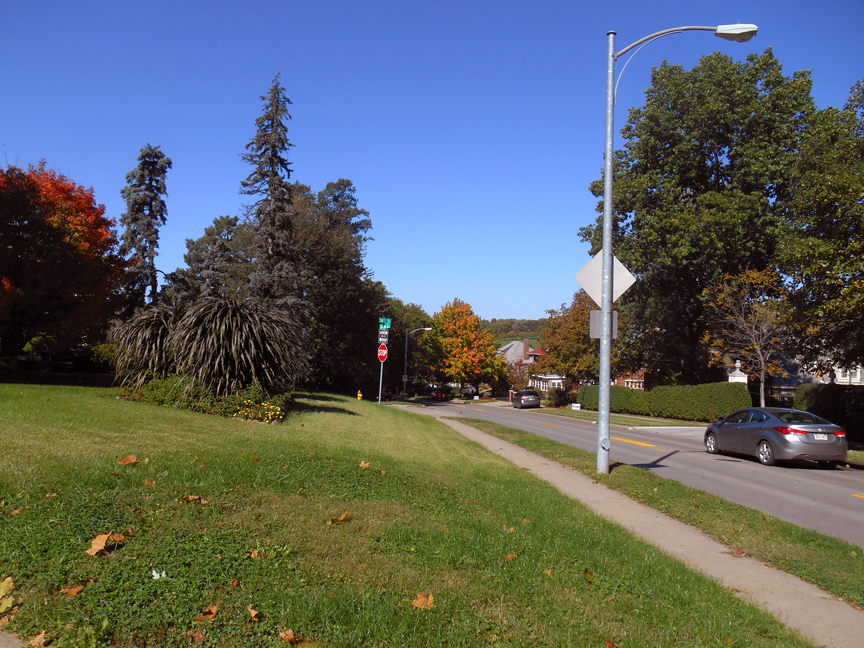
The 56th and Farnam “arrow” annual garden bed.
And there she sits, the asymmetrical Spanish Eclectic estate, with her solid brick and smooth, yellow plaster exterior and the classic green clay tile roof. You’ve seen her. Although constructed in the same time period as many of the surrounding houses, 302 South 56th Street is at once fresh, light and youthful compared to her cohorts. How does she do it? And there, hidden behind an enormous Spruce, is a beguiling porte-cochere, all the while remaining unpretentious. She is impossible. She has an airiness, a gaiety that is rare in Omaha. At times in passing I think I’ve seen the view of Memorial Park clear through the home, a payoff of her perfect placement of generous windows.
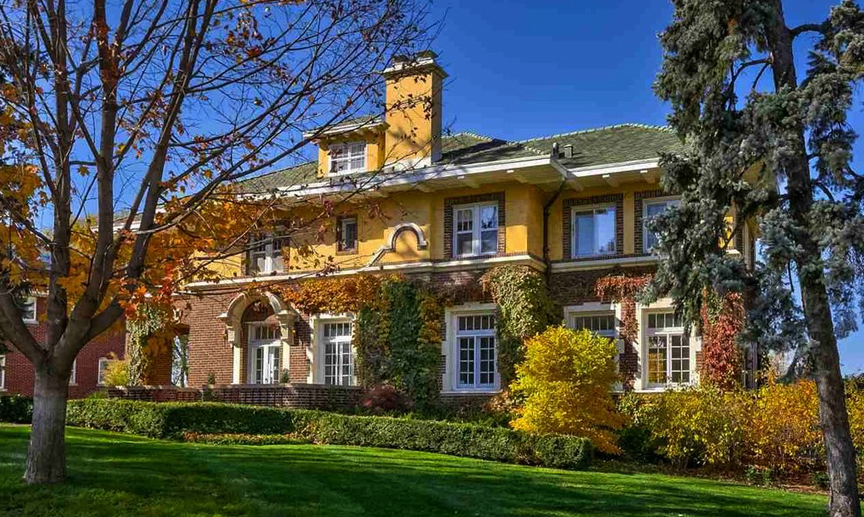
After all these years of spinning my girlhood fantasies in her honor, imagine my Nancy Drew delight when the newest owners of 302 South 56th Street reached out to me in hopes of authenticating the myths of their (my) dream home.
“Hello Miss Cassette,
I was curious if you would be interested in doing some investigating on my house. I have heard it was a speakeasy and a brothel in the 1920-30’s. It was a nunnery in the sixties. I have tried to pull up information but to no avail. There are great murals in the basement. The older lady, Mrs. McCarthy, next door just died at age 94 and had been in that house for 60 plus years. She told stories to the previous owners that they shared with us. Let me know if you would like to see it or talk…”
Goodness Gracious Sakes Alive! The chance to validate or debunk legends of yesteryear? Hmmm…Would I like to see it? Heavens. Nothing could keep me from this new exploration. I would pull on my best, vintage gumshoes.
The Evans Family
I suppose our investigation really begins with a tour of the Grand Dukes of South Dundee, so to speak. I just make these things up. I know you know. The R. R. Evans family. Yes, let us start there. Now Mr. and Mrs. Richard R. Evans had already stopped the presses for building an $8,000 residence at Thirty-eight and Jones back in 1897—a good chunk of change in those days and were conclusively positioned in the rising Omaha Country Set, if you understand these terms. How nice and what a lot! Years after, Richard’s brother, John Evans had famously left his business, the City Steam Laundry Company stock to Richard at his deathbed, which Richard later incorporated into the widely known Evans Laundry Company. In time the City Steam Laundry site at Eleventh and Douglas Streets would swallow up the Bryn Mawr College at 1013-1015 Douglas and expand ever more. According to Arthur Cooper Wakeley’s grand book, Omaha: The Gate City, and Douglas County, Nebraska, Volume 2, the Model Laundry enterprise, yet another professional laundry company, run by Millard Mahlon Robertson, would merge with Evans Laundry sometime in 1912, reincorporating again under the name of Evans-Model Laundry.
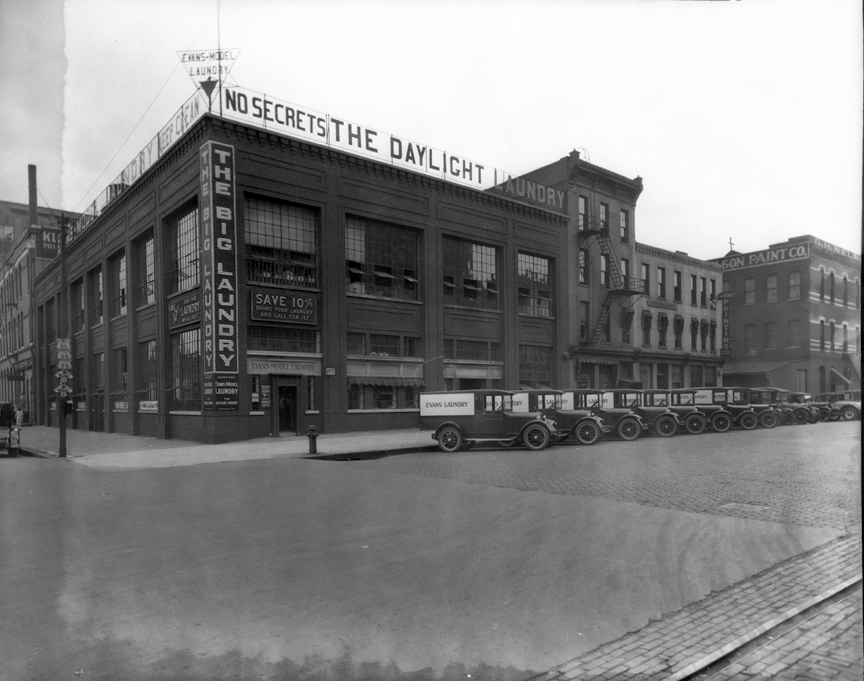
The exterior of the Evans Laundry Company at 209 South 11th Street. A row of company automobiles sit outside of the building and a sign on the top of the building reads, “NO SECRETS THE DAYLIGHT LAUNDRY.” Creator: Bostwick, Louis (1868-1943) and Frohardt, Homer (1885-1972). Publisher: The Durham Museum. Date: August 1927.
In September 16 of 1914 arrangements were being circulated for the development of the R. R. Evans’ district, “east of Elmwood Park and just south of the Happy Hollow addition in Dundee.” Evans would then purchase seven acres on Fifty-third street south of Dodge from Herman La Motte and an additional two adjoining acres from Alma L Motte Bull back in 1908. Why do I obsess? Here’s the catch, Mr. Evans already owned thirty-five acres abutting the newly acquired La Motte plots. He was thought to improve the land immediately and begin to build, “making it among the most valuable property west of Omaha.” Evans and his band of friends, to include J. E. George, were instrumental in cajoling the Omaha mayor and city council members into formal acceptance of the Parks and Boulevard System found throughout our city.
But bringing us back to 1914, the large Evans tract was being graded and divided into plots, thought to encircle the fine Evans’ home, valued at $22,000. This study was much of my winter’s work, scurrying and digging into the Evans clan for a story in my upcoming book. I pinpointed the Evans’ home finally to 303 South 56th Street.
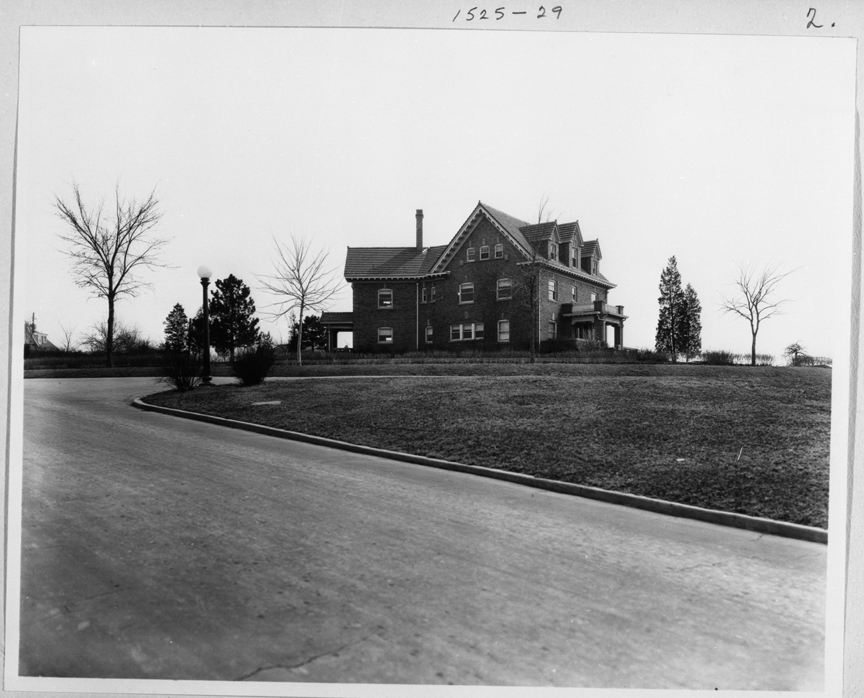
R.R. Evans home at 303 South 56th Street. Large three story brick home. Creator: Bostwick, Louis (1868-1943) and Frohardt, Homer (1885-1972). Publisher: The Durham Museum. August 18, 1921. Photographer is facing south. The tract of land in the immediate foreground is the previously mentioned “arrow.” An upper story of the 5505 Farnam Street home is seen on the far left edge.
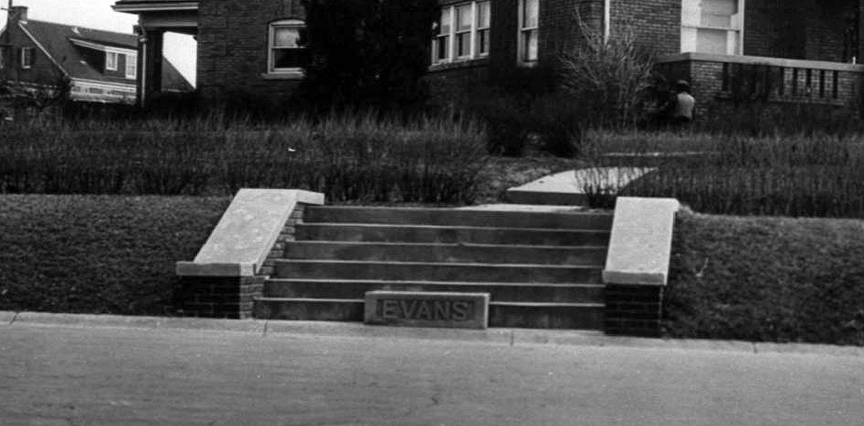
Detail of the Evans name on their front stairs from Farnam Street. These stairs are still found on the north side of the property, or some fashion of them, but the Evans name long gone.
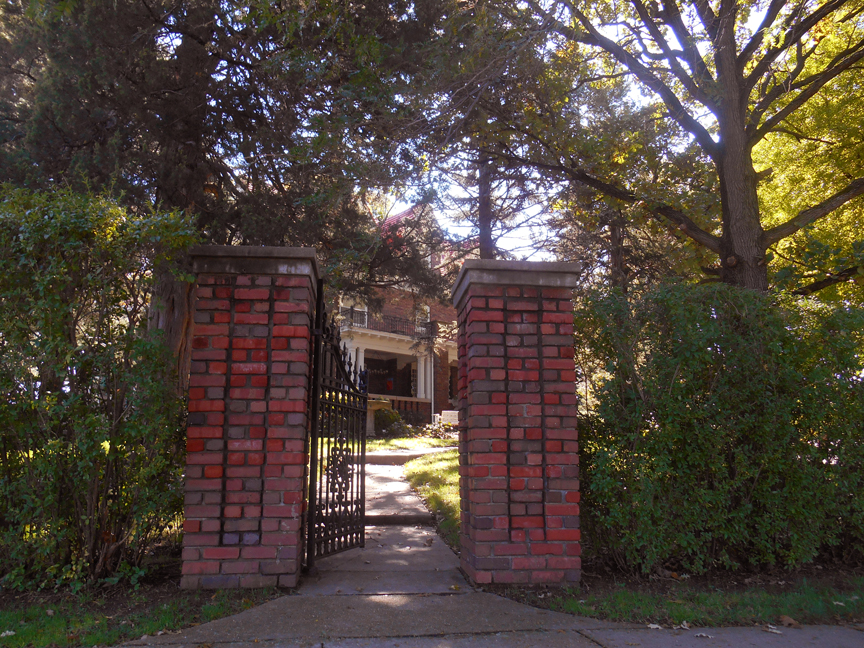
303 South 56th Street. How the Evans estate presents today. Even better with age!
World War I had just started months before and although America would not formally join forces until 1917, it was interesting to imagine why the Evans family would make arrangements to sell off their large family estate at this time. As it turned out, the timing was perfect. Omaha would annex Dundee on June 20, 1915 and the Evanston Addition was the planned development all along.

Evanston Addition and Evanston Addition Replat photo from the Douglas County Assessor site.
Evanston
In the fall of 1915 the Evanston ramp up really began with some of Omaha’s new money businessmen securing lots. Evanston was touted for its splendid location right off Lincoln Highway (now called Dodge Street) with beautiful views of both Elmwood Park and Happy Hollow Country Club golf grounds, which later became Memorial Park. “It is free from the dirt and noise of the city.” Personally I believe Evanston is one of, if not the most interesting development within Dundee. The winding, shady lanes off the beaten path are inhabited by some of the finest, most varied homes south of Dodge.
The rise of this prestigious Block 7 hill is even mentioned in my favorite local book Born Rich: A Historical Book of Omaha by Margaret Patricia Killian. Ms. Killian wrote, “Along Happy Hollow Boulevard south of Dodge Street and on the crest of the hills to the east were the beautiful homes of the families of W. T. Rance, John Latenser, Edward Garvey, Sam Reynolds, W. Dale Clark, Fred Bucholz, Fred Thomas, Senator Gilbert Hitchcock which later became the William Jeffries home.” These were some of the names I had already discovered on my sleuthing missions but these families would move to the area later. By the early 1920s most of the homes surrounding 5601 Farnam had been built. This collection of homes in the Evanston neighborhood was thought to be one of the city’s most exclusive districts.
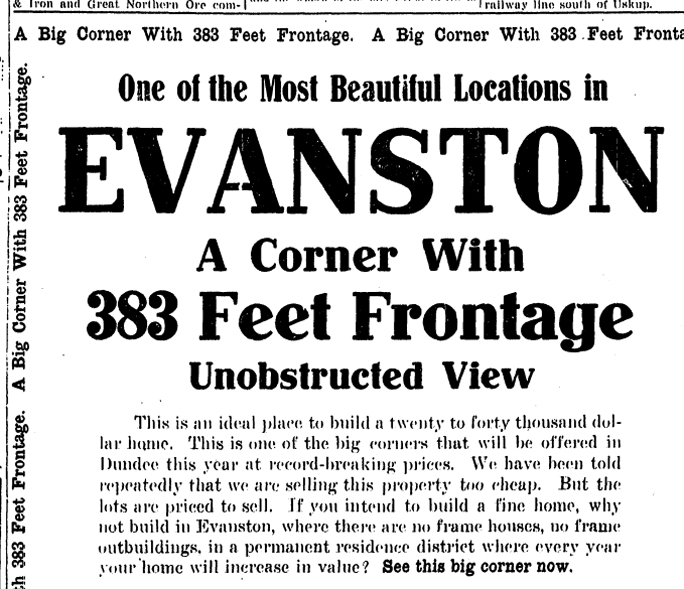
Evanston Advertisement from October 1915. OWH archives.
Early Plots
There were a number of fascinating property details I had to square away. My discoveries at the Deeds Office along with World Herald articles led me to believe the Evanston Addition was initiated in September of 1915. Richard R. Evans and his wife sold Lots 1, 2, and 3 of Block 7 around that time. These three lots remain directly to the northwest of the large Evans’ estate. Lot 2, of which the 302 South 56th Street is squarely situated, was sold to a George Wilson back in May of 1915. A barren lot, who knows what plans Wilson had up his sleeve? A few months later, Mr. Wilson purchased Lot 1 from the Evans couple– a bit further down Farnam, one door to the west, now considered 5609 Farnam.
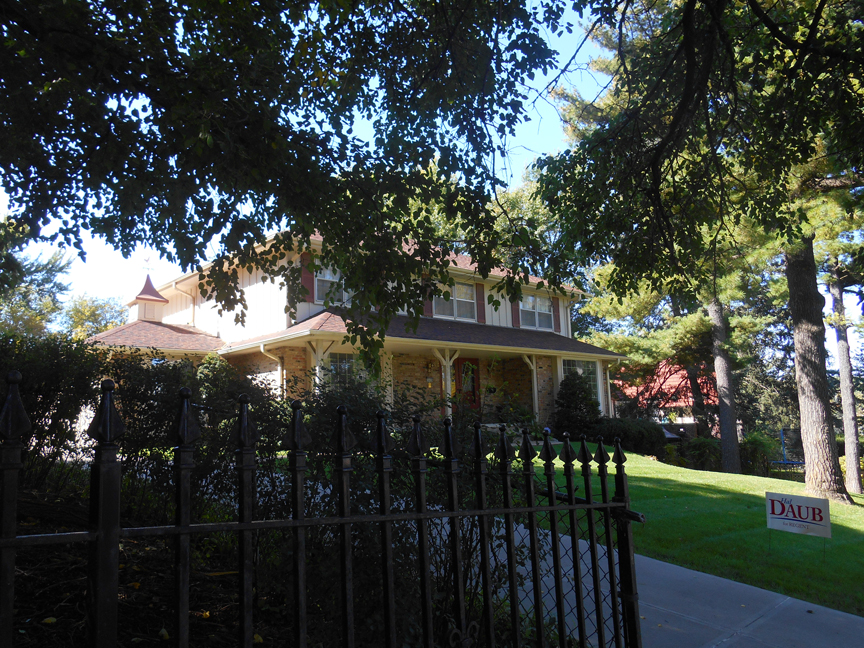
5609 Farnam Street as it looks today. This Raised Ranch was built in about 1968.
The 5609 Farnam house, obviously a young pup, architecturally speaking in this older, wiser neighborhood, was not built until the late 1960s. Meanwhile Lot 3 was sold in October of 1915 to Mr. Mathew A. Hall. Lot 3 would change hands a number of times, eventually ending up in C. L. Gould’s name. Like Lot 1 a home was never constructed on the property, leading me to believe these were wise investments in the new Evanston. In April of 1919 a mysterious Adelaide A. Huff acquired Lots 1, 2 and 3 from the various owners, according to the Register of Deeds office. (Thanks to my new friend, Detective Mary at the Register of Deeds office for printing out some records to help on this case.)
The House Doubt
302 South 56th Street gave me much trouble early on. It is listed with the County Assessor as Evanston Addition: Lot 2, Lot 3, Block 7. Year built 1922. 4,3060.0 sq ft. Upon excavating through the Omaha City Directories I found no listing for that address, causing me to follow a different path. My later hunch was correct (it has only taken me two and half years to learn these things, after all); the home was originally assigned address 5601 Farnam Street. We will call it 5601 Farnam from here on out until its transition. I found evidence that the home was actually nearing completion in September of 1920, not 1922.
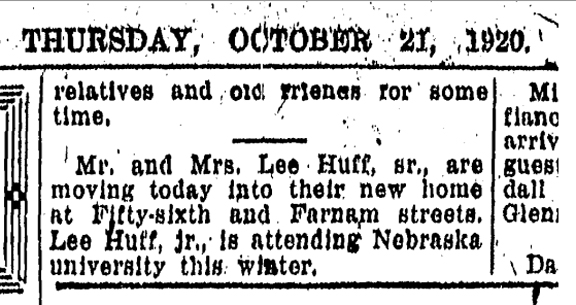
October 21, 1920. OWH. The Huff family moved in to newly built 5601 Farnam Street and by December of that year I found them entertaining more than ten other couples with dinner and dancing at the new home. And dancing, to me, implies a live band of sorts. It must have been so lively. The Huff residence was the talk of the town, considered one of the most expensive Omaha homes built. The papers listed its impressive cost at $75,000—just short of a million dollar home by today’s calculations.
Clues to Lee Huff Sr.
Born in Hooper, Nebraska, Lee Huff was raised in Fremont where he entered the workforce and began earning a wage from the telephone company by age 16. At 21 years he had raised to Manager of the Nebraska Telephone Company in Crete Nebraska, later transferring to Grand Island and Lincoln, each step of the way being promoted within the telephone business. From the Nebraskana Society website I learned young Lee Huff was the son of two Scotch-Irish descendants. I share this clue because it is probably more telling of a hint than any. His father was one of Nebraska’s foremost public men, James Huff. James Huff, a Newfoundlander, came to the United States as teen. He had an illustrious resume– serving as clergyman to the Nebraska Penitentiary, a farmer, worked in the freighting business for the government, justice of the peace, police judge, county judge and clerk of the district court in Dodge County, and later served as a member of the Nebraska State Senate. In later life I would find him as a preacher for the Latter Day Saints’ Church in Papillion, where he became Elder Huff. Lee Huff’s mother, Laura Ellen Driscoll was born in Iowa and raised in Sarpy County, Nebraska. The couple had five children; Lee Huff was their oldest.
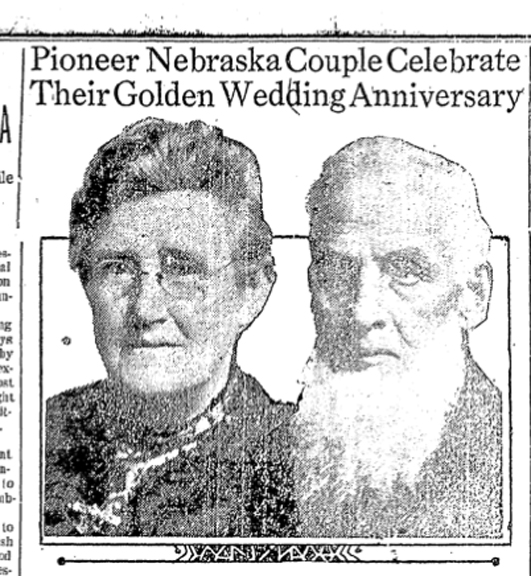
April 1919. Omaha Bee. Elder Huff and Mrs. Laura Ellen Driscoll Huff upon the occasion of their anniversary. Mrs. Laura died in her home five months later at the age of 70.
Lee Huff had already begun buying plots of land and developing property in Grand Island but by 1906 I found evidence of “L. E. Huff and husband” selling property to Lee Huff in South Omaha. I assumed L. E. stood for Laura Ellen, his mother. This exchange appeared to be Lee Huff’s ingress to Omaha Real Estate. Within two years Huff would enter into the automobile business where he would find his passion and make a name for himself nationally. We will touch on that in a bit.
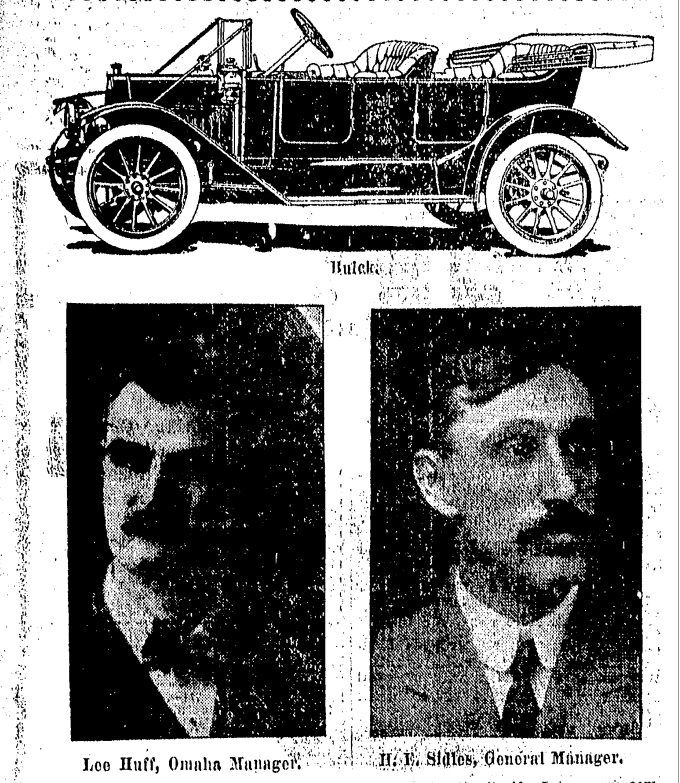
February 19, 1912 Huff and the Buick advertisement. File away the name H. E. Sidles, detectives.
The Huff Family
Lee Huff married Pennsylvanian Adelaide Amanda Keasy in 1895 according to the Nebraskana Society. (The 1920 US Census registered them as married in 1897). The couple would have one son, Lee Jr. in 1899. At some point Lee Jr. was nicknamed Tim. Let us call him Tim from now on, hopefully in an attempt to keep us all straight. For you see, Tim, in time would also have a son named Lee Huff the III and things can get gobbledygooky around here all too quick. The family had sold their Fairacres home in October of 1918, perhaps in preparation for their Evanston triple lot purchase months later. They would move into the Adelaide in Dundee. But before you assume they were throwing their pennies away on rent, the Huffs owned the Adelaide and Leeton Apartments in Dundee. In fact the “Adelaide” and “Leeton” were named after Mr. and Mrs. Huff. These were in the 49th and Dodge area. To give an indication as to their posh lifestyle, in January of 1920, Mr. and Mrs. Huff, along with Elder Huff and an additional friend set their sights on a journey to Los Angeles where they rendezvoused with another friend for a tour of Southern California. They hoped to return in April in expectation “of their beautiful new home at Fifty-sixth and Farnam streets to be almost ready for the final touches.” Tim was left to his studies at University. The 1920 US Census showed the Huff family living in the apartment, no doubt waiting for their gorgeous home to be built. Lee Huff was then 47 years old, his wife Adelaide was 42 and son Tim (listed as living with his parents) was 20.
The James Allan Connection
The previous owner told the current owners that Architect James Allan was responsible for the design of 302 South 56th Street/5601 Farnam Street. However the Huff home was not listed on Allan’s register of homes, meanwhile many commercial buildings owned by Huff were included on Nebraska State Historical Society’s inventory. Sure enough, when I looked into James Allan, I found buildings with obvious association such as the Lee Huff Flats, the Lee Huff Apartment Buildings and Lee Huff Garage all constructed in Grand Island. But things weren’t exactly adding up and there was no definitive relationship with 302 South 56th Street/5601 Farnam Street and Allan.
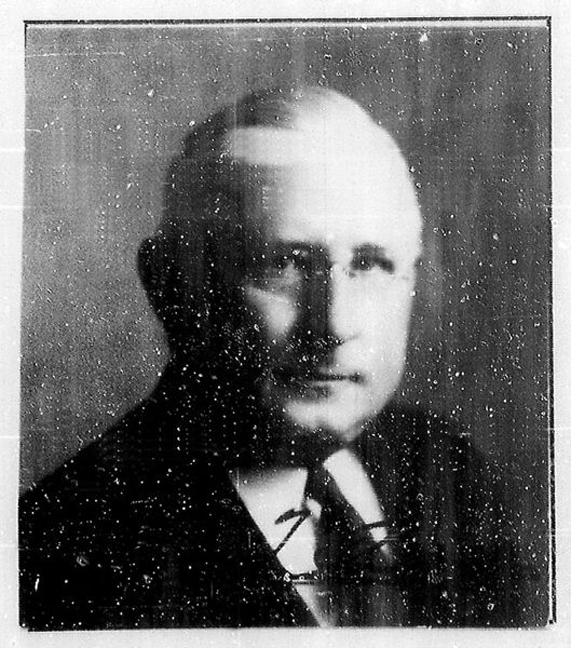
James T. Allan from the Nebraska State Historical Society: Architects site.
Grapevine: The previous owner and new owner had joked that the third floor attic of 302 South 56th Street/5601 Farnam Street had possibly been a ballroom, as was custom in some prestigious, older homes from this time period. Of note, apparently the flooring of the Evanston home is poured concrete; the house was constructed of steel and concrete similar to a commercial building. These details only served to lend credence in the belief that James Allan, commercial designer, was behind this fine, solid home. I would find the ultimate architect’s clue when I pursued Lee Huff’s automobile legacy.
The Nebraska Buick Company
The Nebraska Buick Company found its origin in 1908 when H. E. Sidles and Charles Stuart of Lincoln, R. H. Collins of Kansas Cit and Lee Huff of Omaha paid in capital of $50,000. Apparently when Mr. Huff opened his very first office, he had desk room only with the Defiance Starch Company. He later located to the Bachelor Hotel at 2020 Farnam and used E. P. Peck’s barn at 18th and Davenport as his storage-showroom. By 1919 Nebraska Buick was considered among the strongest automobile sales organizations in the whole United States.
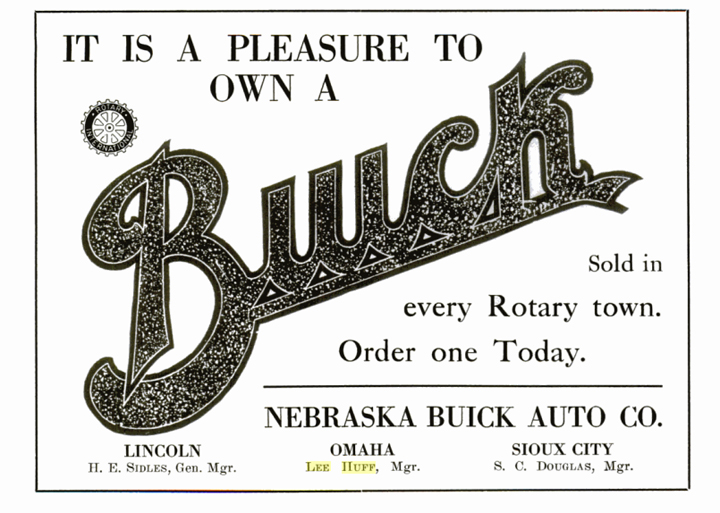
1915 Buick advertisement.
The Buick Building
It was then that I uncovered Joseph G. McArthur (1887-1934), Architect. It is interesting to consider that one of McArthur’s first designs, the Nebraska Buick Motor Sales Station and Garage at 13th and Q in Lincoln, was also a Lee Huff related project. “Huff was among the principals of the Nebraska Buick Company, for which McArthur designed a large sales room and garage in Lincoln and for which McArthur superintended construction of a similar, smaller facility in Omaha, designed by Paul V. Hyland.”
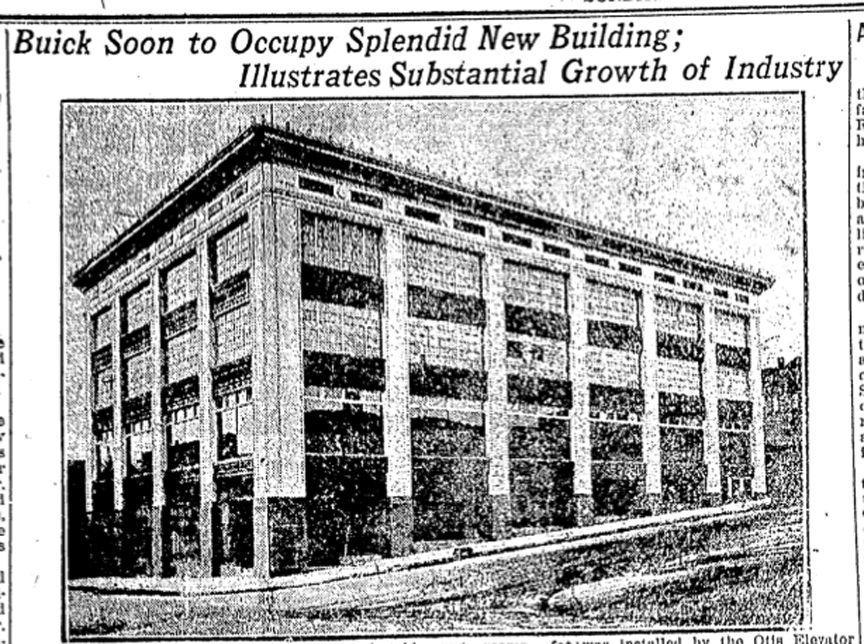
January of 1919 the OWH ran a story about the classic Nebraska Buick Automobile Company at its new home on 19th and Howard Streets. Four stories and a basement, the Buick building was considered “the acme of perfection as an automobile home.” The structure featured a pink granite base, with rich cream terra cotta and ornamental metal panels. Rich tapestry was said to adorn the huge display windows covering both 19th and Howard Street sides. Paul V. Hyland designed the structure with J. G. McArthur his supervising architect.
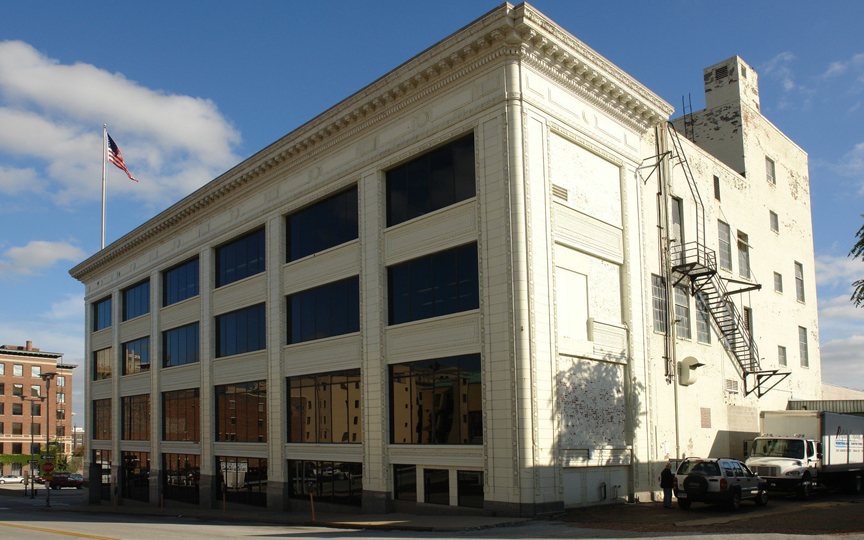
The Redfield & Company building, once the Buick building, as it appears today. Hyland and McArthur’s stately building was later renamed the Redfield & Company building, the home of the Redfield Printing Company. The Company has since moved on. I can attest it is still gorgeous AND it is apparently for sale. It can be found at 1901 Howard Street.
Joseph G. McArthur
Joseph G. McArthur was born December 2, 1887 in Evanston, Illinois; his Scottish father, William was a builder. Joseph McArthur would move to Lincoln, Nebraska where he worked on the Terminal Building in 1915-1916, “on behalf of Paul V. Hyland of Chicago.” He continued to work with Hyland in Lincoln before moving permanently to Omaha, where he worked independently under the moniker of J. G. McArthur, Architect from 1918-1932. His more famous buildings in Omaha are the Paxton Hotel at 1407 Farnam, the Redick Tower at 1504 Harney and his stately Medical Arts Building at 17th and Dodge (demolished in 1999). McArthur had completed a small quantity of high quality commercial buildings in his portfolio, dying suddenly at the young age of 47 after a brief illness. He is credited with very few residences but as it turns out one of the finest homes in Omaha was a McArthur original. I joyfully found “Residence and garage for Lee Huff (1919), 56th & Farnam Streets, Omaha, Nebraska” in the History Nebraska records, cited from “American Contractor” magazine (September 6, 1919). I knew I had struck gold.
Then I remembered that the Dundee Memorial Park website so generously offers all historic building permit files for homes in the neighborhood. I was able to find two permits for Lee Huff both under Joseph McArthur’s name, further locking down his claim to the design. Victory!
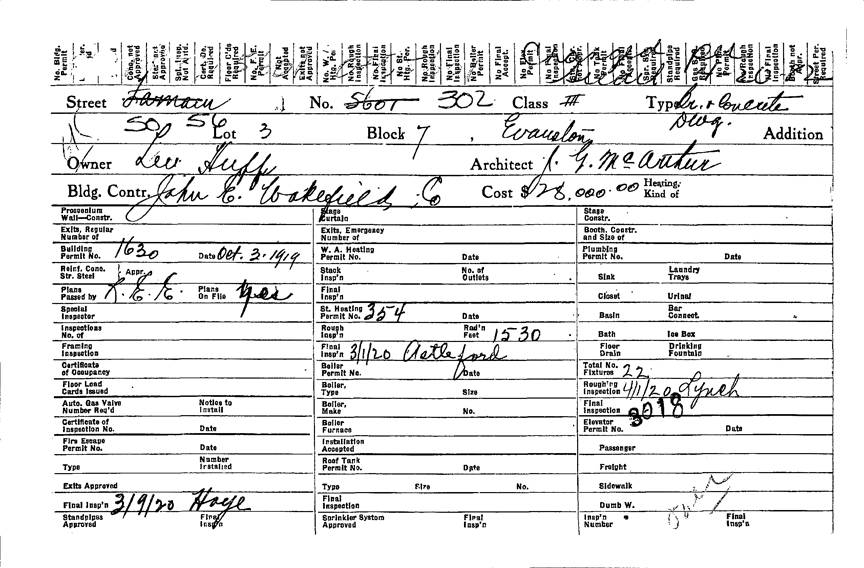
302 South 56th Street building permit was acquired in October of 1919. John E. Wakefield Company built the house under Architect J. G. McArthur. The last inspection on the home was on April 1, 1920. One can observe that 5601 Farnam was scratched out and 302 South 56th, written in. In the top right corner someone wrote “Changed per Siedel(?) 4-20-82” I am not sure what that word is, most likely a city official’s surname. By cross checking with the historic city directories, I found the house address had transitioned in that year.
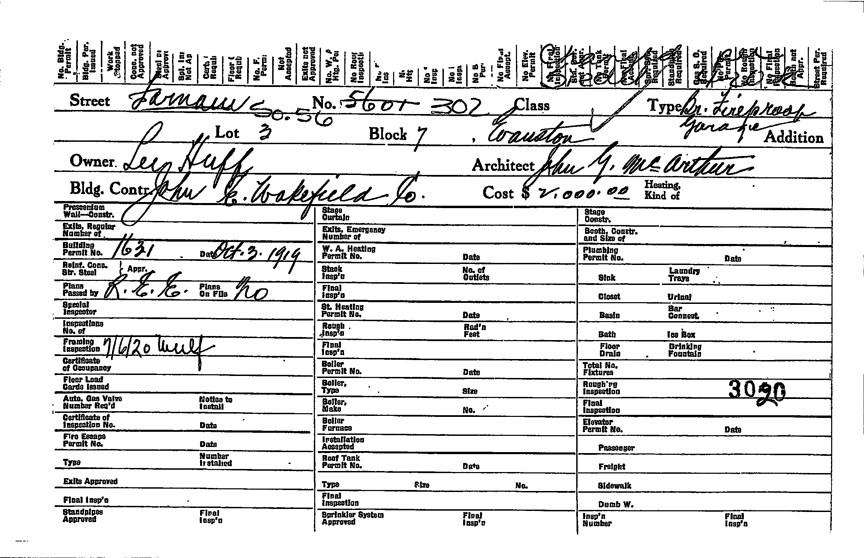
Garage permit. At a cost of $2,000, it looks like the garage was being built in July of 1920.
Spanish Colonial Revival Style
302 South 56th Street/ 5601 Farnam Street was designed with influence borrowed from the Spanish Colonial Revival or the Spanish Eclectic style with nods to the Mission style as well as traces of Craftsman and Prairie. Between 1915 and 1931 the Spanish style of architecture had its rise to fame. Bertram Goodhue is credited with exposing the country to the Spanish Colonial through the Panama-California Exposition of 1915 in San Diego. McArthur appeared to have taken some cues from both the Spanish and Mission style, using these design elements to adorn his home where even Craftsman and Prairie hints can be found. According to A Field Guide to American Houses by Virginia Savage McAlester, “World War I (1914-1918) caused architects wishing to study and sketch in Europe to concentrate on Spain. There they found a centuries-long and very rich sequence of architecture traditions that they could meld into the quite varied Spanish Revival.”
Spanish Eclectic architecture is really a combination of detail from several eras of Spanish Baroque, Spanish Colonial, Moorish Revival and Mexican Churrigueresque architecture, according to The Visual Dictionary of American Domestic Architecture by Rachel Carley. The smooth stucco wall and chimney finish of 302 South 56th, her low-pitched clay tile roof and hidden balcony hint in this direction. Minus the customary parapets and large covered, stucco porch, McArthur’s design also nods to the Mission style of California and New Mexico.
The Bostwick Portfolio
The following historic photographs were lent by the owners. They were captured by local photographer, Louis Bostwick. This was a time when a family of stature would hire a photographer to document their architectural achievement and sprawling grounds. These are stark and breathtaking images. One can imagine what a shocking beauty 5601 Farnam must have been when she was completed.
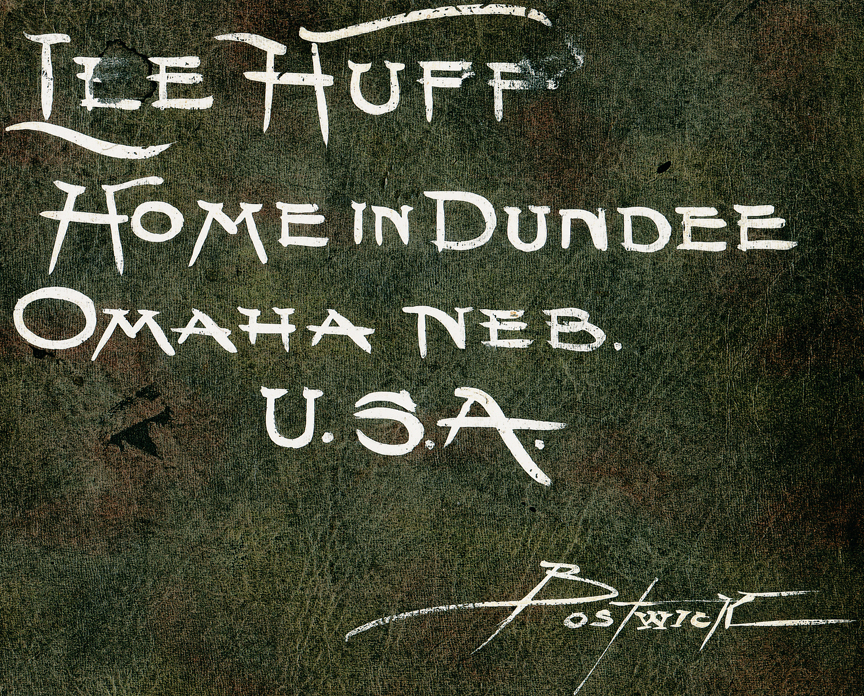
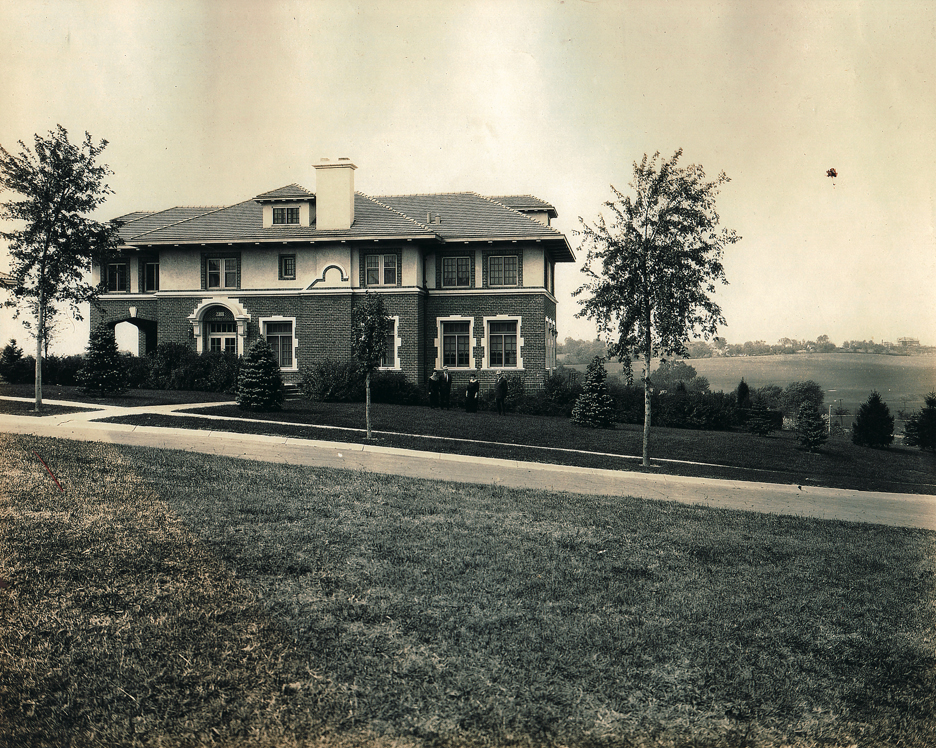
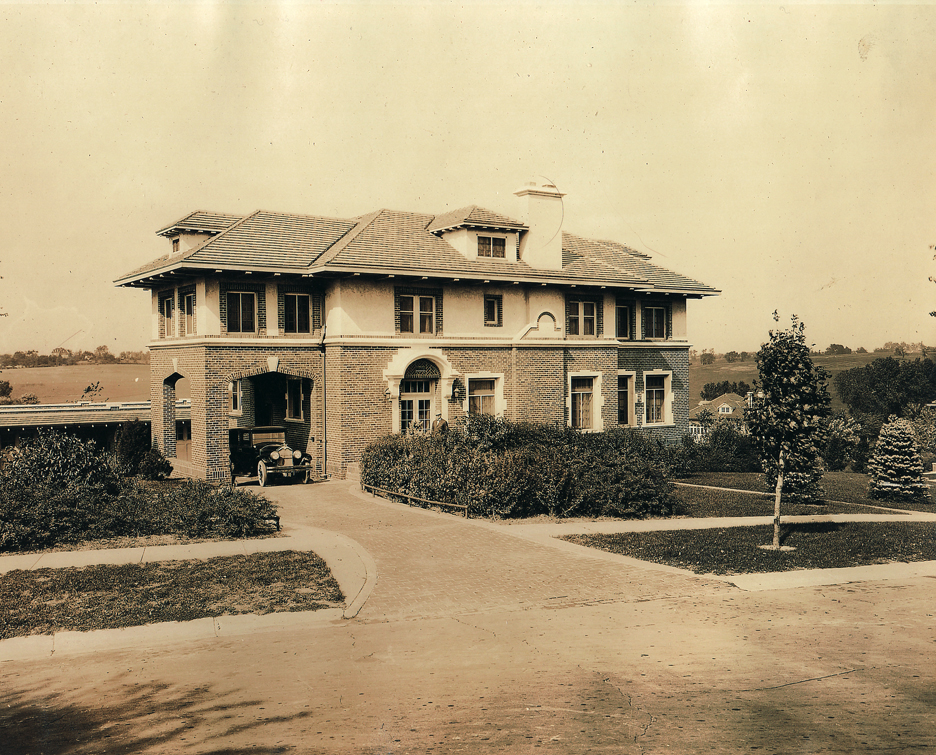

Stake Out Days
What follows are a series of exterior photos I took over the course of the investigation. Some were rainy, (please pardon) and some were taken on sunny, perfect fall days. Nothing can compare to Bostwick’s photos so please excuse my feeble attempts to capture my recon mission findings.

Notes to self: What really takes my breath away are the series of wings found on both north and south sides of the front elevation. Like a pop-up book. Dramatically carved stonework doors are typical of Spanish architecture. Green clay tiled roof. Series of low side gabled roofs. Asymmetrical, front facing chimney gives a casual, European feel. Off center door sends the same message. Gabled roof dormer window with exposed rafter ends. Six over one double hung sash windows. Hood molding, drip lintels above the main floor windows. Is that Limestone quoin around the windows? Arched hood molding above the door and the door that mimics the main floor windows-at once casual. Spanish nonchalance.
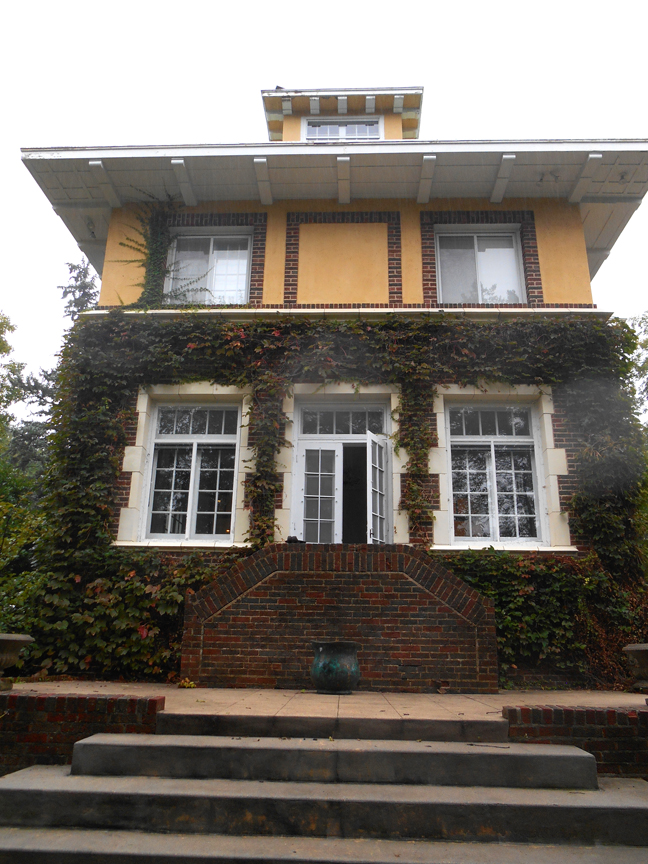
North elevation. Exterior of the sunroom.
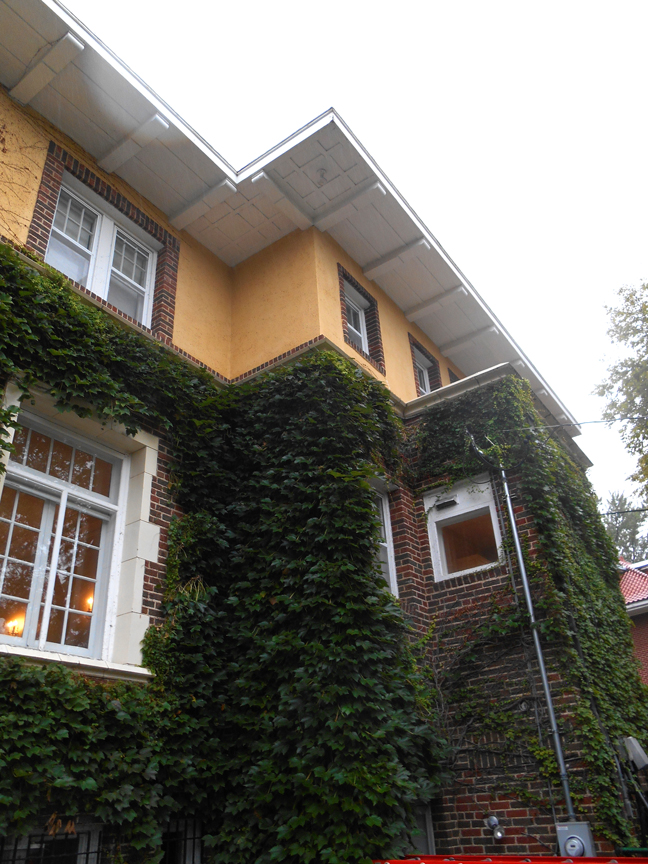
Western elevation. Brick masonry. Stately carved stonework casement windows.
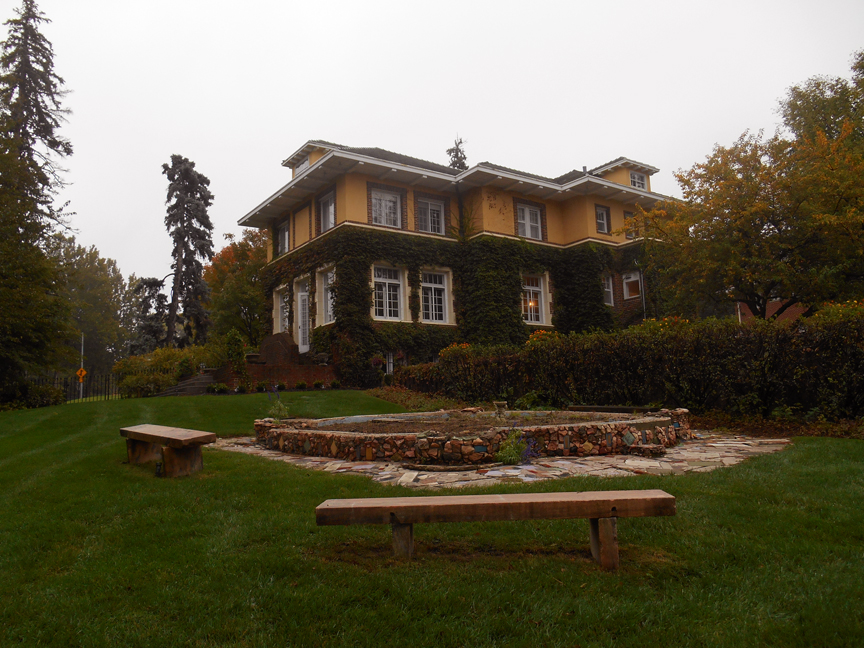
Western facade.
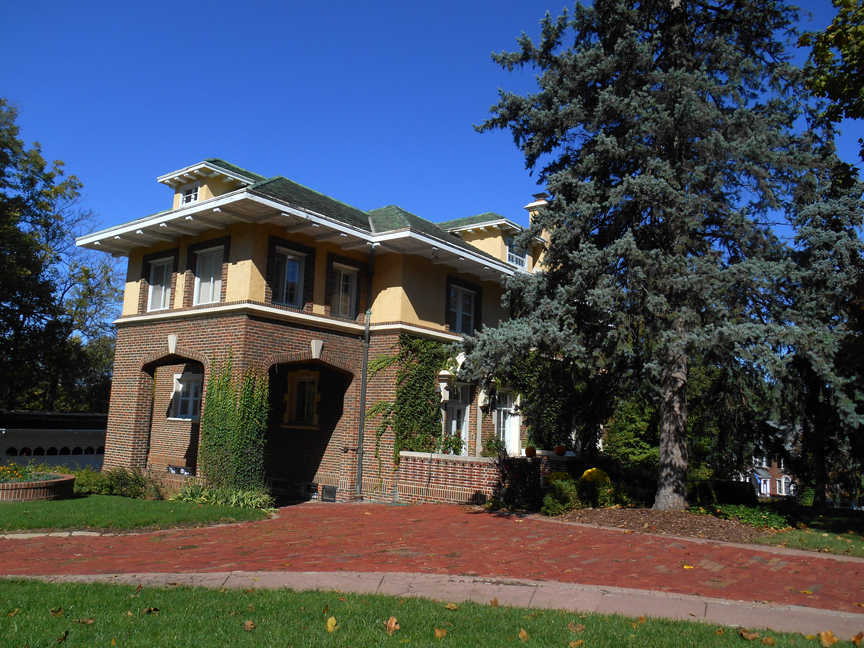
Nice, unexpected but welcomed touch of the porte cochere.
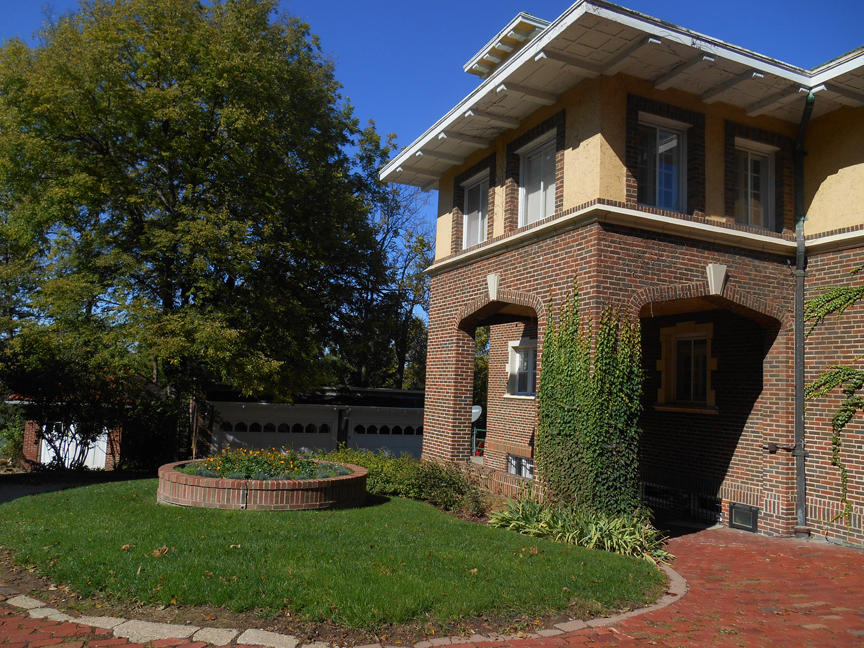
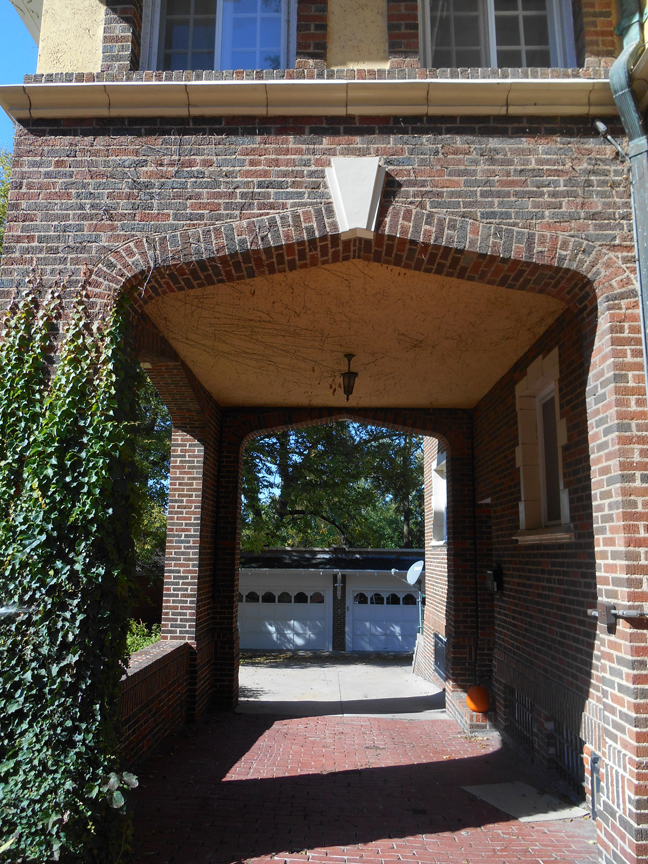
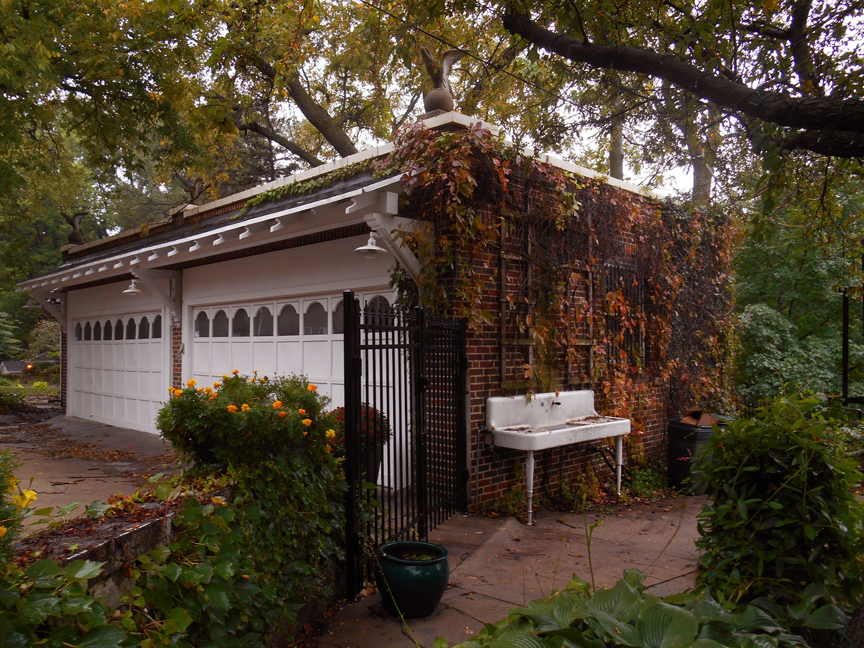
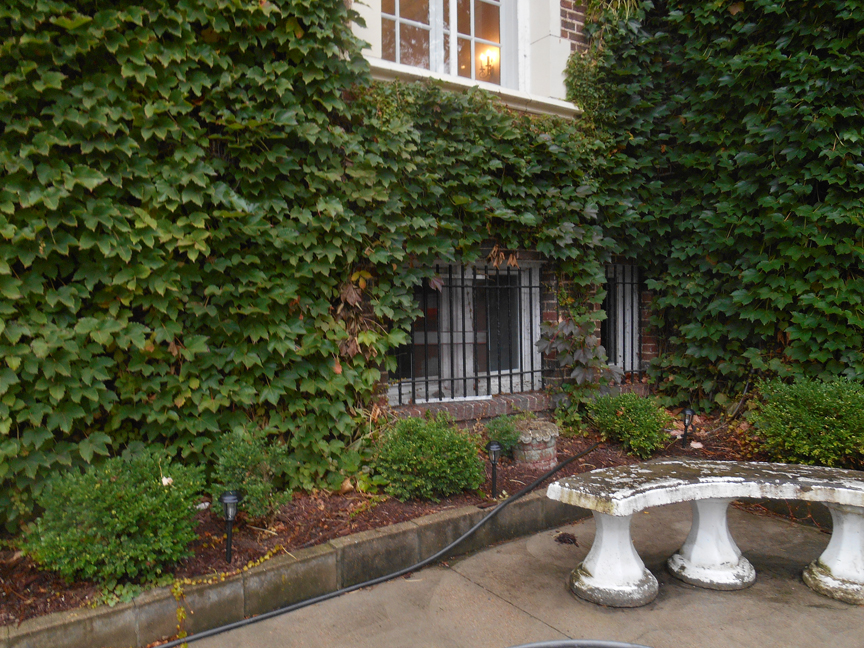
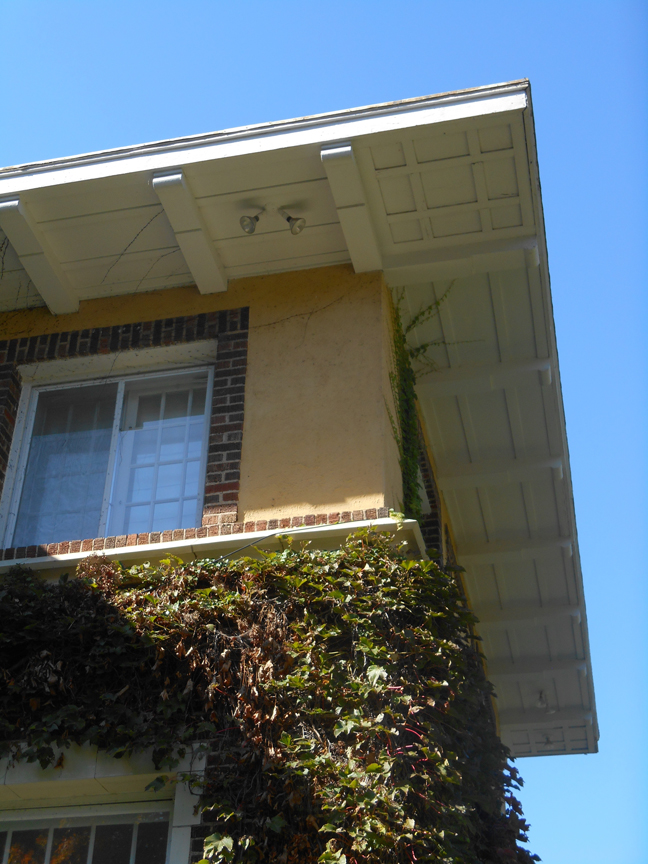
Wide overhanging eaves with Craftsman or is it Prairie style detailing underneath? Amazing.
The Huff Social Whirl
Lee and Adelaide Huff were Upper Class Clubby but in that, both seemed to truly be fond of the company of others. I would find their inner ring of social contacts revolved around the same names for their life spans, which is telling. Aside from his prominent role in the automobile industry, Mr. Huff was also vice president of the Union Holding Company of Omaha. This organization owned a number of radio stations. He also acquired an interest in the Brictson Manufacturing Company, a tire factory. He was an active member of men’s organizations the Rotary Club, the Elks, the Masons, the Nebraskana Society and social clubs the Omaha Athletic Club and the Happy Hollow Country Club. Like his parents Lee was affiliated with the Reorganized Church of Jesus Christ of the Latter Day Saints. Through the wonderful Nebraska resource, http://www.usgennet.org/usa/ne/topic/resources/, I would trip across “Mr. Huff finds his recreation in golf and swimming. His hobby, however, is upland river navigation.” Pray tell! I was incredulous to find that during the World War (I) he was in the United States Secret Service. He was an older gentleman by then and his name was mentioned daily in the local papers for business and social ventures during the US’s involvement in the war. The timing did not seem plausible. But who am I to question these matters? People seemed to be able to accomplish an excessive amount of tasks back then.
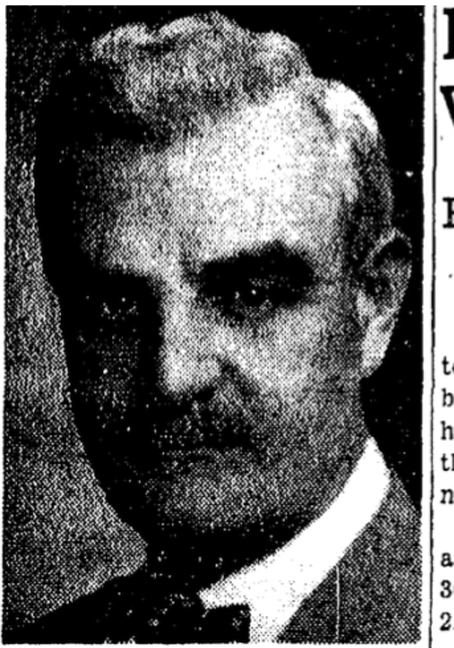
Our man, Lee Huff, Sr.
Without a doubt, Adelaide Huff was the consummate hostess and gentleperson of taste. She was an ongoing chairman for the Red Cross auxiliaries during World War I and well respected when she stepped in and managed the Nebraska Buick Automobile Company while her husband was convalescing in the hospital for sixty days following an operation. Her large dance party invitation to celebrate their new home at 5601 Farnam was but one of a long series of Huff Dinner-Dance parties. Then there were the fifty plus Bridge-Luncheons she threw for the ladies who lunch. My word. Mrs. Lee Huff was featured in an article on Buffet Suppers and Buffet Luncheons for her bellwether directive in “letting everyone help themselves.” Thought to be a new trend in the social future of Ak-Sar-Ben week, Mrs. Huff, “a frequent house-party hostess” was consulted on how to handle an ever-growing guest list with grace and style. Do I need to mention that Adelaide left early every summer since 1921 for the ritualistic Opening of the Huff Summer Cottage at Lake Okoboji. She didn’t miss a beat. I just want to sit here and sigh with this image.
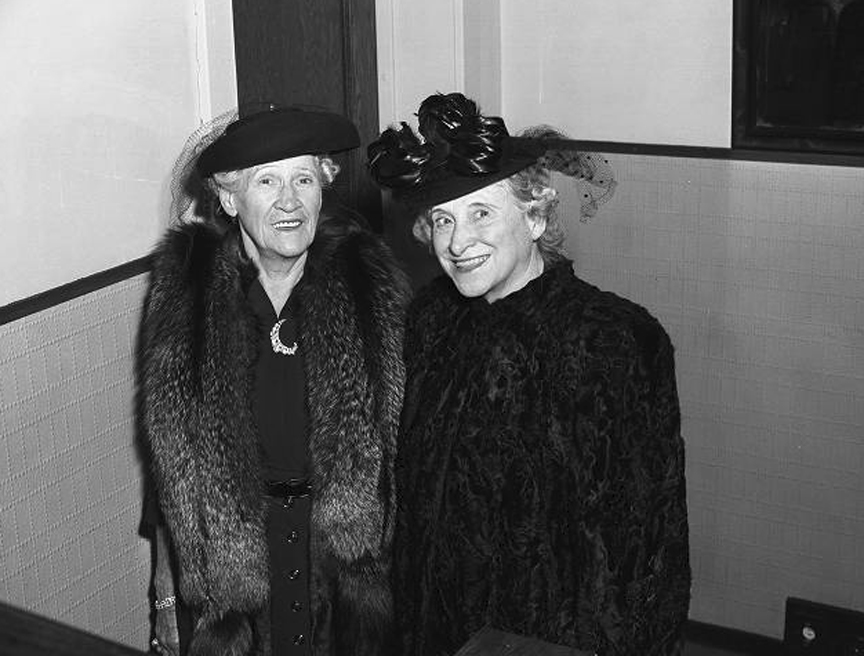
Mrs. Lee Huff Sr. (on the right) standing in a stairwell with Mrs. A.L. Steidl. I pondered for a moment if this was a misspelling of Mr. Huff’s business partner: Sidles? Alas, this was another friend, indeed Mrs. Steidl. Creator: Savage, John (1903-1989) Publisher: The Durham Museum.
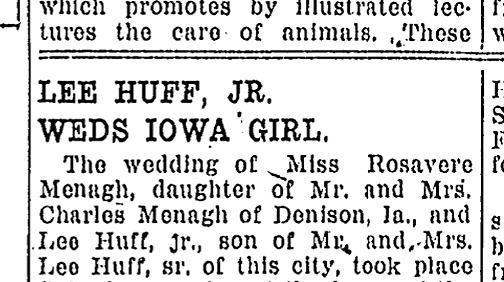
OWH Oct 1921: “Lee Huff, Jr. Weds Iowa Girl.” Miss Rosavere Menagh of Denison, Iowa and Lee “Tim” Huff, Jr. met while students at the University of Nebraska. The couple was wedded in the home of the bride’s parents. Of interest, Lee Huff, Sr. served as his son’s best man. After November 1, the newlyweds were to live in the home of the groom’s parents at 5601 Farnam over the winter. Upon his return, Tim Huff was thought to join his father’s business. Mr. and Mrs. Huff, Sr. were expected to winter in California, leaving the home to the young couple.
I always hunger to know servants’ names and additional people rooming in homes other than homeowners. Why? It must hearken back to my Upstairs, Downstairs Obsession. Librarian Mark Sorensen helped me so much by printing off a list of tenants from the Ancestry Library edition. This time the list didn’t supply many mystery names but there were a few. In 1921 maid Marie Steiner lived in the home with Lee, Adelaide and Tim. Interestingly through this Ancestry Library printout I would find my first indication of son Tim, “Lee Huff, Jr.” living in the home off and on throughout 1923-1925. The City Directory showed 5601 Farnam registered under Lee Huff. He was then Vice President, Manager of Nebraska Buick Auto Company. His son, Tim was listed as a sales manager at the same location on 19th Street.
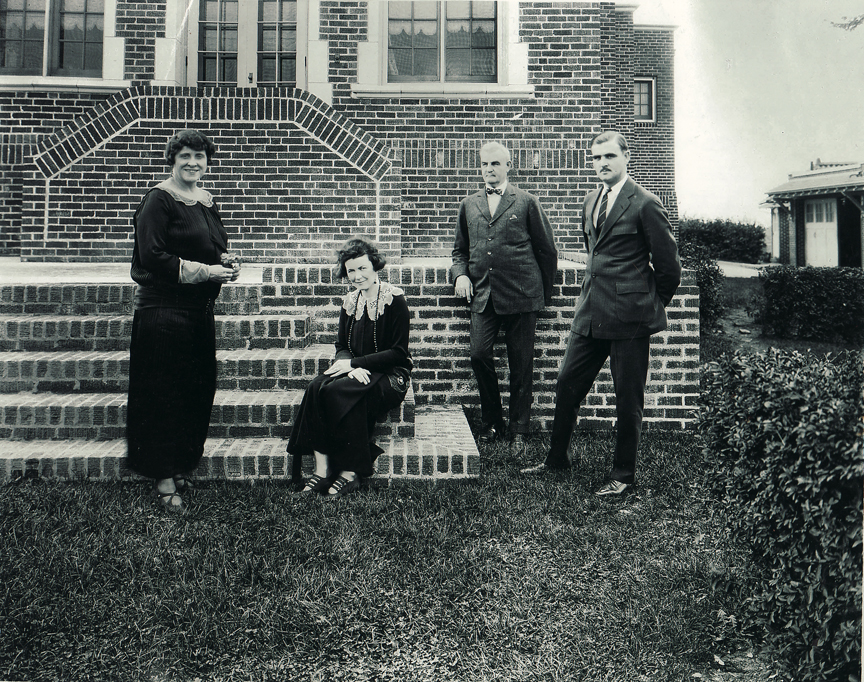
Photograph lent by owner. Photo by Louis Bostwick taken on the north side steps, previously depicted. Written on the back: “Left to right Adelaide Amanda Keasy Huff, Rosavere ‘Babe’ Menagh Huff, Lee Huff Sr., Lee ‘Tim’ Huff, Jr.” I just adore this photo. We have a Babe in our Cassette family too.

The dramatic parlor room. Possibly my favorite clue of the whole bunch. I could stare at this all day. Note the stairwell reflected in the mantel mirror. Strange. How? Also file away in your notebooks the various chandeliers. Photograph by the amazing Louis Bostwick, lent by the owners.
New Evanston Neighbor
The soon to be neighbor at 304 South 56 Street, one door to the south filed a building permit in May of 1922. Pearl Rockfellow hired architect Leo P. Daley to design the solid brick home under building contractor J. F. Creedon. Miss Pearl, a lifelong single socialite lived in the home of her design until her death at the age of 73 in 1951. This is the home that Mrs. McCarthy would later move into. She was the neighbor woman who shared so many of the treasured tales of 5601 Farnam with various owners.
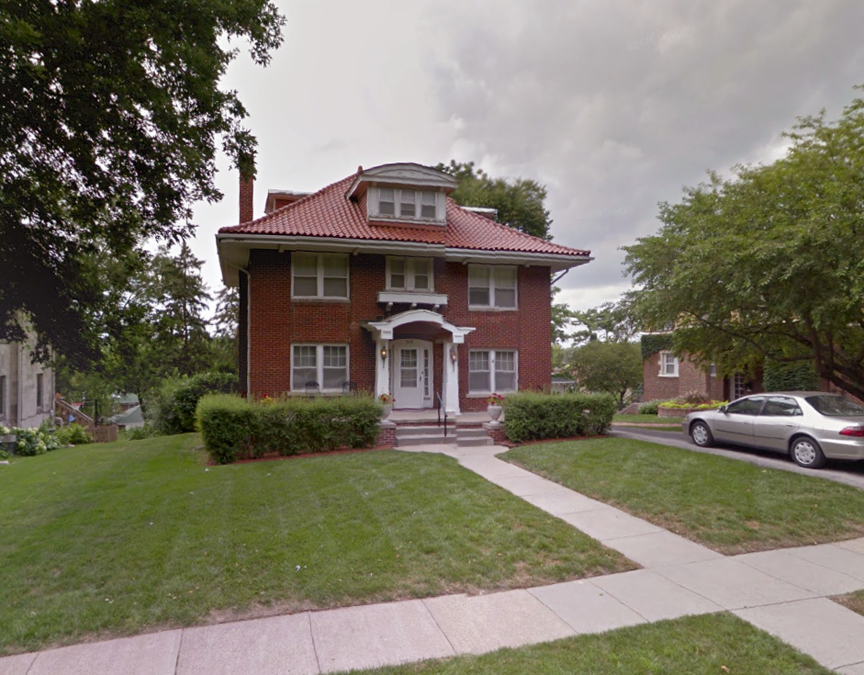
304 South 56th Street. Photo from 2014.
The Christmas Lights
In Social Affairs of 1924, the Huffs were given credit for bringing the Christmas lights concept to Omaha. These are the kinds of discoveries that make the detective’s trail so much fun. There was a national debate as to whether fir trees should be cut down for the purpose of an interior Christmas decoration. The article made note that Omahans had began to decorate outdoors with lights, wanting to share the Christmas spirit with those passersby. But it was the Huffs who started the Omaha trend. “Mrs. Huff had seen the lighted trees during a visit to the New England states. When they built their attractive home at 5601 Farnam Street, Mr. and Mrs. Huff not only arranged for one Christmas tree but three. This will be the fifth year they have followed the custom.” Expected to use some 500 red and green lights, Mrs. Huff was quoted as saying she got “the same thrill out of my outdoor tree as I got the first year.” She added that she planned to have an indoor tree extravagance for her five-month-old granddaughter, Miss Saralee.
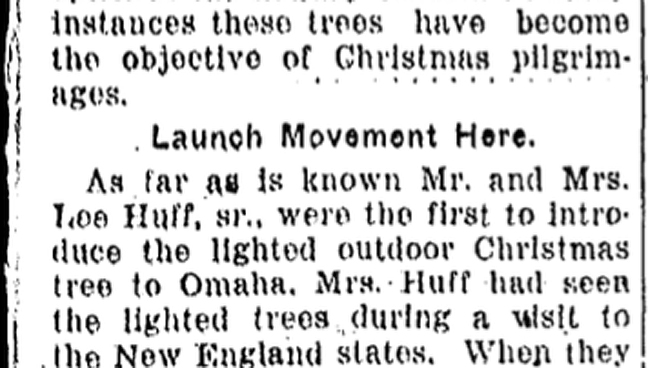
The Huffs Move
Although it is unknown why Lee and Adelaide would leave their beautiful home at 5601 Farnam, they did indeed put the house up for sale with plans to go to California in the winter of 1925. They were “undecided as to their future residence when they returned to Omaha.” Tim and Rosavere Huff, along with little daughter Saralee were granted permission by the Seniors Huff to live in the large home from February of 1925, until the home sold. From the Deed Record I could see that Albert L. Schantz purchased the home on April 15, 1925. The Parents Huffs would eventually return to Omaha in May to live in the Colbert Apartments.
The Speakeasy Scuttlebutt
The current owners of 302 South 56th Street-5601 Farnam were privy to folklore handed down through previous owners but also the McCarthy family who lived next door. The whisperings were that Lee Huff had a mistress who operated a bordello in Downtown Omaha. They say he moved her enterprise, part bordello-part speakeasy into his own basement for easy access of the construction workers in the new Dundee area being built up around them. It was a moneymaking venture. The walkout basement with solid door, an oddity for that time period, was further evidence. But the tangled myth continued–Lee Huff, scandalously would eventually marry his madame mistress.
The tale of the Lee’s mistress entertaining construction men in the downstairs of his own home just wasn’t adding up. Prohibition was in full swing during the years that the Huffs lived at 5601 Farnam, that is true. From my few years of investigating these large homes and their families, I have learned that it was legal to keep a private cache of alcohol in one’s home. Prohibition was about sale, manufacture and transportation of alcohol. Did the Huffs have large parties where drinking occurred? Most certainly. Did they have a bar-like set up in their basement or another part of the house? Possibly. Why even the Brandeis family enjoyed a bar with beer on tap, complete with tables and stools for parties. The Nash family cellar also comes to mind. Private stock of alcohol amongst the wealthy was happening all throughout the Prohibition years. Considering that Lee and Adelaide were at the social command post of Omaha, it is doubtful that they ran a speakeasy. Why would they have reduced themselves, this upper crust family who thought so highly of themselves, to making money off of any old body wandering into their basement? Lee Huff, Sr. was in the newspaper every day during this time period and his wife was mentioned at least every few weeks for her notorious high society gatherings. Not that they were beneath going to a “country club,” as these clubs on the outer limits of Omaha were called, to enjoy a night of drinking. The Huffs’ home location in upscale Evanston and their focal stature would have most likely prevented this base activity on their own property. Simply, it would have been bad form. The Bill and Rose Rose neighborhood scandal was a good example of this. You can read that story at For the Love of Rose Lodge
The legend was not so easy to refute. I began to question Son Tim Huff. Unbeknownst to me, early on the beat, Tim and his wife would live in his parents’ home alone at 5601 Farnam Street over and over again. Was Tim a Problem Child and playing speakeasy host while his parents were out of town? Was it Tim who consorted with the Downtown Madame behind his “Babe’s” back? Was Tim running a side business? Possibly.

Display of REFINOIL at Lee Huff Incorporated Company. A small building that is displaying The Refinoil Company, Refinoil motor oil, and on one side a train is portrayed from the year 1869 and on the other is one from the year 1939. Creator: Savage, John (1903-1989). Publisher: The Durham Museum. 1939
The Mystery Madame
The speculation about operating a house of prostitution from the bowels of their Dundee home really seemed doubtful but what did I know exactly? I reviewed the clues. The dirt attached to the premises was that Lee Huff had a mistress who was a prostitute and/or ran a brothel downtown. The story was that the madame was said to have later married Lee Huff. Lee Huff, Sr. however never remarried and from what I could unearth, lived with his only wife Adelaide until the time of his death. I found this Madame Tittle-Tattle near impossible to hammer down. These were not the kinds of things written about in the society pages. I did find an Ethel Huff in Omaha who operated “a disorderly house” down at 1715 1/2 Leavenworth in the early 1930s, although this enterprise was long after the Lee Huffs had moved from 5601 Farnam Street. I was delighted to track this address to one of my favorite Old Omaha buildings, now home to the Omaha Mining Co., a gay club. She was infamously known as “Ethel of Leavenworth Street.” Ethel had a number of “girls” working for her, and as it turned out, girls meant girls, as well as women. Jon L. Blecha’s wonderful Cigars and Wires: The Omaha Underworld’s Early Years made mention of Ms. Huff, which sent me into the World Herald archives.

1715 Leavenworth Street. The bewitching Omaha Mining Co.
Ethel Huff was very well connected to the movers and shakers of Omaha, evading the Moral Squad raids at every turn due to her well-heeled, elusive contacts. Ms. Huff had apparently donated generously during campaign time to secure this level of protection. But scurry as I might, I could find no solid familial connection between the Lee Huff family and the operator of the Leavenworth house of prostitution. Perhaps a relative will step forward and seal this connection? She did take up at 1815 Jackson in the later 1930s. Ethel Huff married into the Luther family and by early December of 1937 Ethel Huff and even newer husband, Bud Levin, had split town for Hollywood. By the late 1960s word on the street was that Ethel Huff had converted to that of California Real Estate Investor and didn’t need the hassle of Little Backwards Omaha anymore, thank you very much. I would bump into another Ethel Huff, married to electrician Eldon Huff. The couple lived in a small apartment down on 24th Street while Ethel worked at the Ames Bowl in the 1950s. I figured she really did not deserve to get pulled into this hairy, suspicious search. I would find a number of breadcrumbs later on the footpath that seemed to lead back to the Tim Huff Connection.
The Mysterious Tim Huff
What could I make of Tim Huff? According to the US Census of 1930, his small family had also taken in Rosavere’s parents. More than noble.
Lee “Tim” Huff, Jr. 30
Wife Rosavere Huff 35
Sara Lee 5
Lee III 3
Charles Menagh father in law 70 from Northern Ireland
Sarah Menagh mother in law 63 from Iowa
Esther Schardt servant 22
Tim and Rosavere would continue to live in the Lee Huff apartments at 4914 Dodge Street throughout the decades and I did not find that he owned his own home.
In my digging I found Tim had impressively served in both World Wars I and II. Allegedly he left the University of Nebraska to serve in the infantry in World War I. Upon return, he graduated in 1922. This lined up with the couple’s wedding announcement in 1921. For many years Tim would work under his father in the automotive supply business in Omaha until returning to the U.S. Army in 1942. I marveled that, for a time, he apparently was Commanding Officer of Fort Crook, the predecessor of Offutt Air Base in Bellevue. Previous to its Air Force transition in 1946, Offutt had functioned as an airstrip and growing Army post under the designation of Fort Crook. Tim Huff was later commander of Lordstown Depot. Unknown to me, the Lordstown Ordnance Depot near Warren, Ohio was built in 1942 as a U.S. Army quartermaster facility. Huff would have been responsible for transportation, storage, reconditioning and redistribution of equipment and supplies during World War II. He was demobilized in 1946 as a lieutenant colonel.
Danger Zone
Late one night for some reason the investigation into Tim Huff took a turn. From there, things got hinky. The City Directory of 1953 tipped that Tim Huff was manager of the Omaha Municipal Airport (before it became Eppley Airfield, later Eppley Airport). The local papers would make plain Tim Huff had become embroiled in a local bribery scandal. According to Larry V. Bowley, a farmer who owned a large swath of riverfront farm ground near the airfield, Huff was “taking kickbacks for leasing airport land to farmers.” Farmer Bowley would repeatedly battle over the years with airport officials, who wanted to acquire 500 acres of his land for an airport expansion. The airport eventually “acquired” Bowley’s land after a series of court hearings, but this all started with his 1958 public allegations of Lee Huff Jr. According to Bowley, he paid Huff one thousand dollars to get a lease to farm the city-owned land. Huff denied the accusation. Huff allegedly had accepted money from two other farmers, Emil Papke and Herman Stratbucker, for promises of airport land leases. After further investigation, Omaha Airport employees came forward with tales of being required to do work on Mr. Huff’s personal fleet of cars–that he required daily carwashes on his three cars, chopped wood delivered to homes of relatives and servicing on a friend’s engineering firm’s private airplane. Things were not looking good for our man Huff.
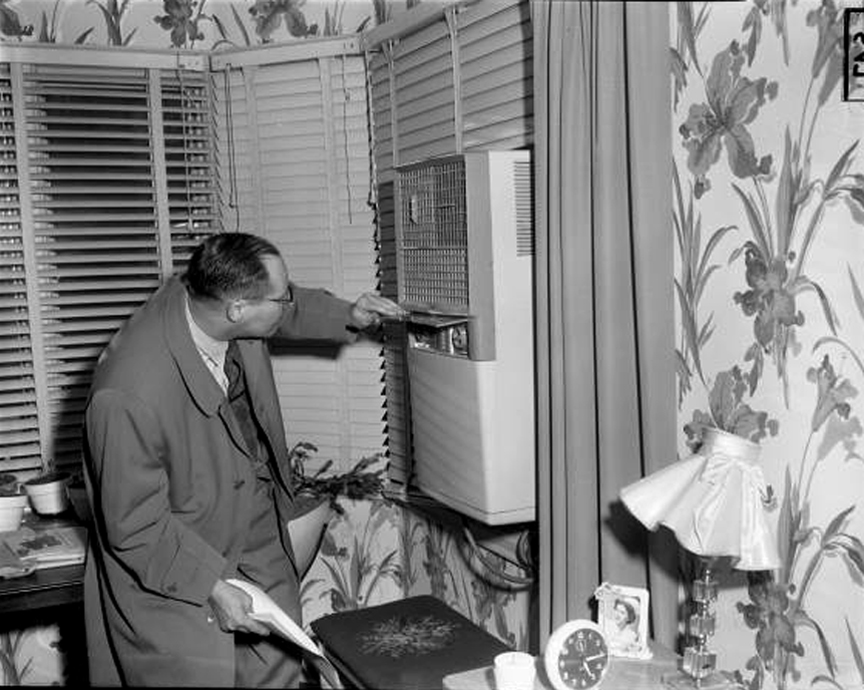
A man inspects and turns on an air conditioning unit in a window. Airport bribery investigation. Creator: Savage, John (1903-1989). Publisher: The Durham Museum. February of 1958. Sign me up for that dark needlepoint bench cushion and the fabulous floral wallpaper. Miss Cassette loves wallpaper. Note the fine 1950s décor and the framed photo of the nurse on the nightstand.
Things got Extra Complicated when Detective Janing found the Air-Conditioner Discovery. Two huge air conditioning units were “acquired” under Huff’s direction and stored at the airfield. Apparently one was originally sold to a Lincoln man, then returned to the Sidles Company for repair. Let’s put on the breaks here and remember that Daddy Huff had been in the Buick business with early partner, H. E. Sidles of Lincoln. Connection? Yes, same lifelong family friends. As it turns out both machines had been property of the City of Omaha, recently stolen. Purportedly airport workers in a job that lasted two days installed both air units under Tim Huff’s direction. E. W. Papke, the same farmer involved in a land lease, also coincidentally worked part-time as an Omaha airport employee, and another man made the air conditioner installations to a Benson apartment at 5322 Corby, #12. To make matters worse the installation was rumored to have been paid for by the city.
The Shadow in the Doorway
Already a dubious collection of events, here is where the clues gather like puzzle pieces. This apartment was occupied by none other than Miss Lena Mae Walford. The only thing we know for sure is that Miss Walford required a cool air upgrade in both her dining room and bedroom. Tim Huff vaguely described Miss Walford “as a friend.” Huff’s further claim was that he paid his airport employees with his own money and denied that the machines were bought or installed with city money. Now I don’t know the behind the scenes of any of this but you’ve got to hand it to a little farmer taking on the big guns. What a tangled mess this scandal was. Tim Huff resigned as airport manager in 1958 after being accused of these irregularities. In District Court he pleaded “no contest” on two counts of unlawful solicitation. The case mysteriously wrapped up all too quickly in the eyes of the public and Tim was only fined a mere $522.75.
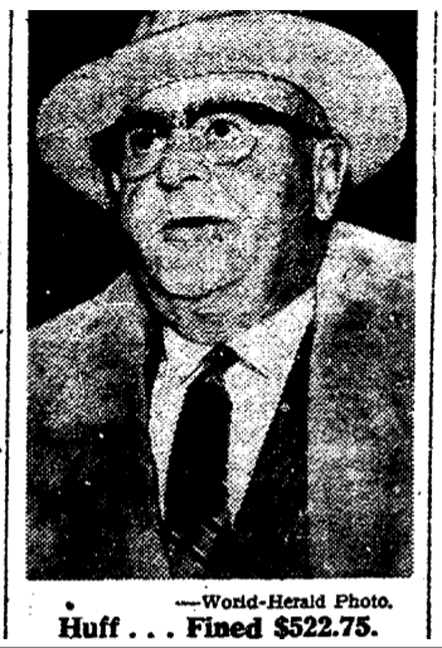
January 1959. OWH. Tim Huff leaving court after being fined $522.75.
Tim’s wife, Rosavere Menagh Huff died at age 71 in July of 1964. In December of 1965 an announcement proclaimed Tim Huff would marry Miss Lynn Wolford in Tucson, Arizona, where they planned to winter.
Enter Lena Mae Walford
I found the name of the woman whom Huff installed two stolen air conditioning units for, Miss Lena Mae Walford and Huff’s later bride, Lynn Wolford Very Similar. The World Herald could not cinch that linkage for me but Family Search lent a hand. Lenna May Huff, Lena May Huff, Lena Mae Walford and Lenna W. Huff were indeed one in the same. Lena Mae Walford, I came to believe was the correct spelling, (although sometimes listed as Lenamae…sigh) was born in 1910, the youngest of seven children. The Walford family had settled in Garfield County Nebraska, moving between two tiny towns according to the 1910 and 1920 US Censuses. By 1930 the Walford parents and youngest two of their brood lived in an even tinier town of Huntley, Wyoming.
I tracked down a car accident report from 1933 that mentioned a “Miss Lena Walford, nurse at Methodist Hospital” who was injured in the accident. Because I am a bit of a pathological sleuth, I had already noted there was a framed photo of a nurse on Miss Lena’s nightstand in the bedroom air conditioner crime photos. A wedding announcement from 1946, of which Miss Lenamae Walford served as a bridal attendant, gave additional clues. Miss Marjorie A. Royal, bride, had served overseas in a hospital unit where she met Lieutenant Richard Osterholm who was the chaplain. I began to wonder if Miss Lenamae had also served as a nurse in the war? Was this her connection to Tim Huff? A real estate transfer of 1954 revealed Lennamae Walford (more variance of spelling) buying “Lots 11, 12 and 13 in Block 1 of the Country Club District and other properties” from Mr. and Mrs. Ray Yates. The suspicious Nancy Drew part of me wondered how she could afford all of these properties. Miss Lena, never married, appeared to have been Tim Huff’s friend-mistress while he was married to Rosavere. I insinuate this only based on the stolen air conditioning situation. Later she would become his wife under the name Lynn Wolford. Was this a misspelling on the World Herald’s part, her nickname or a chance to refashion one’s self after a local impropriety? I was not 100% sure. By the time Miss Lena died in 1996, her headstone read Lena May Huff, no longer Lynn. She is buried at Forest Lawn in the Huff family plot.

Lena May Huff headstone. Discovered on the Find a Gravesite. Photographer: Michele Herrick.
Except for her headstone in the Huff burial ground of Forest Lawn, and the small details I uncovered, I was left wanting to know more about this mystery woman. Was this the woman whom neighbors had woven into the lore of 5601 Farnam- 302 South 56th Street? The woman thought to be the madame mistress of Senior Lee Huff? The woman, perhaps mistakenly thought to have married Lee Huff, Sr. after his wife died. It was probable that Tim’s mistress wife storyline had gotten the rumor mill chugging. Through the misconduct allegations of the Municipal Airfield and air conditioning-mistress transgressions it was perhaps more believable than not that son Tim Huff was possibly running a speakeasy and brothel from his parents’ basement. If you have any information about this that you are willing to share, please help us connect the dots.
Death of the Huffs
For those detectives who like tidiness and want to know what happened with everyone involved, this is for you. Senior Lee Huff died in 1939 at the age of 66 of a heart attack. He was buried at Forest Lawn Memorial Park where you will find a large family plot. After Lee’s death, wife Adelaide lived the remainder of her years with Tim, his wife Rosavere and their children Saralee and Lee, the III. Adelaide died at the age of 78; burial date was July 2, 1954. Tim Huff died in July of 1969. Interestingly his 42-year-old son, Lee Huff III died months later in November of 1969. Lee the III was a book and art dealer in Chicago.
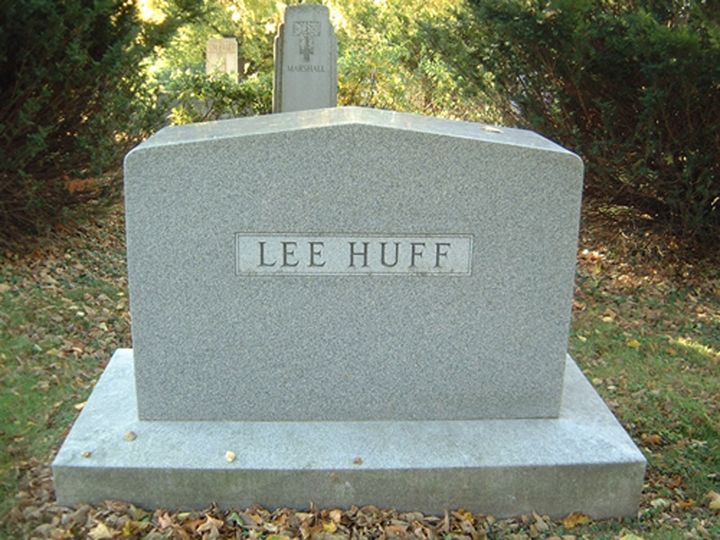
Forest Lawn Cemetery. Discovered on the Find a Gravesite. Photographer: Michele Herrick.
The Hidden Park
I would find a secret oasis when viewing an aerial map of Evanston, behind the 5601 Farnam property. This private park is in the shape of a triangle. If you’ve followed My Omaha Obsession for a while, you know these elongated triangles are my favorite things to discover. As it turns out, this land is owned by the City of Omaha. It is officially in the Evanston Addition and is Lot 24, Block 7.
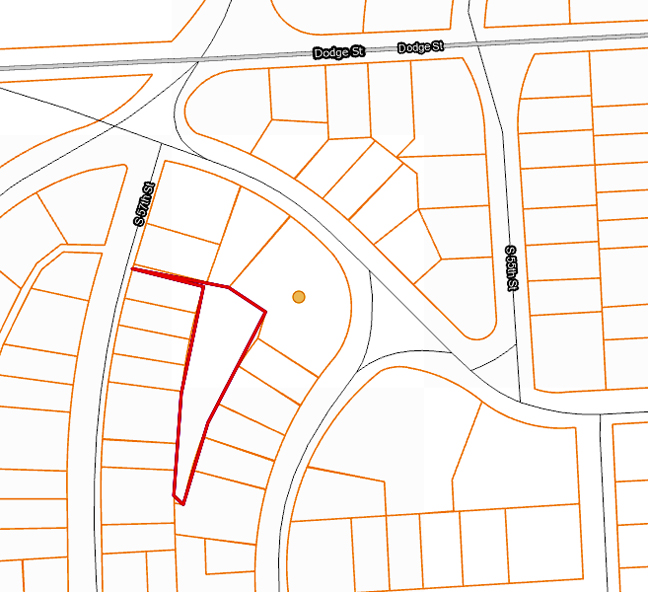
My covert visit to this hidden green space was a serene, contemplative wonderland. There must have been a Cornhuskers’ game on, because it was absolutely tranquil. Not even a leaf blower! Mr. Cassette refuses to partake in these tiptoe adventures as he has a highly tuned sense of decorum and does not believe that grown men should Nancy-Drew-About on other people’s property. I tried to explain that it was city land but he would not even want to give the air of suspicion. I suppose it would be difficult and somewhat limiting to be a tall, looming, handsome, well-dressed figure. Thank goodness I am not afflicted with this threatening curse. One would never guess this Triangle Slice was in the middle of city neighborhood. What had this secluded park looked like back in the early teens and 20s?
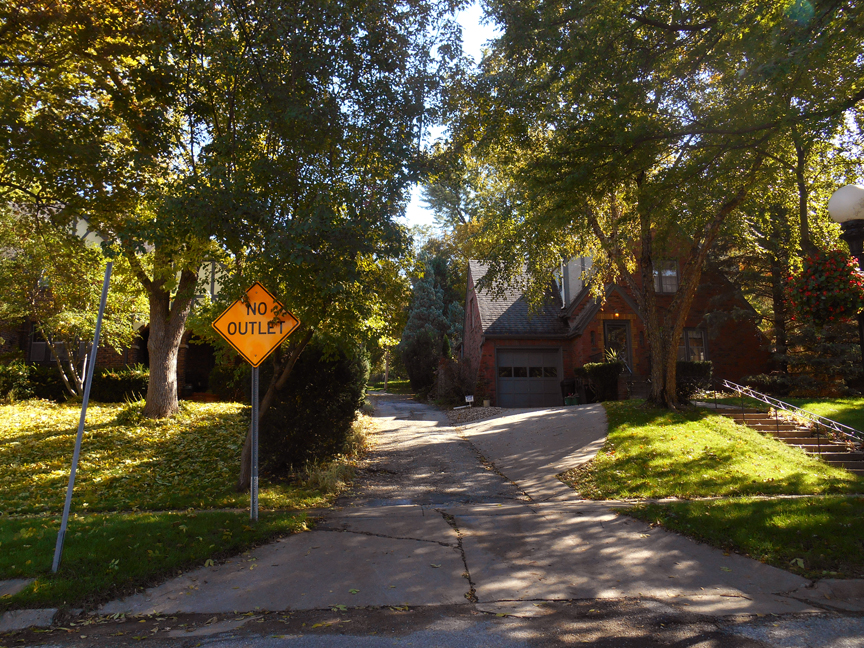
Purposefully nondescript entrance to the park.
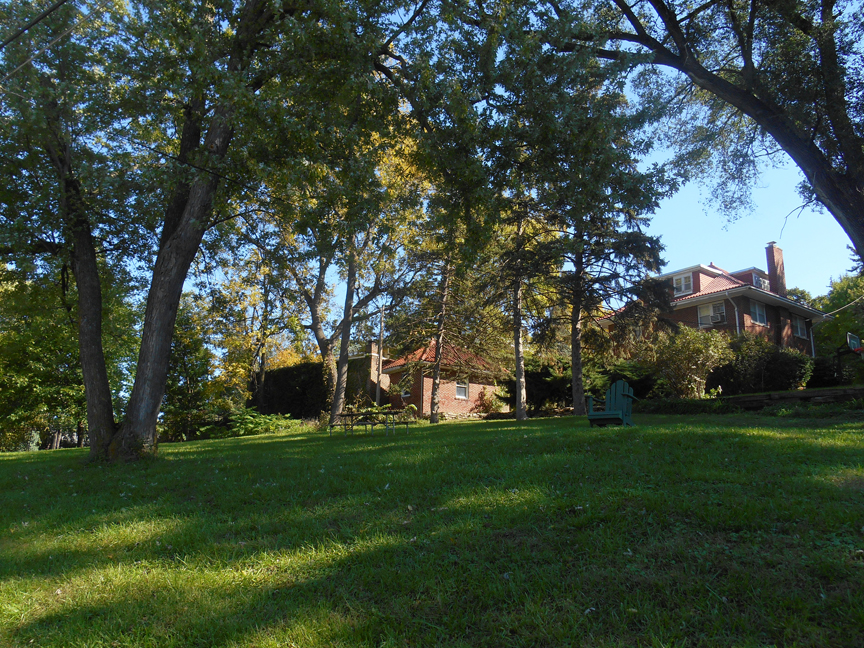
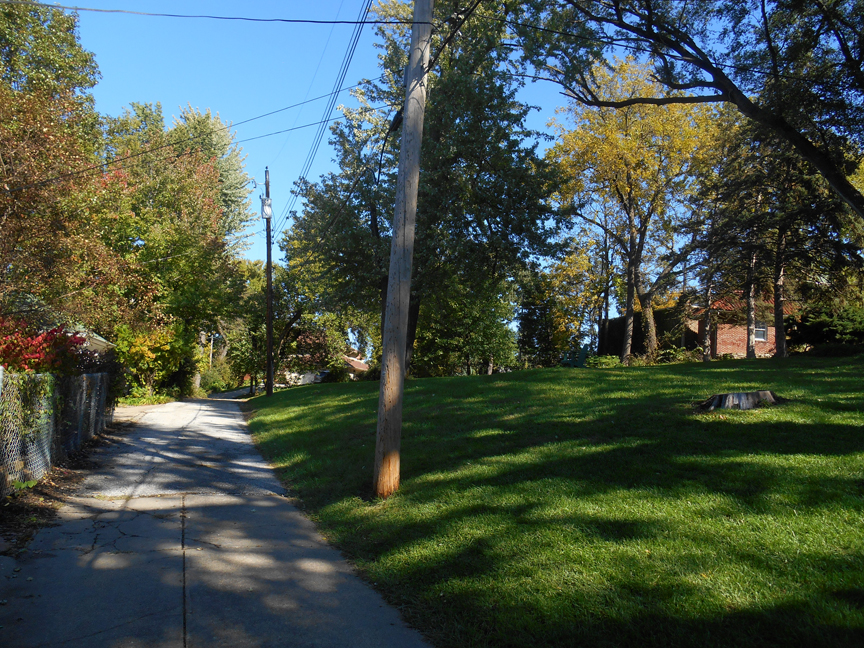
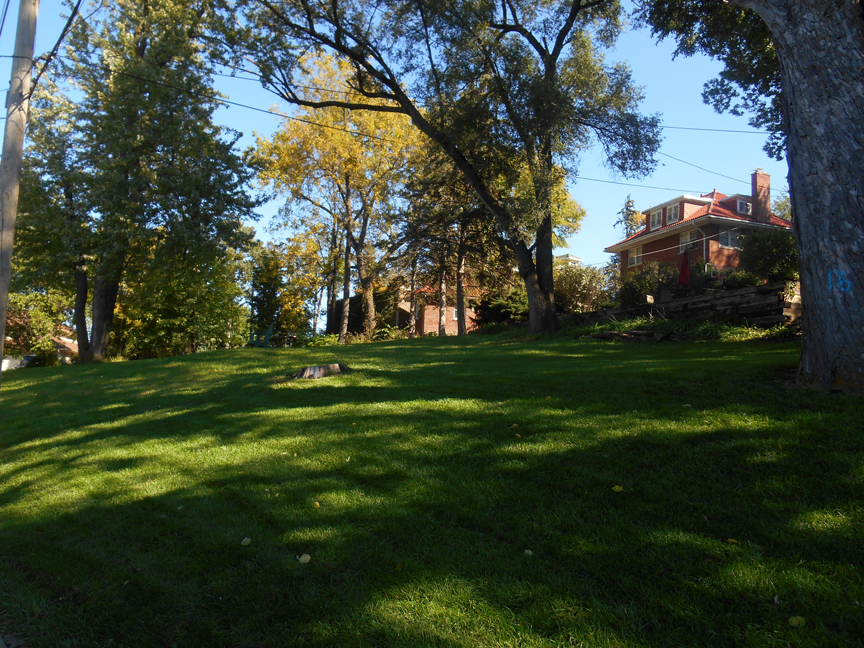

The Schantz File
Lee and Adelaide Huff signed over their 5601 Farnam Street home to Albert L. Schantz in April of 1925. By that time period the City Directory revealed Gilbert Monell Hitchcock, owner and editor of the Omaha World Herald Publishing Company and founder of the newspaper, had moved to the neighboring 303 South 56th Street, once the Evans’ Estate. Whilst the Evans and Huff families had moved on to perhaps greater social stratosphere, the Evanston area was also to step onto another rung of notoriety.
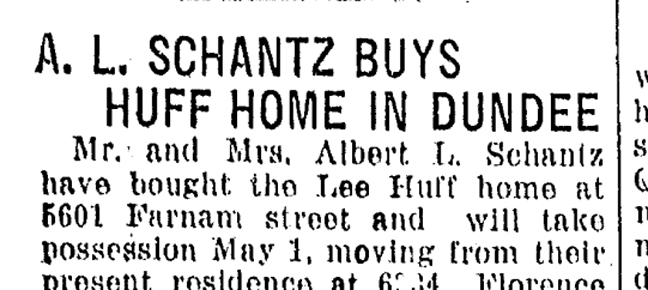
February 8, 1925 OWH.
Albert Schantz came to Omaha in 1906 from Rochester, New York to reorganize the Bennett Company Department Store on 16th and Harney. When the department store was sold six years later, Schantz was offered the presidency of the State Bank of Omaha, newly organized in 1912. Mr. Schantz would serve as its president throughout. The well-respected institution had deposits totally more than seven million dollars and was considered the largest state bank in Nebraska. Although its stockholders were spread throughout Nebraska and Iowa, the Schantzes held more than half the stock.

OWH November 24, 1912.
Albert L. Schantz and Agnes Karel Schantz would reside in the lovely 5601 Farnam Street home from 1925 until 1950. They must have felt right at home in this gorgeous environment. The 1930 U.S. Census shed a bit more light. Albert L. Schantz was born in New York and was 55. Of interest to maybe no one but me, the surname Schantz is taken from Middle High German and means “Peasant Jacket, Gambler, or Game of Dice.” Agnes Karel Schantz born in Nebraska, was 45 years of age. The Karel parents had emigrated from Austria. I searched previous census data and obituaries and could not find that Albert and Agnes ever had children.
Agnes Schantz enjoyed large social affairs, like Adelaide Huff. She received wide coverage for her buffet luncheons–one honoring the wives of those attending a banker’s convention. Two hundred guests were invited to attend her party. For the life of me I will never understand how these parties were pulled off. Oh yes, servants. Later a night of dinner and dancing at the Fontenelle Hotel was planned. I was surprised to find Ms. Agnes was not the typical society woman banker’s wife from this day and age. Agnes Schantz was credited with being the first woman director of a bank in Nebraska.
The Murals Mystery
Ms. Agnes also had a hand in directing one of the biggest mysteries found in the Evanston home. Deep in the basement of one of Dundee’s most glorious homes there resides cavernous room after room of brick walls painted in sepia toned depicting creatures. The paintings include characters from rural scenes, fantasy, rustic interiors and other imaginative imagery. What did it all mean? Like the Louisa Hotel in Seattle where Prohibition era nightclub jazz scene murals were discovered in their basement and the basement party room murals of the Biltmore, the series of owners to 301 South 56th Street/5601 Farnam wondered what they were looking at in this basement. Brilliantly, no one altered the murals or had a Remuddling Whim. For decades, the colorful murals remained a riddle of clues to the point where some inhabitants thought the rooms were decorated for the aforementioned speakeasy or backdrop to a bordello. But no explanation could wholly explain the tone of the murals. It was further proof of some epic tale.
I was delighted to see that for a wealthy society woman, Agnes Schantz enjoyed a dreamy side and had a strong commitment to enchantment. Around 1928 Agnes would hire local artist, Joseph F. Kisch, “an artist with an imagination and a flare for oddity,” to create a subterranean environment of her folly. Mr. Kisch resided at 4722 North 51st Street, an address no longer extant. Read on for the fun details of their collaboration:
“There’s loveliness in every nook and corner. Starry skies and a moon smiled own on exotic burst of color in flowers and plants, enchanting landscapes beckon with riotous beauty and Mother Nature has generously allowed everything to bloom at once! Elves peer grotesquely from behind trees, fairies dance and birds are everywhere, and though it’s all fun, none of it is real!
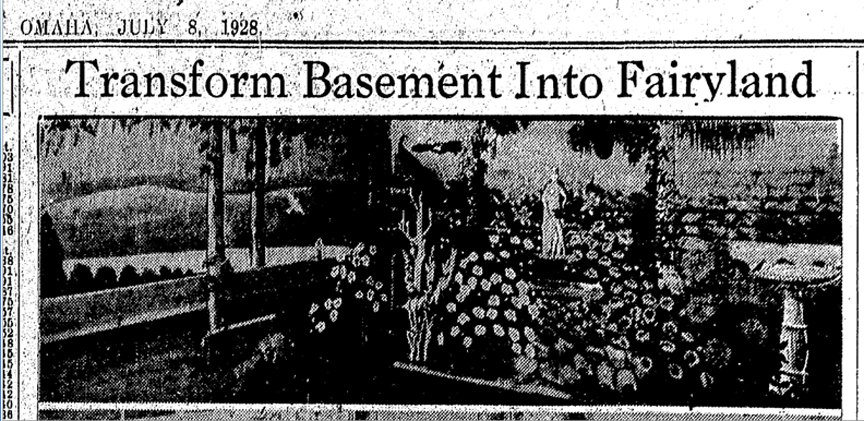
It’s done in oil by an artist with an imagination and a flare for oddity. His art on the walls, ceiling and even the floor has made real the visions of Mrs. Schantz, for hers is the inspiration behind it all. For years she has dreamed and planned for it, and it was largely from her own notes and sketches that this fairy garden was completed. Nearly every effect is reminiscent of nature’s beauty spots seen in various parts of the county.
The arrangement is that of a three-room log cabin facing on a lawn overlooking a river and flanked by terraces and gardens. When one first descends the stairs the man in the moon is seen making love to his sweetheart, a sun dial tells the time, a dwarf is busy with a wheelbarrow, birds are at a pool and multi-colored stepping stones lead to wonders of the place.
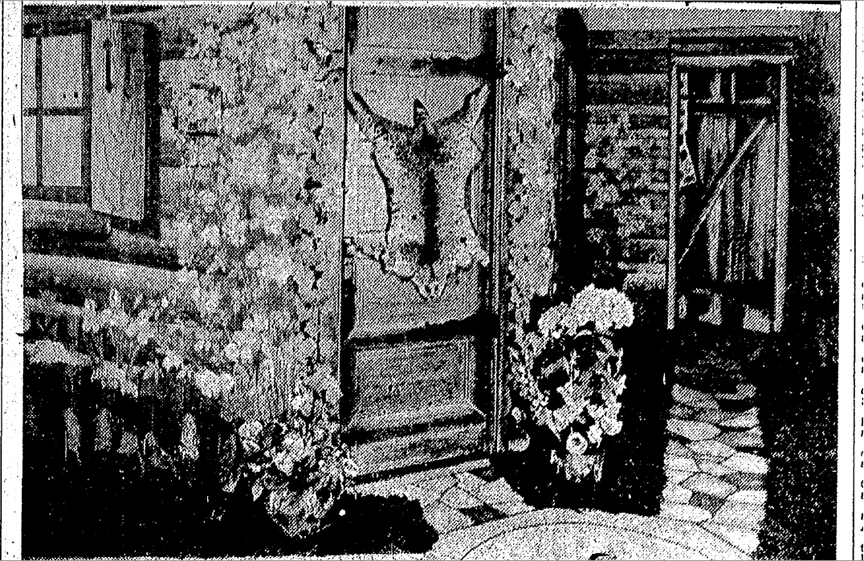
In the living room is a cozy fireplace and the walls are hung with trophies of the hunt. A mirror covers one entire wall here, seeming to double the size of the room. A bridge and game room is next, with pioneer days depicted on the wall. Covered wagon and oxen cross the plains, while Indians lurk on the hilltops. The third room is the breakfast nook, the walls representing crude pine boards.
The billiard room represents an arbor, and also has a large mirror for one wall. Lanterns are the feature here and that “Love is lighter than a butterfly” is shown in colors, next to a gorgeous garden of yellow, purple, red and blue flowers surrounding a statue of Bacchus.
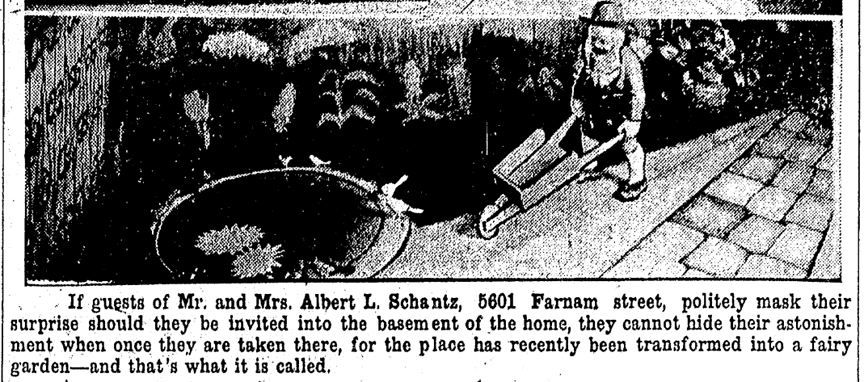
Even the laundry has been touched with the magic brushes, for the tubs seem to be made of stone. This room will later become a grill and will be fitted with a steam table, serving arrangements and a soda fountain. In the remaining room, the oil heating plant has been painted to resemble a four-sided open fireplace and the storage tanks seem to be logs.”
Fairy Garden Folio
The following photos were taken on my visit to the lovely 5601 Farnam Street home. Observe with wonder what remains of the magical basement murals.
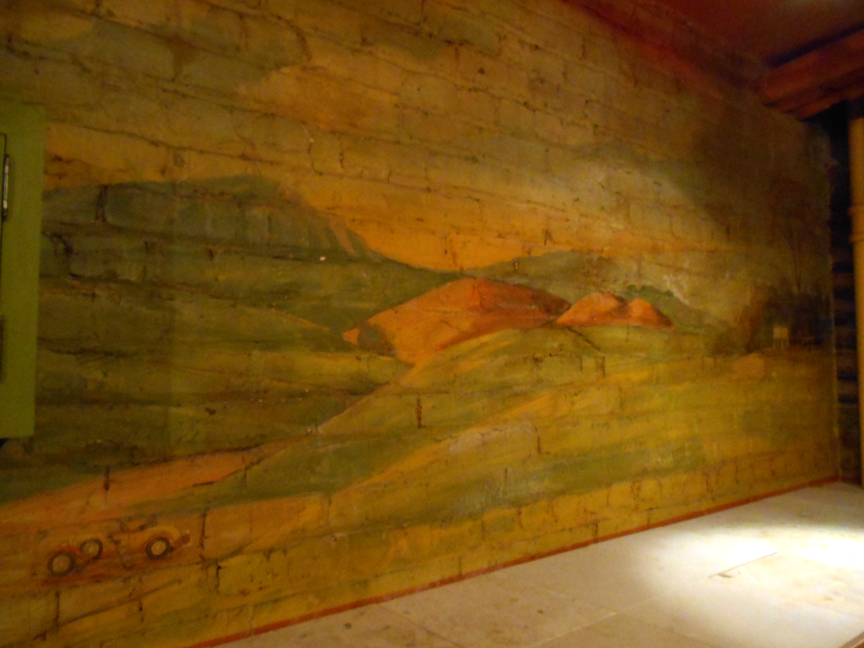
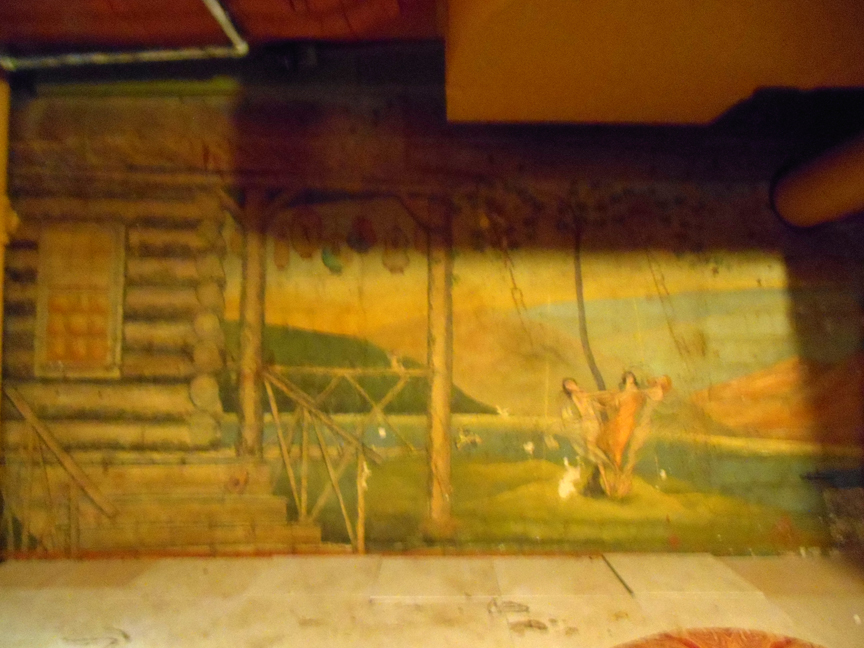
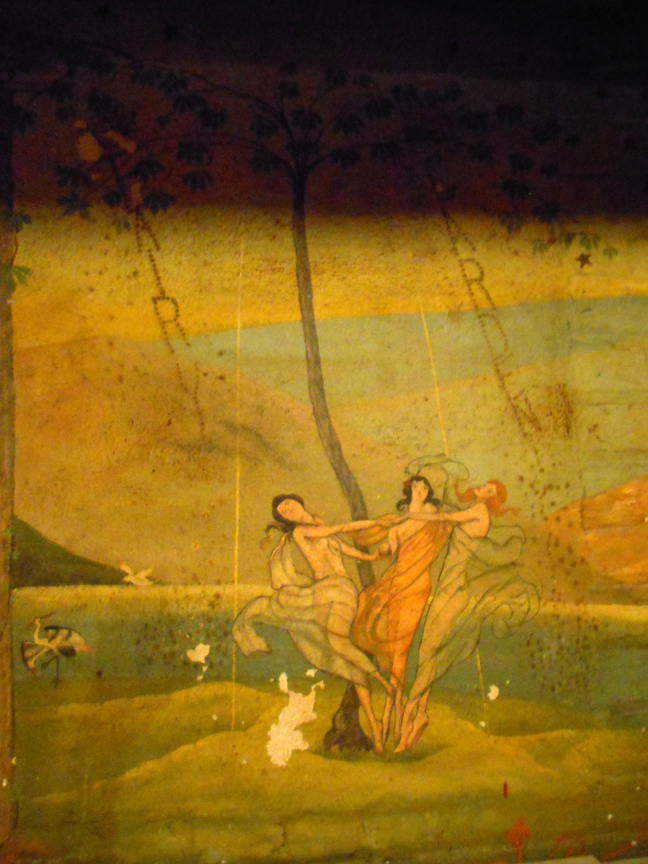
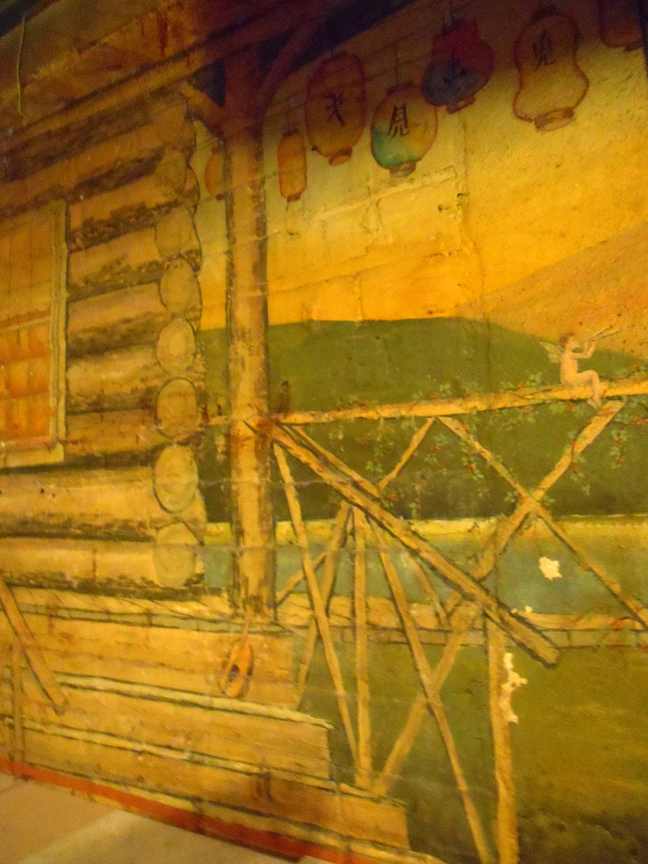

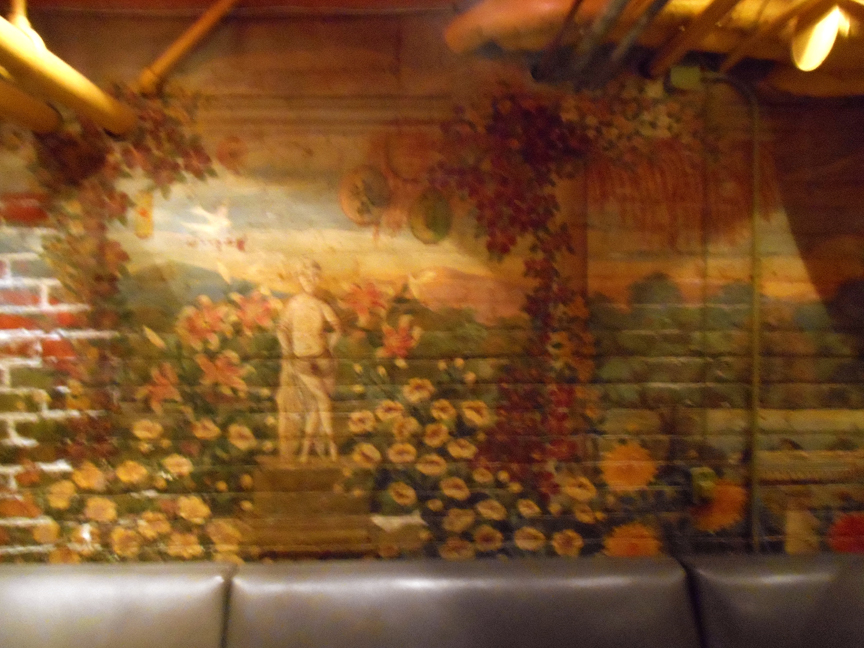
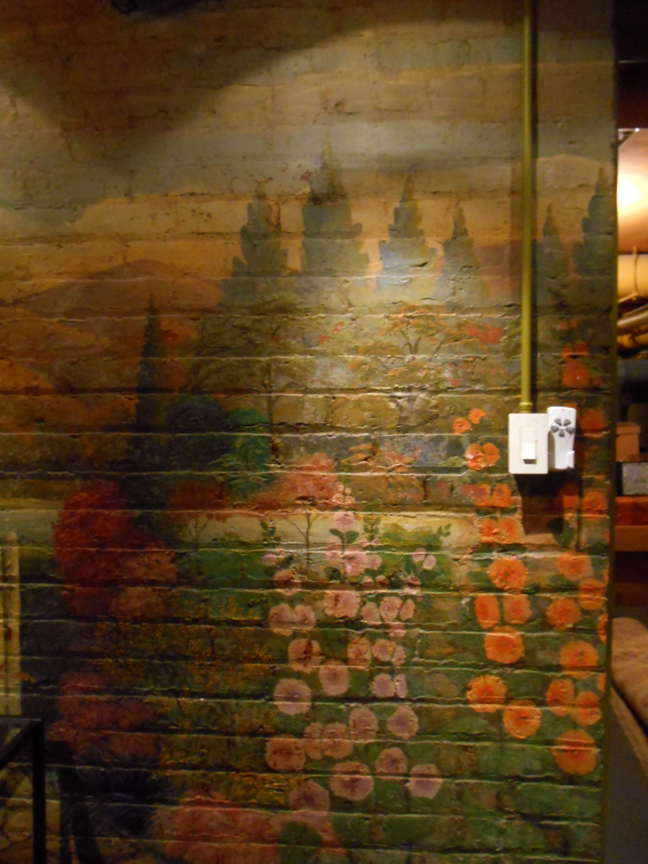

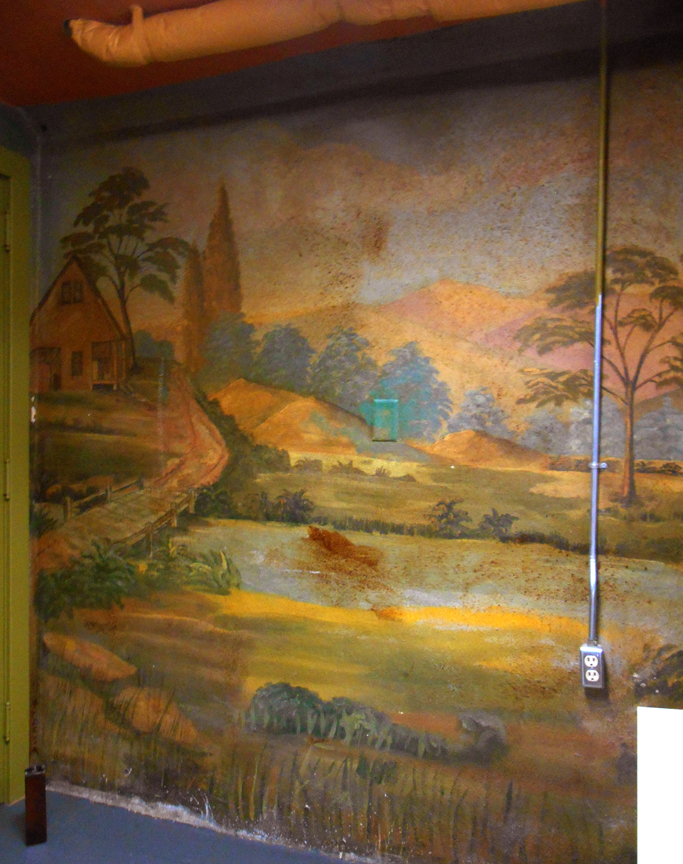
Now friends, I wouldn’t be me and you possibly wouldn’t be you if I didn’t take this opportunity to distract us all with this lovely bit of diversion. Please pardon, as I really have worked so hard to be good and keep us on track with this local mystery. I had a compulsion to learn more of this Joseph F. Kisch character once I saw the murals for myself and you probably had an itch too.

May 1928 Joseph F. Kisch ad. This decorator in frescos and wallpaper sketches and “estimates cheerfully given” offered satisfaction guaranteed.
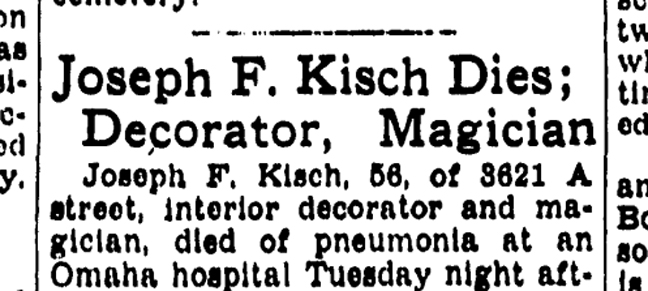
May 1937. OWH. I was saddened to find that in 1937, at the age of 56, Kisch died of pneumonia after a brief illness. Trained as an interior decorator in Yugoslavia, Joseph Kisch came to the States as a young man. It was here that he studied magic and would tour the state as a professional magician giving shows. A member of the card carrying Omaha Assembly No. 7 Society of American Magicians, Kisch made a name for himself multiplying one billiard ball into many. The group had stated Omaha was famous in magical circles and thought to go down in history of magic through the achievements of David Abbott. As for Joseph Kisch, previous to his death, he had performed his magic tricks only as a hobby. The reality of the Farnam Street murals was perfectly stranger than any fiction I could muster.
The Fall of the State Bank of Omaha
In 1931, the World Herald made the fateful announcement for the State Bank of Omaha, of which Albert L. Schantz was president and director. Mrs. Agnes Schantz was also listed as director by that time. The State Bank of Omaha owed the state bank guaranty fund approximately 70 thousand dollars in accrued assets. A small typewritten notice was posted on the doors of the State Bank of Omaha, notifying stockholders, depositors and creditors that the secretary of the state department of trade and commerce had taken charge of the bank and all of its assets. Mr. Schantz blamed a steady decrease of deposits during a three-year period for the closing, citing “unfavorable publicity given banks in Nebraska.” I’ve got to think this closing was connected to the Great Depression.

But by October of 1935, a legislative group went sniffing around and apparently they smelled a fish. A full-on hearing was called about the South Omaha State Bank closing where investigators made plain they were attempting to prove collusion between the state banking department and the bank back in 1926. Albert Schantz would be brought in as former president of the State Bank of Omaha and quizzed about the 100 thousand dollar credit to the South Omaha bank account, which occurred the day after John McGurk took over the South Side bank. This transaction as well as the paperwork where McGurk took ownership of the bank had disappeared from department files. It would appear that Schantz was cleared of any involvement in this banking scandal.
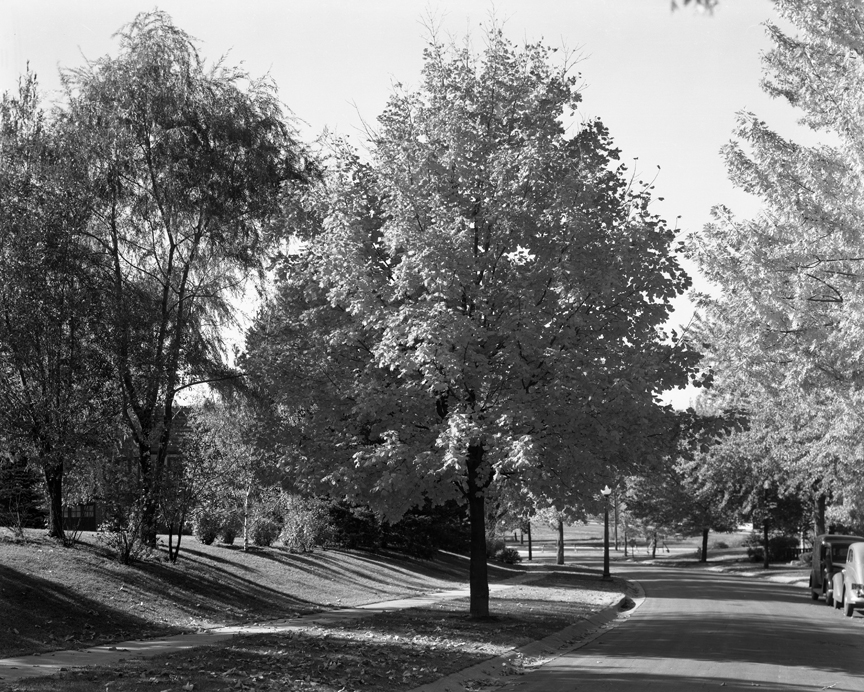
How the beautiful curve of Farnam Street looked back in Fall of 1939, as it descends west to the Happy Hollow-Dodge fork. This photo displays Lot One, 5609 Farnam, when it was encompassed with Two and Three as a singular lot, 5601 Farnam. Creator: Bostwick, Louis (1868-1943) and Frohardt, Homer (1885-1972). Publisher: The Durham Museum.
The Mosaic Mystery
Around the early to mid 1940s, a mosaic fountain pool was built in the northwest garden of 5601 Farnam, according to my assessment of aerial photos and stories of past owners. The rumor is that when Americans of Japanese descent were interred in isolation camps during World War II, 5601Farnam Street housed a number of Japanese Americans in hiding. Was this true? Would the Schantz couple have sublet their enchanting basement as a safe house to Japanese Americans? To add to the story, apparently these basement dwellers created this beautiful folk mosaic fountain in the garden, using various scrap tiles collected from construction sites throughout Dundee and the surrounding area. No one knows if this legend is true or not. It reminded me of amazing folk art I had only seen online for Ray’s Ornamental Gardens in Stephenville, Texas and in my grandmother’s friends’ late 1940’s basement rumpus room. This fountain, now a garden bed, is consistent with Mrs. Schantz’s aesthetic; we know from her murals how she felt about vernacular folk art. I find both the mural and fountain designs to be quite spectacular and am amazed that no previous owners took it upon themselves to destroy these flights of fancy. All the more glory for this home, I say! I offer up these photos as evidence from my mosaic fountain recon mission.
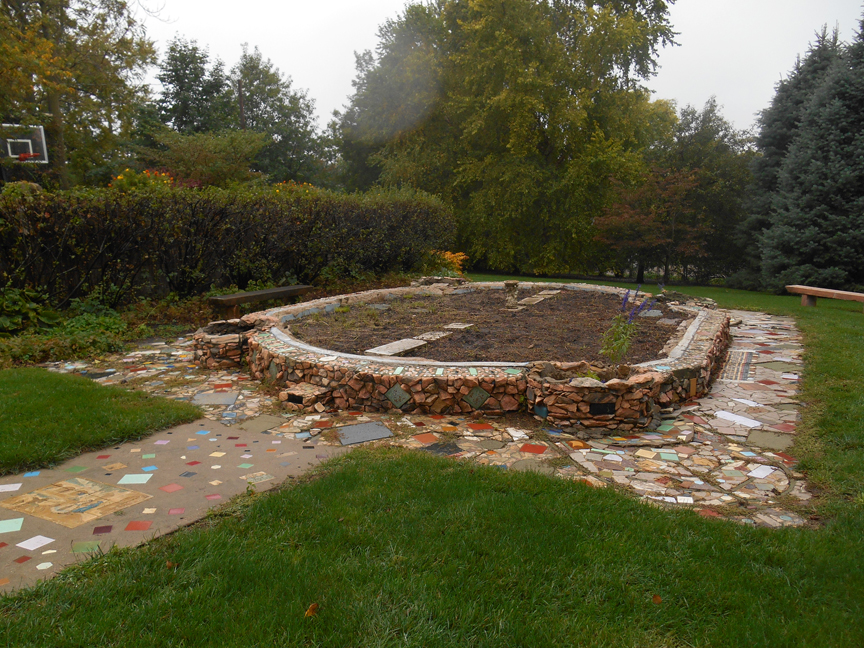


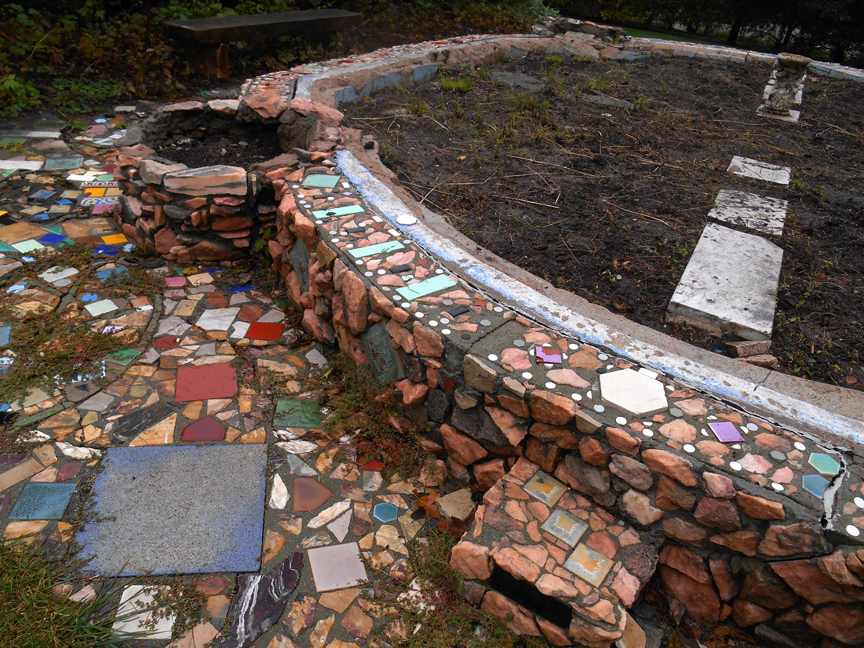
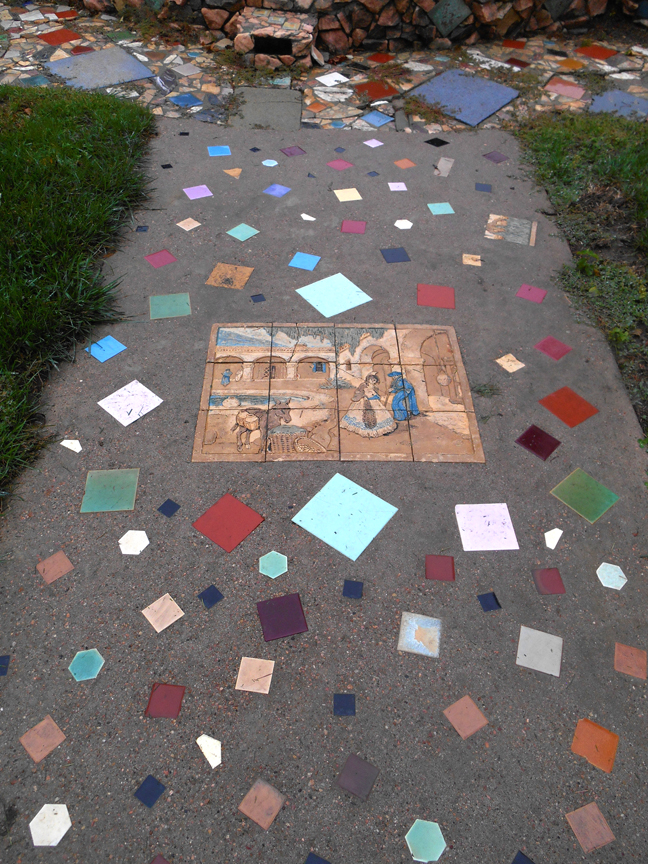
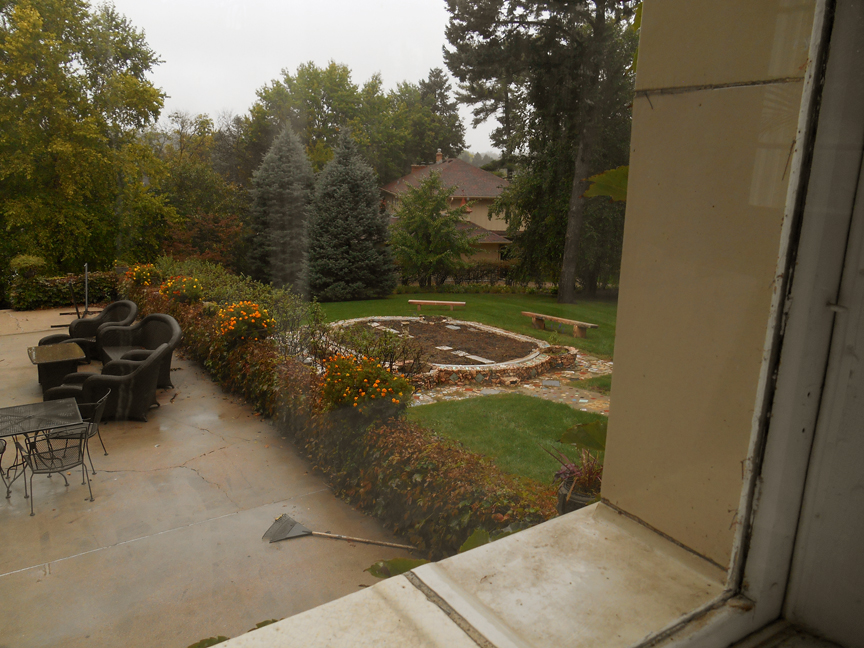
Search for the Japanese American Connection
According to the Omaha: A Guide to the City and Environs written compilation by the Federal Writer’s Project from 1935-1939 there were “less than 50 Japanese” living in Omaha at the time. I didn’t know the reality of this. I would consult E Pluribus Omaha: Immigrants All by Harry B. Otis to try to get an understanding of the potential truth in this 5601 Farnam lore. Otis’ book reported that previous to World War II, very few Japanese resided in Omaha. The first group of Japanese Americans came in 1904 when Kinya Okajima was asked to recruit 120 laborers from the Wyoming and Colorado mines on behalf of the South Omaha packinghouses. From Otis’ research, there were two hundred Japanese workers in the Omaha area by 1910—he stated half of them worked for the Cudahy Packing Company. “They lived in a house called the Home of the Good Shepherd…At the same time, some found lodgings in a boardinghouse run by a Mr. Hashimoto, who boarded twenty of them at his establishment on 11th Street between Harney and Farnam.” By the 1920s a number of soon to be well-known Japanese American businessmen would move to Omaha, to include the Takechi, Watanabe, Taso, Yoden, Matsou families. These newcomers set the foundation for many popular Omaha enterprises.
After the attack on Pearl Harbor, there was a strong anti-Japanese reaction among many in the American public. President Franklin D. Roosevelt ordered the interment of Japanese Americans based on racism and “security risk.” These concentration camps were based on the western interior and mostly interred those U. S. citizens from the Pacific Coast. According to the families interviewed by Otis, Omahans of Japanese descent continued to reside in their Omaha homes during the internment, in fact bringing “many interned Japanese” to both their homes and Omaha at large. These prosperous Japanese businessmen would also employ the new arrivals in their stores, restaurants, watch repair business, and warehouses. The Wartime Relocation Authority enabled many displaced Japanese to come to Omaha during this period. In fact Boys Town reputedly found Omaha jobs for many evacuees. By 1947 the Japanese American Citizens League had formed in Omaha, reporting 150+ members. The Takechi, Okura, Nakadoi, Matsunami and Kaya families had founded the League. The oral history was becoming more believable; Albert and Agnes Schantz could have been a host family, perhaps through church or an organization, for displaced Japanese Americans. I hope someone will come forward with clues to the mosaic fountain fairy tale.
Death of the Schantzes
In early August of 1946, our Mrs. Agnes Karel Schantz, age 63, died. She requested a private service and cremation. Interment of ashes was at Forest Lawn Memorial Park and Crematory at 7909 Mormon Bridge Road, one of Omaha’s most fascinating cemeteries. In fact this is where every character of this article, so far, has been entombed. Of more than a little interest, upon her death, our mural and mosaic lover, Ms. Agnes left $707,874 to Albert Schantz. According to an inflation calculator the inheritance was worth about $8,950,000.00.
Albert Schantz lived alone in the big house at 5601 Farnam and was said to have “dropped out of sight during his last lonely years.” It is said that friends of former years gradually stopped visiting him when it became apparent that “he took little interest in conversation.” It is perhaps telling of State Bank of Omaha fate that Schantz became “embittered over the failure of his bank during the depression. His only real interest in life had been business.” The once bank president died at the age of 75 in a hospital in March of 1950. I learned from Find A Grave that Albert was buried at Forest Lawn Memorial Park. Under the terms of his will, one fifth of his estate was left to wife, Agnes’ sisters in California. The remainder was turned over to the mysterious Albert and Agnes Schantz Foundation. The foundation officers explained the numerous names I had discovered on the 5601 Farnam deed: Attorney Francis S. Gaines, W. Dale Clark, board chairman of the Omaha National Bank and T. H. Maenner, Omaha real estate man. The Schantz group had not yet found their footing upon the Schantzes deaths, but the couple had established the foundation “for charitable, educational and religious purposes.” I was interested to find the Foundation got involved in restoration and building. By 1965 the Albert and Agnes Schantz Foundation was making a name for themselves by having donated to the restoration of the Willa Cather home in Red Cloud. Then in 1967 the group put up money for a new Boy Scouts-Junior Achievement collaboration to be called the Mid-America Youth Foundation Center.

May 1950. That May all of the Schantzes’ lovely treasures were hoisted the auction block for all to see. The beautiful showpiece of 5601 Farnam was for sale once again in June.
The Home Awaits
These are a few of the scrumptious (slices) descriptions of our 5601 Farnam, taken from various 1950s real estate advertisements. I do love this phrasing and I hope you will permit this dalliance.
“Large family home of brick and stone. From the long living room with marble fireplace you step down two steps to a large marble floored sunroom. A butler’s pantry separated the family-sized dining room from the kitchen. Main floor also has half bath. Large entryway and guest closets. Second floor has five bedrooms and 3 1/2 baths all good sized. The third floor is finished and can be used as a party room or children’s play room. Basement is divided into four rooms, all plastered and decorated. Oil fired steam heat. The floors throughout are of edge-grained oak and woodwork is walnut with natural finish. Located on beautifully landscaped corner lot. Has 4-car heated garage. This home has been a showplace for years and is offered at less than half the original cost.”
“Masonry and brick amid these towering spruce.”
“Second floor has three suites of two rooms and a bath each, plus a maid’s room and bath. The garage will hold four cars and has floor drains, lights and steam heat. And address of distinction.”
“Where Hospitality Reigned.”
“Yes, 25 years ago when this stately 11-room home was built it was the showplace of West Dundee. Surrounded by stately silver spruce…”
Before we traipse a step further, let us review a few photos from the past. I estimate these to be from the late 1990s, early 2000s. Still these are our closest piece of evidence to how the home used to look previous to slight remodeling in the 2000s. Again take note of the chandeliers.
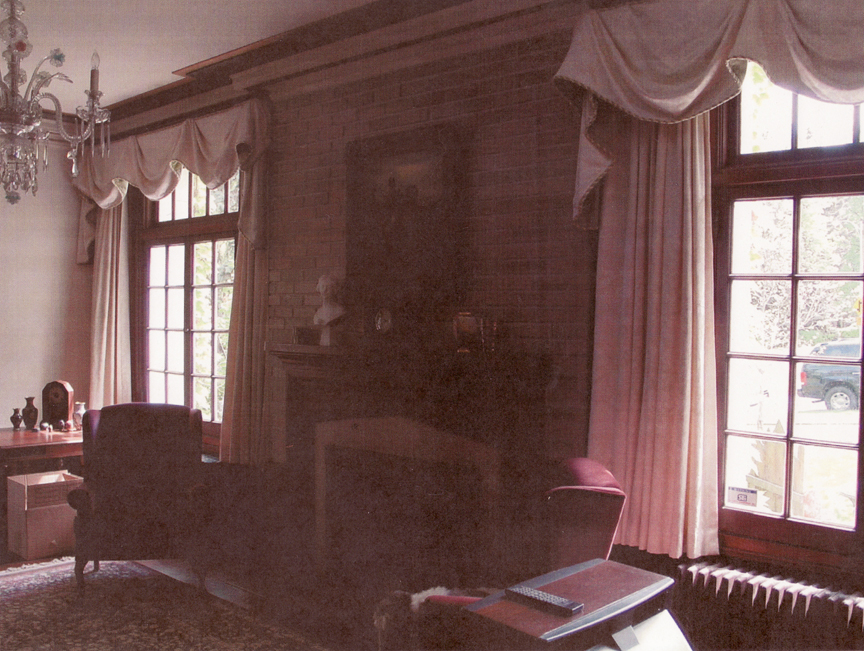
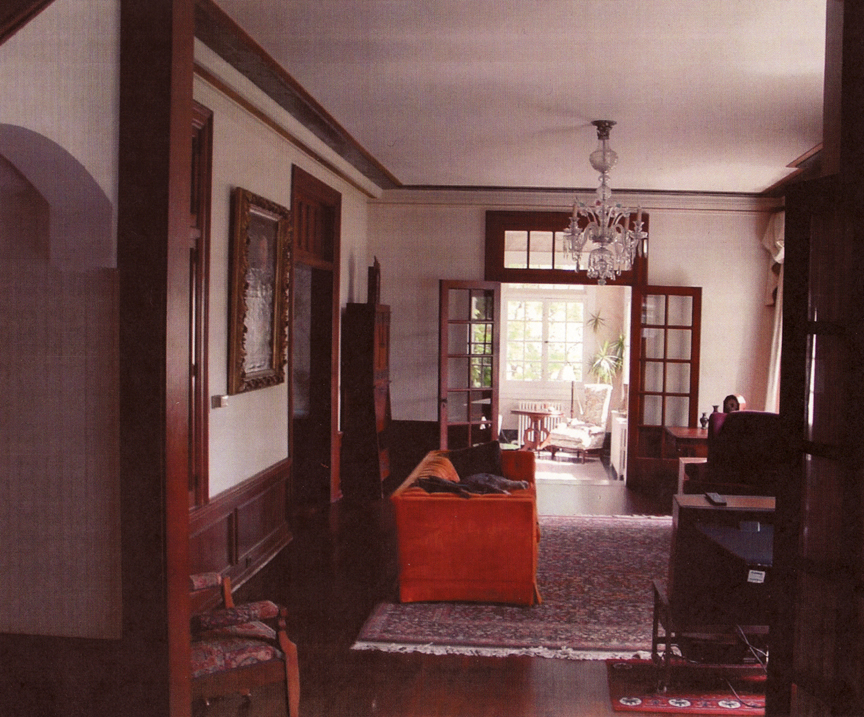

Down the Hidden Path
The 5601 Farnam Street deed would reveal this glorious home sat empty until just the right owner was rousted to her well-heeled classic ladies pumps. In April of 1951 the Albert and Agnes Schantz Foundation, represented by the Omaha National Bank, sold parcels of lots 1, 2 and 3 to Margaret W. Kellogg, all three transactions were completed by that November. The Executor’s Deed showed $30,000 bought Lots Two and Three. If you thought the previous owners were entertaining, Margaret W. Kellogg would far outweigh the rest in both pageantry and mystery. In fact, we shall call her Mysterious Margaret from this point forward.
I discovered a July 3, 1951 building permit for a “Mrs. Mark Kellog (sic) at 5601 Farnam, for repairs totally $250.” This clue would continue to disquiet me too long into the night, especially when I learned that Margaret was actually married to a George A. Kellogg, born in 1873. As it turned out, there was another fairly fabulous Mrs. Mark Kellogg of 808 Park Avenue. Mrs. Mark Kellogg gained Omaha Notoriety in 1951 after having “lost” a 2.93-carat diamond ring, valued at $6,000 only noticed having vanished when she entered her bank. This fabulous Mrs. oddly claimed later said it was indeed a 3 3/4 carat ring. No matter…Whole lotta bread in ’51, I figured. By appearances that Mrs. Mark Kellogg was a society woman, in the paper often for her charity work and chairwoman duties. Ultimately I believed the paper had just made a mistake, calling our Mrs. George Kellogg by Mrs. Mark Kellogg’s name. But still, it needled at me…I guess this is where you should begin to take notes.
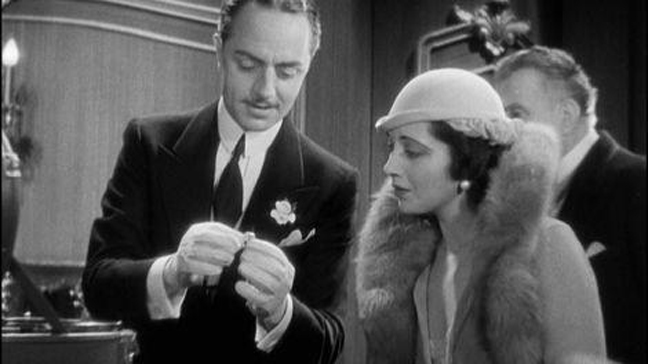
Jewel Robbery movie still from 1932.
Brief But Complicated History of George
George A. Kellogg and wife Margaret would move into 5601 Farnam. All of those big beautiful rooms were waiting to be furnished and apparently the Kelloggs did so with aplomb. The décor was described as plush—a favored 50s word. It was all very divine. Shortly thereafter George Kellogg’s obituary revealed he died in May of 1952, at the age of 79 years. George died in the 5601 Farnam home and was entombed at Forest Lawn Memorial, “Survived by wife, Margaret Woodward Kellogg and one sister, Mrs. Fannie Deur of Los Angeles.” George had been married previously but was without children from both marriages. Take note.
By May 1952, I fell upon the sticky wicket of Case Sister Fannie vs. Wife Margaret. George Kellogg’s only sister Fannie Kellogg Deur sued Mrs. Margaret Kellogg for one-fourth of George’s estate. Mr. Kellogg had been president of the First National Bank of Missouri Valley for more than 40 years and was “one of the most extensive landowners of Harrison County.” Kellogg divided his time between Missouri Valley and Omaha the last years of his life. It seems that the problem all began when George and Fannie’s father, L. M. Kellogg had died without leaving a will. His large accumulation of real estate, to include 14 farms and several town properties (mostly in Iowa) and over $24,000 went into his then wife’s name, Joanna. When Joanna died some time later, also without a will, she left everything to her son, George, her only heir. Fannie, as it turns out was a half sister of George’s; Fannie had a different mother. When George Kellogg died, again, without a will, he left everything to his wife, Margaret. Sister Fannie only wanted a division of the original real estate owned by her father, claiming that she and her brother had held all of the properties of the estate, including replacements and reinvestments, George. Why George Kellogg didn’t plan to take care of his Sister Fannie is beyond me. Perhaps his death was ill timed, as I would guess it usually is. I followed the court case and by 1954, wife Margaret was given half the estate and Fannie was given one-fourth. The remaining quarter was split between Margaret and three heirs of Mr. Kellogg’s first wife, Helen. Note to Self: draw up a will or better yet, a trust, no matter how burdensome ASAP.
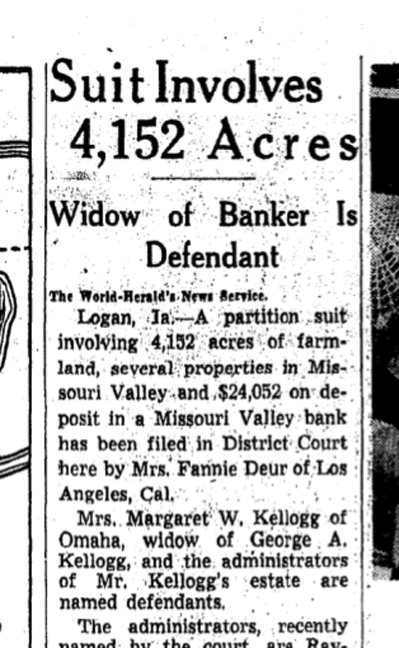
The Confounding Margaret Woodward Kellogg
I originally thought George’s wife was Miss Margaret Woodward, daughter to Mr. and Mrs. Marcus N. Woodward of Omaha. She attended Central High School and was a graduate of the University of Omaha. I found her often in the papers, involved with all sorts of girls’ club organizations and performances. She played the piano and sang. In 1920 she married a James Russell Morton of Center, Colorado and the two were to return to the Morton residence, making Center their home. But by 1926, she had returned to the Omaha papers singing and performing under the name of Miss Margaret Woodward again. Was this our same Margaret Woodward then 40, who filed for divorce from a Charles V. Zeiss in 1938?
It only got stranger. I would again revisit the Mrs. Mark Kellogg connection and find that the woman who had her $6,000 diamond ring gone missing was named Mrs. Mark Woodward Kellogg in another article. She also lived at the 808 Park Avenue address days before our Margaret Kellogg bought the 5601 Farnam Street house. There was some connection with this fellow named Mark and I was beginning to think Woodward was not Margaret’s maiden name at all.
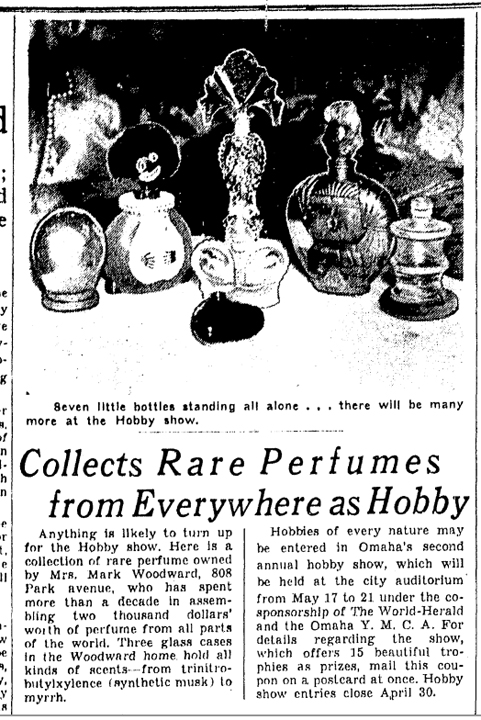
April 22, 1939. OWH. The connection grew a bit more intriguing when I found this 1930s article boasting of Mrs. Woodward’s incredible perfume collection. There was no mention of the Kellogg name at that time but the woman resided at the same 808 Park Avenue address. I found it unconventional that one would gloat of such upscale opulence at a time when many folks had nothing. It matched up with the $6,000 ring yarn.
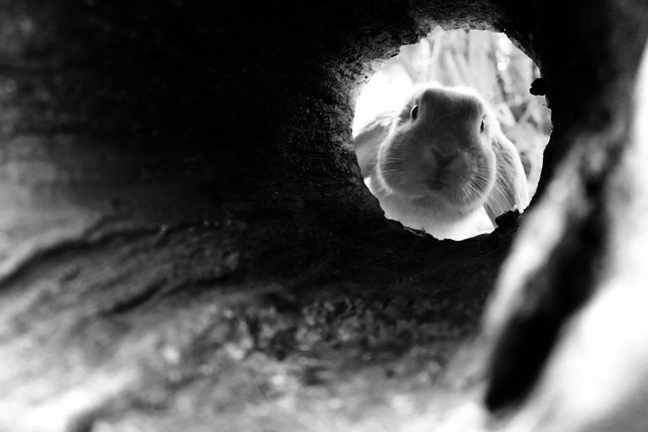
And that dear friends, is when I absolutely lost my mind and decided my life’s focus would be tracking this Mysterious Margaret. Why I became obsessed with deciphering her past will become apparent when you learn of the shenanigans that transpired once Mrs. Kellogg moved into the 5601 Farnam Street. The short of it was she was all the same wonderfully chaotic swaggering woman. If the subsequent paragraphs send you into Doldrums, by all means skip ahead. It will become evident to the rest of us that Mysterious Margaret could have her own book. Or series for that matter.
Complete Shakedown
I could not track a Mark Woodward in any of my historic Omaha books, of which I, by now, have far too many. There was a William A. Woodward, a wealthy investment banker out of Lincoln but, alas not a relative of our Mark Woodward. Starting in 1929 “Mrs. Mark Woodward” entered the Omaha City Directory. This designation would lead one to believe that madam lived alone; customarily women were not mentioned in the directory except as wives in parenthesis, if a sleuth is lucky. I thought Mr. must be dead or had moved away, perhaps divorced. Oddly Mark Woodward was listed for the first time in 1936 at the same 808 Park Avenue address, without mention of Margaret. The weird part was that (wid Geo) was denoted behind his name. Typically this notation means “widow of —whomever the husband was. If this were the case, why would it say widow of George? Through the years the directory would continue to read “Mrs. Mark Woodward” with no mention of Mark until 1941-1945 when Mr. Mark Woodward again was listed, without mention of Margaret.
I would call upon highly skilled librarian (Detective) Martha Grenzeback at the W. Dale Clark Downtown Library for desperate help on the Woodward Kellogg stumping. She produced the wedding license of George A. Kellogg and Margaret (Margie) Woodward from December 26, 1947. In 1949 I could find no Woodward listing but “George Kellogg (Margaret)” were registered at 808 Park Avenue. Are you still following? The cherry on top was that in 1951, the year Margaret Kellogg bought 5601 Farnam, the city directory showed Kellogg, Geo (Mark W.) living at 808 Park Avenue. Still no Mark Woodward connection.

I would continue to rattle at the Mysterious Margaret Beat; meanwhile taking note that public interest and press ramp up of the Kellogg Estate was thorough and consistent. Wealthy Missouri Valley banker George A. Kellogg and tale of his vast farmland were in the papers for many years. With each sale of property from the estate and acquisition of new land holdings, the image of Margaret Kellogg at 5601 Farnam rose to great heights. One got the idea this was some sort of lavish publicity campaign. I had never seen or read anything like it. And this is coming from someone who spends a good deal of time scouring archival newspapers.
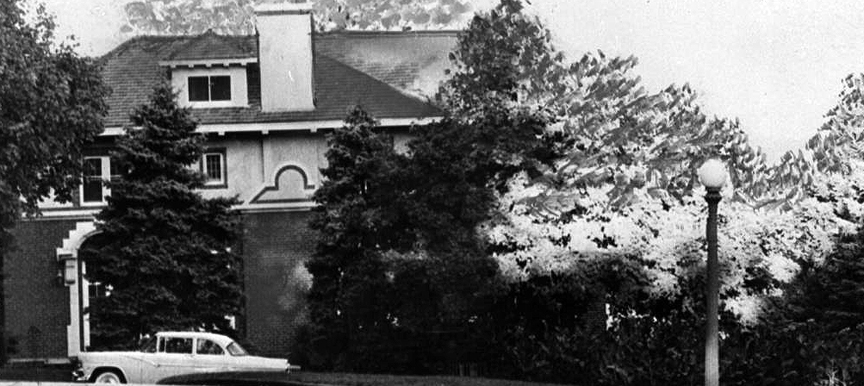
1950s image of 5601 Farnam Street. Oddly looks painted in portions, like a movie set. Makes me love it even more!
High Times at 5601 Farnam
Mrs. Margaret Kellogg lavishily lived the high life and as in previous fashion, was not afraid to call in the press for bragging rights. The mansion was filled to the gills with gorgeous furnishings as well as the curious: stuffed skunks, a stuffed albino pigeon, stuffed armadillos, that perfume collection we had heard about, crystal ware and a life-sized Santa Claus which waved an arm when wound up. There was life-sized nude oil painting on the wall. The painting by the famous Omaha portraitist, J. Laurie Wallace displayed a woman standing by a piano, resting one foot on the head of the an open mouthed tiger. Mysterious Margaret, who said she was “once a featured player in silent movies” enjoyed telling friends she had posed for the portrait. “It was her habit to display the painting to visitors with the remark: ‘My, I was a pretty thing then, wasn’t I?’” It would appear she enjoyed the company of female companions after the death of husband George; her faithful live-in friend-servant-nurse was Miss Mae Hamernich (sometimes Hamernik) and Mrs. Wilma Arthur of Los Angeles was a frequent inhabitant of Kellogg home. The year after George Kellogg’s death Mysterious Margaret was featured in a series of articles, for what some might have adjudged outlandish behavior; of course we have seen much stranger form become commonplace in the last 60 years thanks to television and the internet. These sensational articles and accompanying photos would cause an avalanche of attention directed at the Kellogg Estate. Methinks it was Mysterious Margaret’s bizarre media-attracting design gone awry.
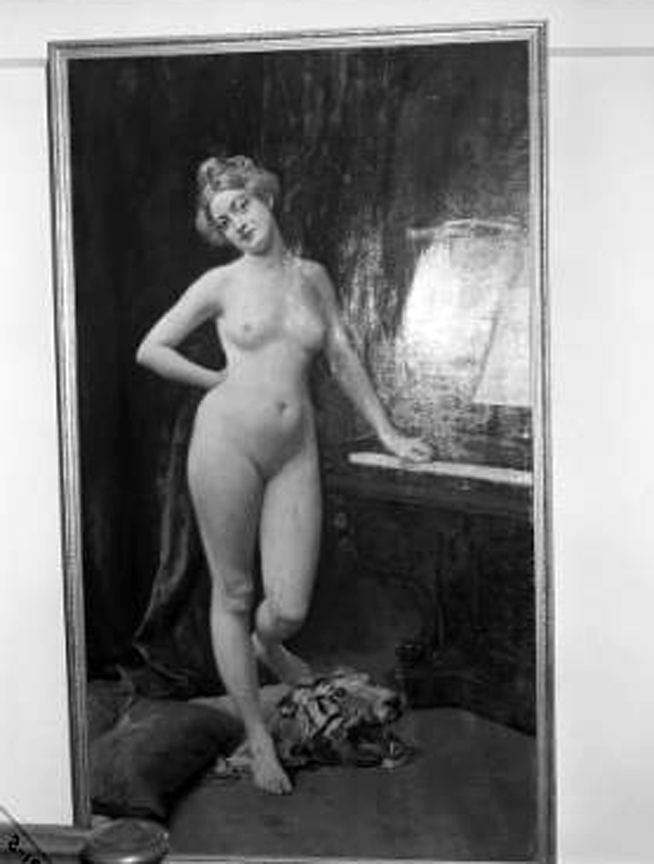
The J. Laurie Wallace nude that Mysterious Margaret claimed she posed for. The truth in this tale?
The banker’s wife’s well-appointed home was also chock full of a frolicking, gay menagerie of animal friends. There were Margaret’s three Chihuahuas, Monca-Pu, Dolly and Boo-Boo; a forth Chihuahua, Buddy, “the mean one;” two South American monkeys, one named Mickey who later expired of pneumonia; two mynah birds and some fish. Apparently Mysterious Margaret never had children and was said to spoil her animals with loving affection. This affection involved the pups sleeping in their own separate baby cribs, special pampering involving luxurious hair salon dryers, diamond necklaces and other primpings such as a doggie mink coat. These storylines must have piqued the interest of many a reader. Certainly a few thieves in town, pricked up their ears to hear of Monca-Pu, the smallest dog’s jewelry collection.
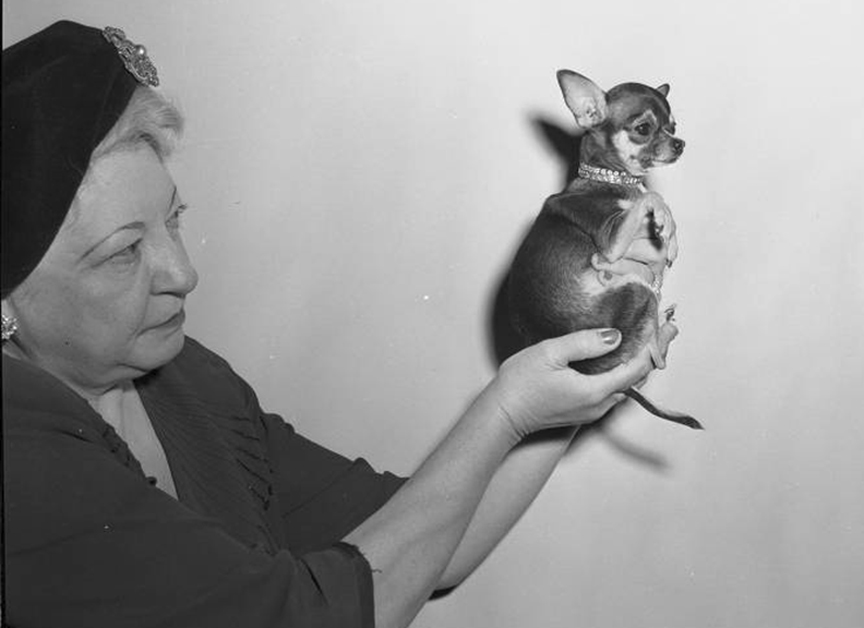
Mrs. George (curiously labeled Mark Woodward) Kellogg holds up Monca-Pu. I am obsessed with Mysterious Margaret’s fetching hat and eyebrows. And that appears to be a navy crepe dress, of which I wholly subscribe. Creator: Savage, John (1903-1989). Publisher: The Durham Museum. February 1953.

Bizarre display of her jewels for the camera spread forth on an off-handed card table. Let me at that pile of chintz and needlepoint pillows over her shoulder. Creator: Savage, John (1903-1989). Publisher: The Durham Museum. February 1953.
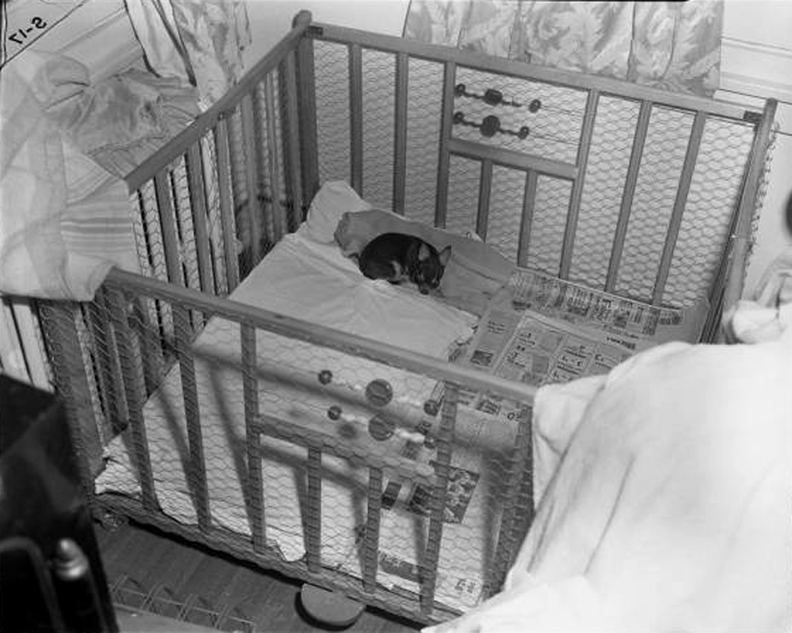
Monca-Pu, lies in a baby crib with blankets and newspaper. Creator: Savage, John (1903-1989). Publisher: The Durham Museum. February 1953.
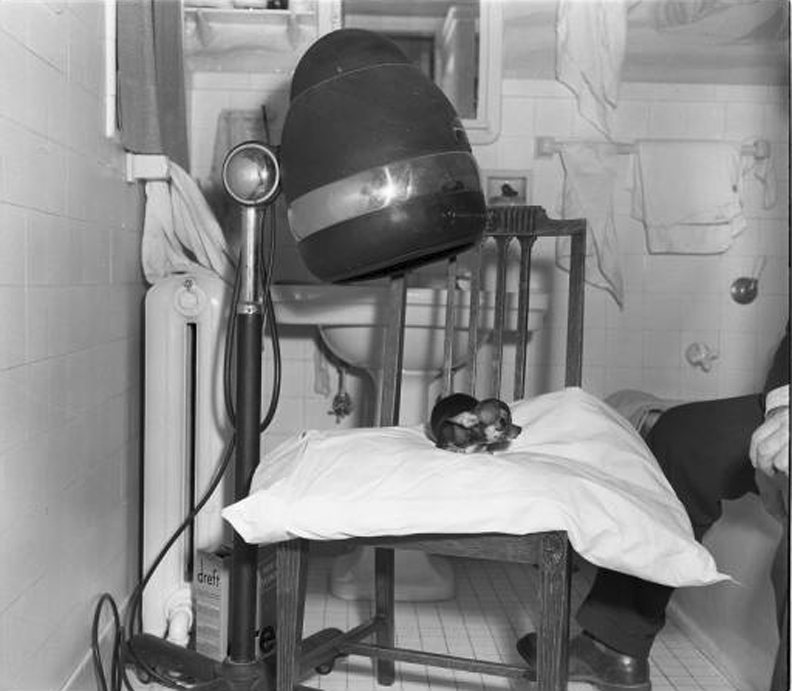
A small dog, Monca-Pu, sits on a padded chair under a hair dryer. A man sits next to the chair. Creator: Savage, John (1903-1989). Publisher: The Durham Museum. Date: February 1953.
Strange Events
Subsequent to the bedazzled pooches’ publicity stunts, another very peculiar article ran in March of 1953. A burning cross was evidently left flaming in front of Mrs. Kellogg’s home. The article identified her “Mrs. Mark Woodward Kellogg, owner of Monca-Pu.” Firemen extinguished the blaze and the Omaha Police took the cross into evidence. Evidently the gas-soaked cross, made of old lumber, was lit afire by either “pranksters or by some one incensed by the story of Monca-Pu’s jewelry,” Mysterious Margaret reasoned. Late at night she again phoned in another incident where someone had attempted to burn a fiery cross in her yard. This was a real headscratcher. I just looked at the ceiling of my office and tried to understand. The next fall of 1954, the World Herald reported burglars were frightened away from the home of Mrs. Margaret Kellogg at 5601 Farnam after “household staff” turned on the yard floodlights at 3:30am following noises. The prowlers had “jimmied the French windows open” when the light frightened them away.
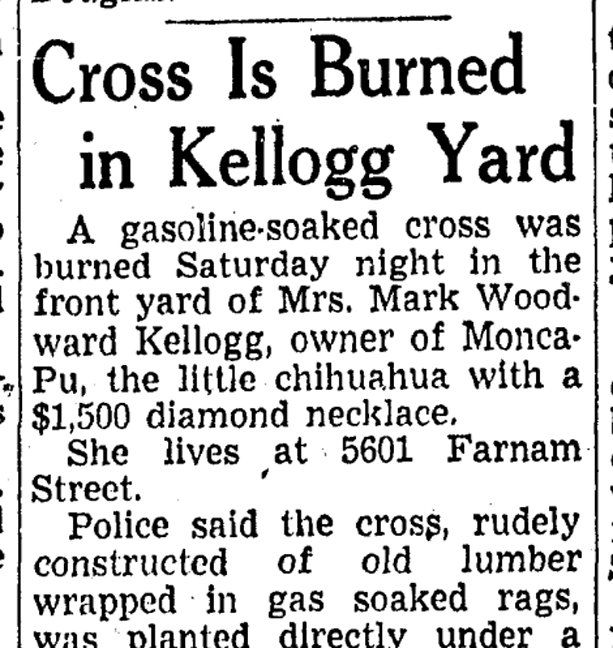
Jewelry Heist
In October of 1955 one of Omaha’s biggest jewel thefts had occurred at 5601 Farnam. The women of the home described a terrifying splintering crash and the thud of running feet on carpeted stairs. “Within minutes, two masked men had threatened four women in the house at 5601 Farnam and forced the occupant, Mrs. Margaret Kellogg to open a bedroom safe at gunpoint. From it they scooped valuable jewelry and an estimated 15 thousand dollars cash. They fled, a single shot from the gun of a teen-aged neighbor the only outward tip-off to the major crime.” Kellogg was quoted as saying there was “no use in crying over it.” She was just glad no one was hurt.
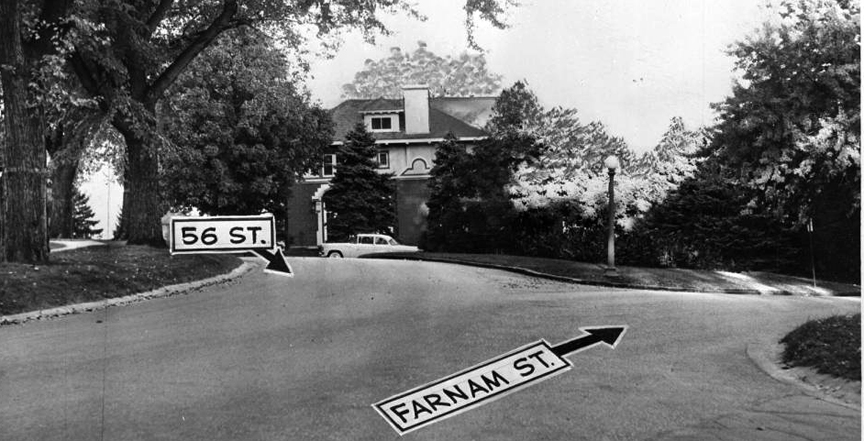
Kellogg Crime photo used in the papers to illustrate the crime and where the home is situated to the 56th and Farnam crossover. Creator: Savage, John (1903-1989). Publisher: The Durham Museum.
The news made a point of Mysterious Margaret’s lack of outward emotion as she described the events of the night. Two “masked” men actually wore nylon stockings over their heads. We can all assume this was not a pleasant sight for an even more traumatic home invasion. The burglar alarm was turned off. Miss Hamernich, the live-in nursemaid took responsibility for that decision. Mysterious Margaret’s friend, Gladys Rohrs, of 3304 Davenport, was anticipated to leave shortly and that is why the alarm was not set. The two were in Margaret’s wing on the north side of the house; they were playing with the dogs and watching television.
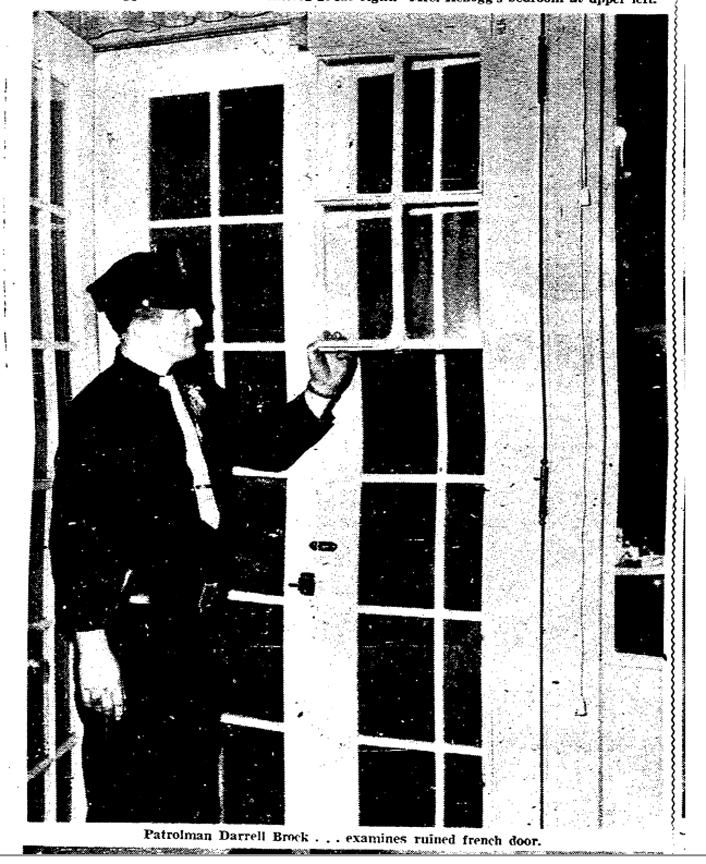
“Ruined French Doors.” Officer Darrell Brock was seen inspecting the doors of the northern marble floored sunroom, where the bandits entered the home. It was suspected early on that Mrs. Kellogg’s diamond jewelry photos from years previous had drawn the thieves out. Almost like a Kim Kardashian shaming. Even little Monca-Pu’s diamond necklace was stolen in the haul.
The bandits would storm upstairs as the four women came out into the second floor hall to see what the racket was. When the men made their plans known, they were forceful but visibly nervous. Gladys Rohr was somehow able to slip away and phone the police at the neighbors. Our Margaret would tell the press she thought of getting her “two loaded .38 caliber pistols in my dresser drawer.” Instead she was marched at gunpoint to her safe where she watched the fellow clean out the huge box. She reported 125 thousand dollars worth of jewelry was housed there. I suppose Margaret wouldn’t be Mysterious Margaret if she didn’t brag to the police that the bandits missed $500 in her purse and $2.50 in cribbage money on her dresser. She also flexed her arm for the reporter, stating, “Feel my muscle. That’s why they were afraid of me.” What a gal.
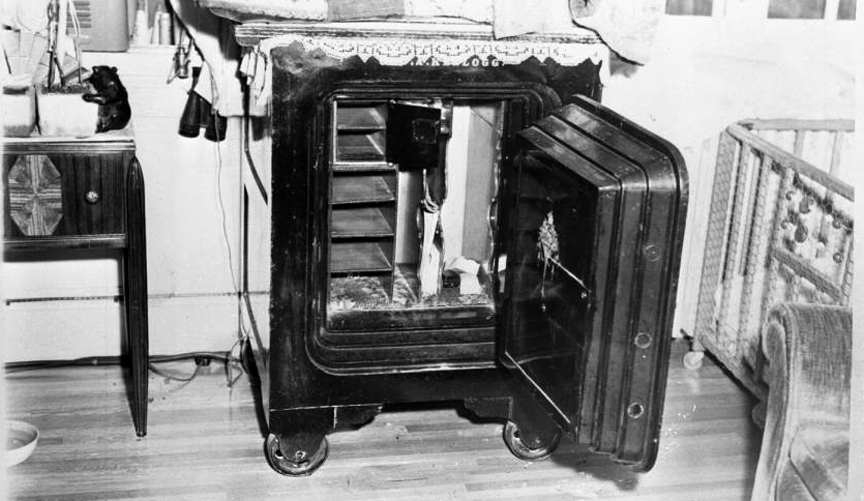
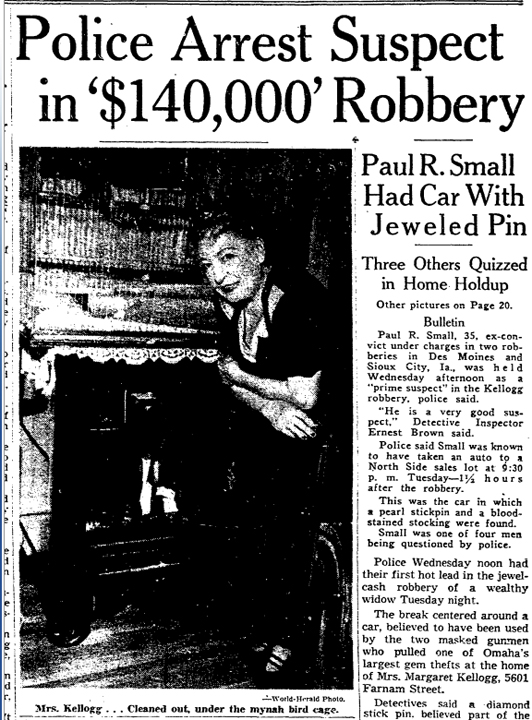
October 19, 1955. Mrs. Kellogg next to the empty safe under the mynah birdcage. It was from this article that I would learn Mrs. Kellogg, 58, described herself “as a former movie bit player many years back.”
Paul R. Small was arrested a short time later due in large part to Margaret’s explicit description of “his long, skinny, bony, white hands.” When Small died in a local hospital in 1976 at the age of 55, he was labeled “the central figure in the celebrated Margaret Kellogg robbery.” No doubt having followed him to his grave, Small was said to have been convicted of the cash and jewel robbery, worth an estimated $125,000 to $175,000 and given a 15 year sentence, later paroled in 1965. When released he would remarry, raise five children, work as a truck driver and was known as a quiet, law abiding family man.
A Clash
The strangest tale only got stranger when County Assessor Joe Stolinski brought Mrs. Margaret into court for only claiming two thousand some dollars in personal effects on her 1955 return and $5,700 in cash. Stolinski wanted her personal property evaluation to be increased to $187,5000 including penalties. The number would take into account the purported robbery total. In the back and forth exposed in the press, Mrs. Margaret’s jewel-cash robbery was “less than 40 thousand dollars” according to her attorney, Abel Shotwell. The County Board hearing was continued and continued. At one point a “mystery man” evidently ordered an expensive bouquet for the county commissioners delivered during their weekly meeting. The rumored extravagant bouquet was accompanied with a card carrying the name of “Margaret Kellogg,” although she vehemently denied having order the “floral masterpiece.” I wasn’t so sure. In a moment of exasperation Mysterious Margaret was quoted saying, “Somebody was trying to pull a funny. I’m not that damn dumb. Why should I send flowers to men I’ve never met? I’m too old to be paging men. I’m not sending flowers to women, either. I’m getting so I hate people.”
Honestly I didn’t know what or whom I believed. Ultimately the County Board decided to put a valuation of 125 thousand dollars on the personal property of Mrs. Margaret. By the time the robbery case of Paul R. Small went to trial, a court reporter woefully read the testimony of Mysterious Margaret. Her physician testified she was unable to appear in court because she had cancer. Things were not looking good for our leading lady.
A Favorite Neighbor
The 1956 City Directory revealed that one of my favorite Omaha writers, B. F. Sylvester (Benjamin Sylvester), author of West Farnam Story was living at 5602 Farnam, catty corner from Mrs. Margaret. His posh inner ring memoir on the Gold Coast, “the last capital of Omaha Society” opened my eyes to the upper crust of early Omaha. Mr. Sylvester was the World Herald editor, later a freelance writer. Omaha Famous Ed Miller, of the Mills Cereal Empire, originally built this home. The fine, high-pitched 1928 English Tudor was always a favorite of mine as I inched down Farnam Street. The peace sign “0” of the address was as unexpected as a wink from an older gentleman. I won’t soon forget. Unfortunately 5602 Farnam was demolished in 2014 when the owners of 5502 Farnam, a door to the east, bought the property. There is large privet hedge around both lots now, a new drive poured, although the presumed in-ground pool or large English garden never emerged.
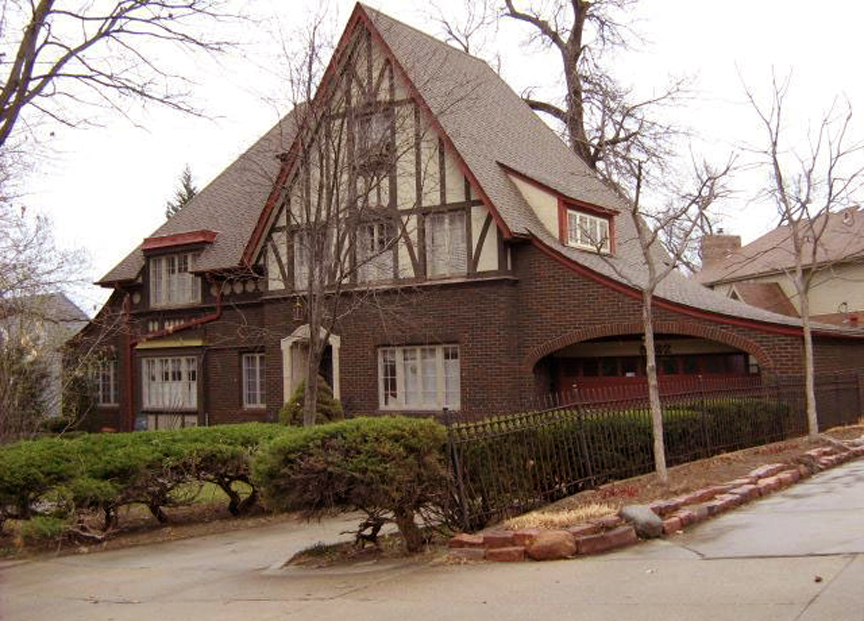
5602 Farnam. Mr. Sylvester referenced the 56th and Farnam cross over, “the hullabaloo of the highway at 5602 Farnam Street…” Photo from the Douglas County Assessor site.
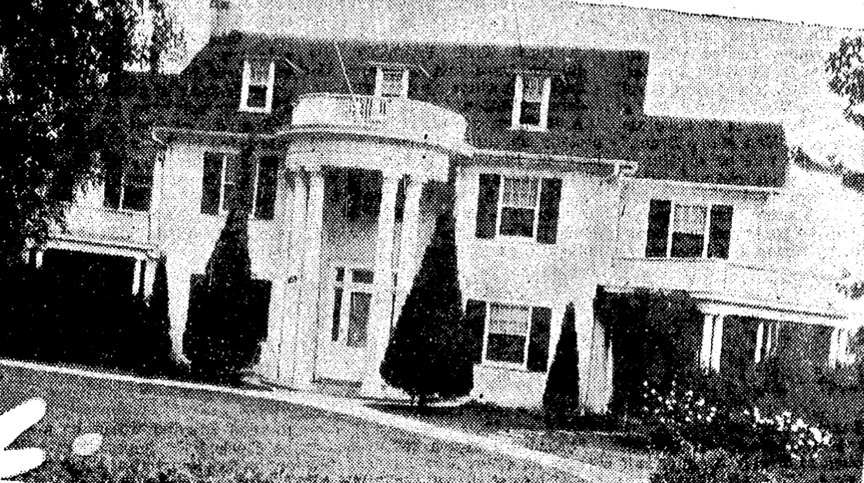
Beautiful 5502 Farnam. For the record I named 5502 Farnam “Butter Crumb” years ago, for it’s cool, pale, buttery frosting exterior. The home was originally built in the early 1920s for the Uehling family. Mr. U. was president of the North American National Insurance Company. Historic photo from the OWH.
The Will
On January 27, 1957 Mrs. Margaret died in her 5601 Farnam home after having been ill for several months with cancer. She was most well known as the “fabulous central figure in the 1955 jewel robbery” but we know she was Always a Character. Her will was as complicated and intriguing as her life. Her distinct will made plain the luxurious care of three of her dogs and the immediate death of a fourth dog. Miss Mae Hamernich, Mrs. Margaret’s long time nurse and companion was made custodian of the three Chihuahua dogs in return for “The Kellogg Mansion,” the plush furnishings, a 25 thousand dollar trust fund and all of her Earthly jewels.
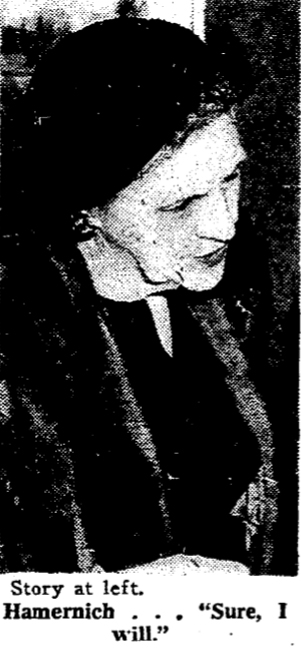
Photo of Miss Hamernich… “Sure I will.”
Use of the home was contingent upon Miss Hamernich’s care for the dogs—Monca-Pu, the diamond wearing smallest of the trio, Dolly and Boo-Boo. The fourth dog, Buddy, “is to be put to death after my death,” the will stipulated. Buddy was rumored to be “the mean one” and a “one-woman dog.” Gulp. “The mynah birds may be disposed of,” the will provided. What happened to the monkeys? Don’t ask, I told myself. The dogs, however, were to reside in the Kellogg home. The will provided one hundred dollars per month for their maintenance. Miss Hamernich was to receive an additional four hundred dollars a month from the trust fund. “Not contingent upon her care for the animals is a bequest of all of Mrs. Kellogg’s jewelry.” Mrs. Wilma Arthur, Los Angeles, identified as a “former employee and friend” was left 25 thousand dollars in trust. William Paul Hand was named administrator of the estate. Mr. Hand, I just love to say that, was a friend and apparent farm manager for the Kelloggs back in Missouri Valley for 20 years. Hamernich promised to fulfill her employer’s wishes regarding the three dogs.
Mrs. Kellogg left her brother Emil Vlasnik $10,000, if he could be found. They say Emil dropped from contact with his family in about 1942. He worked a number of odd jobs, rumored to be unmarried. Emil was last known to be a cab driver in Los Angeles, having sent an elusive postcard to an auntie back in Omaha stating he “was going out to sea” and would make contact later. He never did. This started a massive manhunt for the brother in order to award his inheritance. Unfortunately he was already dead. Sister Rose Vlasnik Van Wert sister would die shortly thereafter-in 1958. She was the wealthy widow of an oil man and upon her death left a $5,220,000 estate in Dallas, Texas whereupon 43 Vlasnik and Vakoc family members came forward filing objections over Mrs. Van Wert leaving her money to her maid, doctor, accountant and various charities.
Leading Light Aside
This single clue of the missing brother tipped me off that Mysterious Margaret began life as a Margaret Vlasnik. If Margaret Kellogg was to be believed, she had been a bit part actor in California. That is where I tracked her. I found a marriage license from August 30, 1913, when Miss Margaret Vlasnik married Leonard George Woodward in San Francisco. He was a 27-year-old cook, she was 22. The two had cohabitated before marrying. Mysterious Margaret and Leonard George Woodward would later divorce. He died in 1944 in San Francisco; meanwhile Margaret was back in Omaha living as Mrs. Mark Woodward. I am not sure if Mark had been Leonard’s nickname or if it just sounded dreamier. Perplexing as it was, he never lived in Omaha to my knowledge.
According to the 1910 United States Census, Miss Margaret was 13 years of age and living with her family in California. She was born approximately in 1897. Margaret’s parents were Frank Vlasnik and Josephine Vocoach (sometimes Vakoch or Vakoc). Margaret was born in Nebraska, although the family lived in California throughout her early years. The Vlasnik and Vakoc families were said to have settled around Verdigre in Knox County, later Cherry County. As aforementioned, Margaret had two siblings, Emil and Rose. Father Frank Vlasnik was born in Czechoslovakia. According to Detective Martha Grenzeback, Margaret’s mother ran a boarding house in California, stating she was a widow. Personally I did not find that Frank Vlasnik died until 1945. I am not sure if they were estranged but Mother Josephine evidently came to live with Mysterious Margaret down on Omaha’s Park Avenue in 1942. The history books are filled with enterprising woman who ran boarding houses under the guise of long suffering widow. Detective Martha Grenzeback would find the same clues of early Margaret Vlasnik, which only gave more confidence I was on solid ground.
Will Complications
The City-County Health Director got involved with Margaret Woodward Kellogg’s highly publicized will when tipped off by the Humane Society Executive Director, stating “a person keeping more than two dogs in a residence must have a kennel license.” Apparently after 1960 kennels were to be moved out of residential areas. To complicate matters, this rule pertained only to those pups already licensed and the law did not accept new applications. Kellogg had applied while still alive but was turned down. “Miss Hamernich will not be able to get a license either under the law.” The city said that she could keep two dogs in the 5601 Farnam but not three. If she removed one of the dogs, she would be violating Mrs. Kellogg’s will. I had never heard of such a thing.
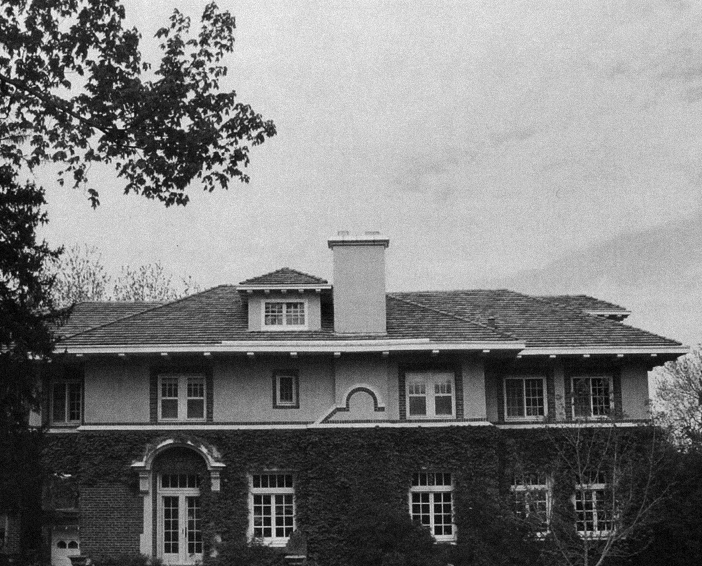
From the absent name, I assumed Dog Dolly had been put out but apparently they resolved the issue of the three dogs living together. Things went from bad to worse when it was announced Miss Mae Hamernich abandoned the house, forfeited her right to lifetime use of the mansion and left the baby cribbed dogs for Denver, Colorado. William Paul Hand then filed a lawsuit alleging that Miss Hamernich refused to comply with the provisions of the will and she flew the gilded coop. He asked the District Court to award him clear title to the property. Miss Hamernich who receives four hundred dollars a month under Mrs. Kellogg’s will, couldn’t afford to keep up the place. William and Velma Virginia Hand moved into the home and began caring for the dogs according to Mrs. Kellogg’s wishes. I had a lot of fun imagining monogram designs of the name V. V. Hand while in the Deeds Office.
The county court decree in April of 1958 finally revealed Mrs. Kellogg’s estate was worth $641,239—roughly five million dollars by today’s standards. One month later I found a notice for estate sale of Margaret Kellogg to be sold at public auction from her mansion at 5601 Farnam Street.
The Auction
Mysterious Margaret’s auction, as her life, attracted the LookeyLous of Big Small Town Omaha. Three hundred some persons stood on the driveways of the large home at 5601 Farnam. One of the first times auctioned was the “red plaster fire plug, which had belonged to Monca-Pu, the favorite of the three.” Many of the crowd “ignored the auction and went on sightseeing tours around the grounds, ignoring the auctioneers’ please to keep off the geraniums. Others craned their necks to peek in the windows of the house.” It sounds like there were many Miss Cassettes on hand that day. Can you imagine the pandemonium of this great house, soaked through with lore?” The crowd was apparently kept out of the house until six p.m. when the bids were taken on the expensive furnishings. Everyone was excited about the large nude. Lincolnite Merle Johnson made a name for himself by offering $105 for the nude from the estate of Mysterious Margaret. He would also take quite a bit of harassment for this purchase. I thought it was wonderful. I couldn’t help but wonder where this painting is now?
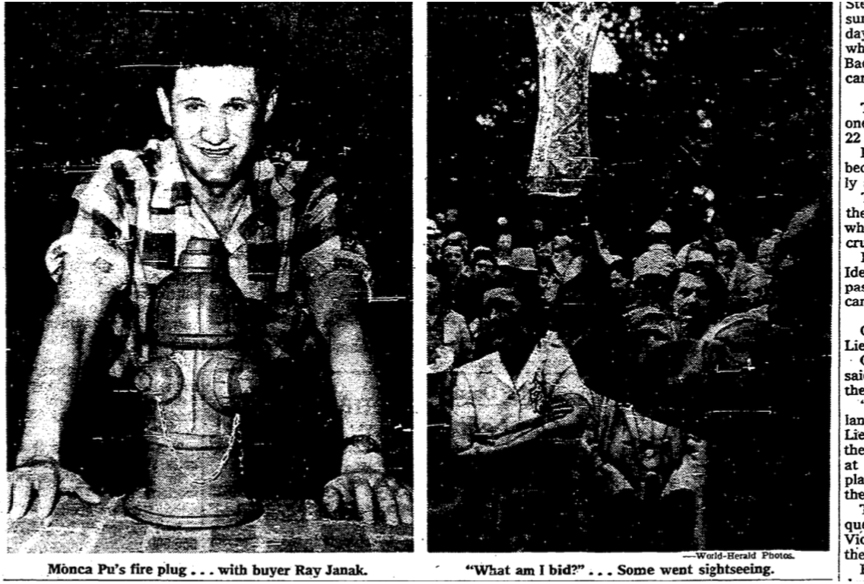
Luminary Neighbor
By 1958 the Warren Buffet family had moved in to the George Payne house at 5505 Farnam Street, two doors down from 5601 Farnam. The Payne home was thought to be one of the most beautiful abodes in Omaha, with gorgeous ground when it was established in the early 1920s. The flirty eye window of the third floor will wink at you if you stare at her long enough. Buffett is known as the “Oracle of Omaha”—an American business magnate and generous philanthropist. Considered one of the most successful investors in the world, Warren Buffet continues to live quietly in this Evanston home without much fanfare—except during Berkshire Hathaway Shareholder Meeting in Omaha when every Tom, Dick and Harry makes their Annual Pilgrimage to the home. Watch out for those folks taking selfies in the middle of Farnam! They are merely in a state of rapture. Recent years have understandably found a smart solid gate and hedge springing up before Buffett’s door front.
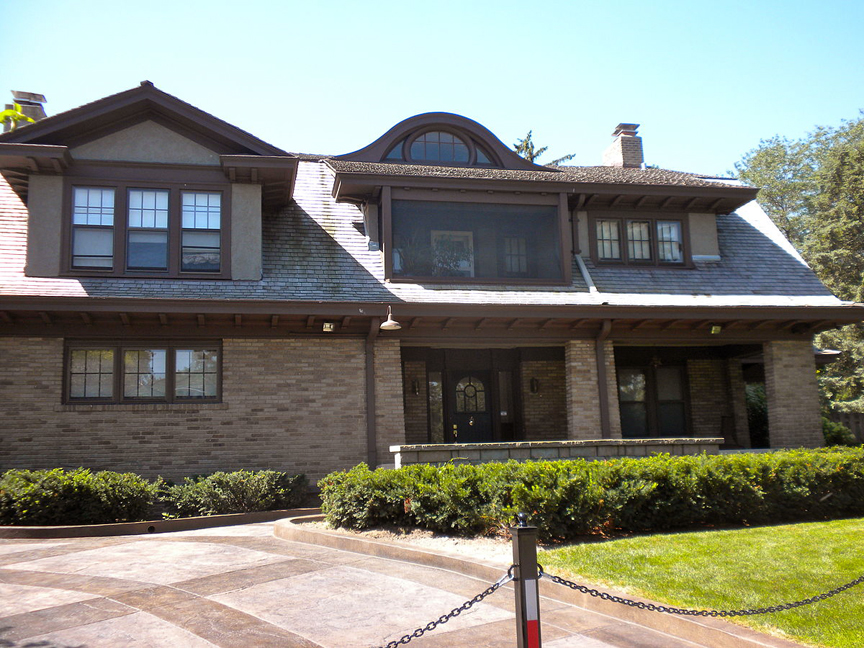
5505 Farnam Street. Warren Buffett’s lovely home, purportedly built in 1921.
The Hippie House
William Hand, executor of the estate of Mysterious Margaret Woodward Kellogg sold 5601 Farnam to a private family in August of 1958. This family would reside in the home until a curious sale. They put the home on the market under a land contract in 1969. This would allow the buyer to make payments to the seller, until the purchase price is paid in full. I was cautiously looking out for the clues to the “nunnery in the sixties” legend. Now this was all very strange but so exciting. The current homeowner had heard through the daughter of the 94-year- old next-door neighbor woman that there was a sect of nuns who lived in 5601 Farnam for a while. She said the neighborhood referred to it as “The Hippie House” long ago and that the nuns all sunbathed in the back garden. She said the nuns lived in the attic. It seemed unbelievable that there were That Many Nuns that they would have to live in the attic as if the sunbathing scenario wasn’t odd enough. But I figure nuns need their vitamin D also. Who was I to judge? They did not say this, per se, but when one uses the term “hippie” I assume they are referencing a free-spirited manner of dress, a mellow attitude or a liberal political viewpoint. Accordingly this phrasing did not conform to my perception of a convent of nuns from that time period.
In point of fact, none of this Catholic nun business was congruent with the evidence I discovered of the well to do doctor’s family that inhabited the home from 1958 until 1970. As it turned out, the sixties mythos was just off by a decade. Sure enough, the City Directory would reveal the Good Shepherd Sisters were linked to the fine home in 1972. I was simply stunned. Once again the home’s oral history held true. I would begin to dig backwards.
The Nuns
Saint Euphrasia was a 19th Century Frenchwoman who founded the Sisters of the Good Shepherd and worked in service of the poor of India. Known as a “gracious rebel” who “didn’t go along with traditional ways,” I began to wonder if these Good Shepherd nuns were possibly “hippie-ish?” The deed disclosed the biggest hint—the owner of the home was actually under the Girls Town Inc name. Girls Town, before 1967 was known as the Good Shepherd Home and offered a full educational program for its girls. I considered this a breakthrough.
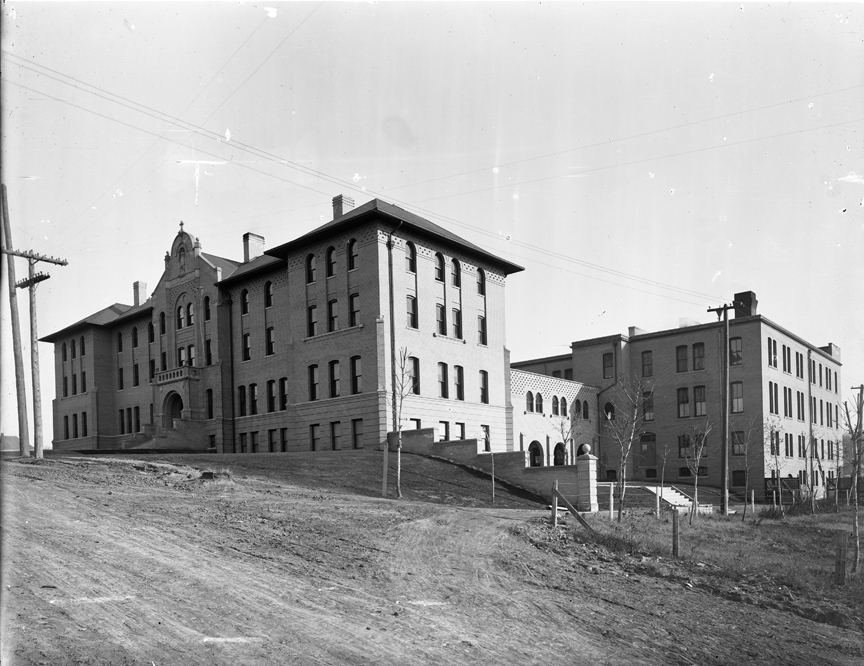
An exterior view of Good Shepherd Convent. 653 South 40th Street. Creator: Bostwick, Louis (1868-1943) and Frohardt, Homer (1885-1972). Publisher: The Durham Museum. June 25, 1913.
In 1971, the Good Shepherd Convent was at 653 South 40th Street, according to Sister Serena’s obituary, (Anna Kanjer at birth). The Order of the Good Shepherd had been strictly cloistered until 1970-71. The Sisters of the Cross were another cloistered-contemplative branch of the Good Shepherd Sisters. Good Shepherd Sisters developed a plan for the new Girls Town, leaving 653 South 40th Street in April of 1972 because it “lacked the natural homelike atmosphere” that they hoped to create on eleven acres– the southwest corner of West Maple Road and Interstate 680. Then I found announcement that the Girls Town institution would close its high school and the corporation was liquidated. I dug and I dug until I was going crazy….but then I found it. A secret Girls Town Program.
The Good Shepherd Sisters also ran a crisis and diagnostic center for girls. Sister Mary Gabriel, program director said, “the Walden Center will be moved from 653 South 40th Street to a residence owned by the Sisters.” The group home provided supervision and counseling to “troubled girls who cannot adjust to a normal home life.” This crisis center address was kept under wraps, understandably and “provided short term crisis help and psychiatric and educational evaluation to 125 girls in 10 months. Five girls typically lived in the residence at once with a live-in staff of five. I was able to track that the order previously had an undisclosed group home at 511 South 45th Street. Another hidden group home was called Mary House. A number of these neighborhood homes were listed in their records but the 5601 Farnam was not acknowledged. As a safe haven for troubled girls, it would make sense that this gracious home was never recognized for its contribution. The built-in chest of drawers and mirrors I had found in the attic all began to make sense. I was touched that waves and waves of young women could find reprise in this sunlit mansion, for however long–a chance of lifetime that not many will ever know.
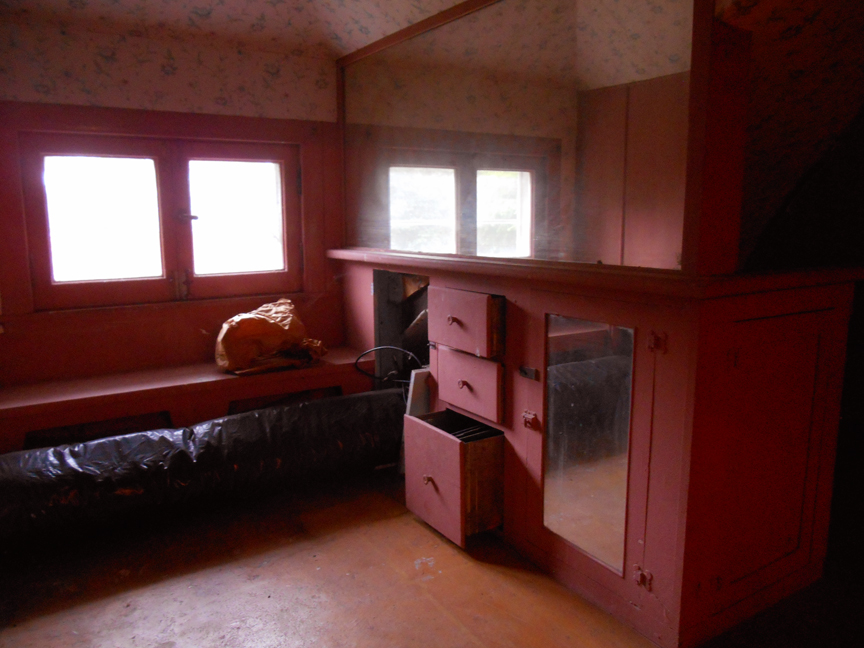
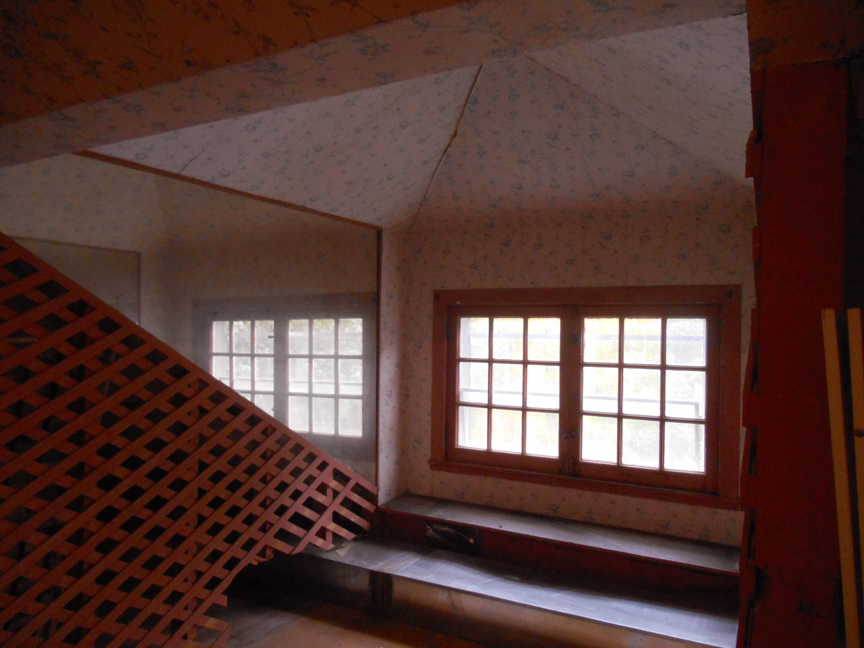

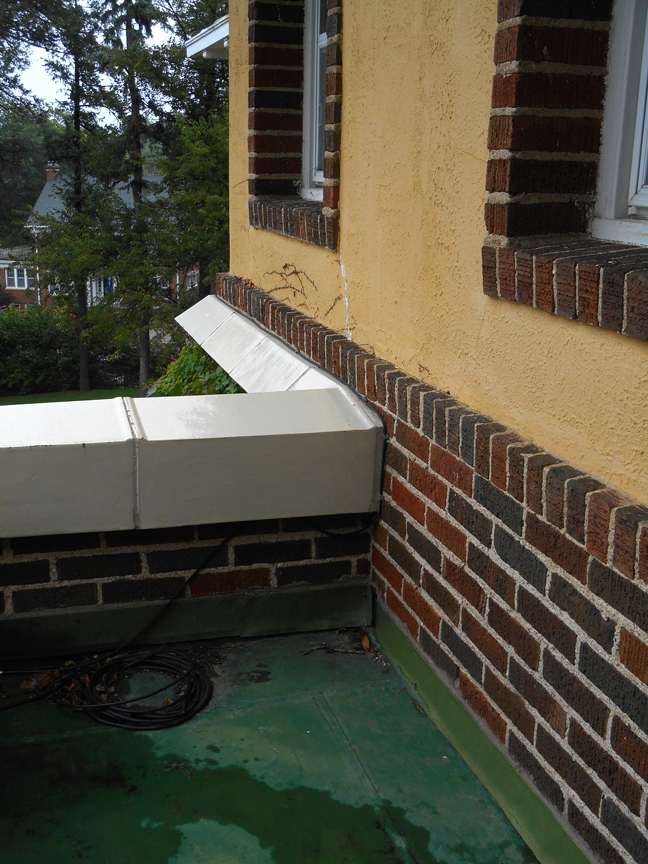
A private west-facing balcony on the second floor, off of the original servant’s quarters. Rumored to be the escape where maids and housegirls of the past had taken their secret smokebreaks. Had any of the Good Shepherd teens or nuns stolen a few moments on the copper covered overlook? I am sure they must have. The view of Memorial Park is gorgeous.
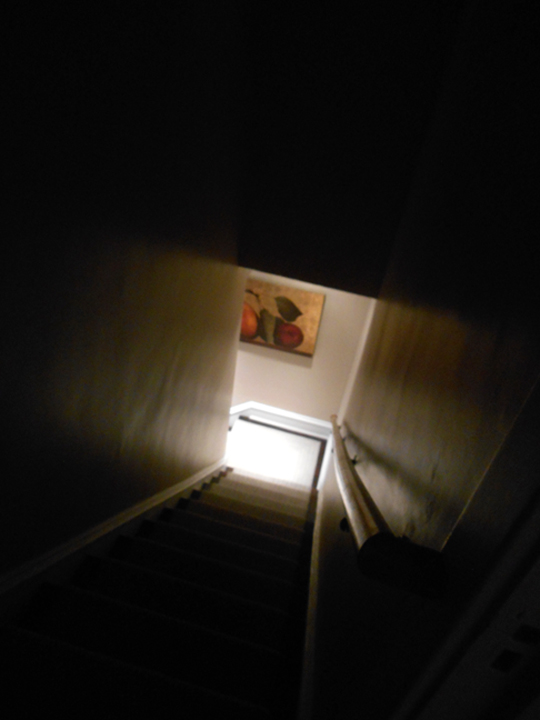
The servants’ backstairs off of the kitchen. I like to imagine the girls running up and down in these hideaways.
When one takes into account what teens looked like from 1970-1972, the pieces of the puzzle began to come together. They very likely looked hippie-ish to older, conservative neighbors. I am sure the girls did enjoy sunning themselves in the expansive gardens of 5601 Farnam. I can see how the neighbors might have whispered and named them hippies with all of the attached colorful folklore to match. It was all so amazing.
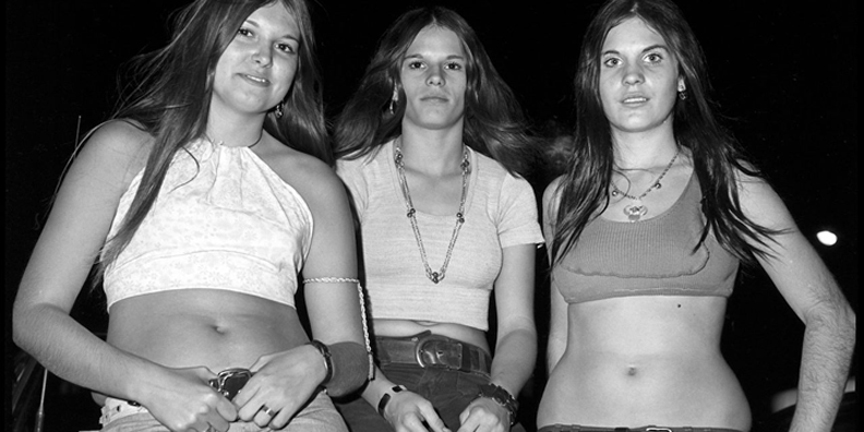
Sweetheart Roller Skating Rink – 1972-1973 – Six Mile Creek, Hillsborough County (Tampa) FL Bill Yates diligently photographed the Sweetheart Roller Rink of Tampa Florida. 1972. This photo captures my stereotypical view of the early 1970s girl, although not from Omaha.
My mind wandered and I could see the various girls on the side porch where the Huffs had once posed for Louis Bostwich, where party goers had stepped out for breath of fresh air from dancing, where the bandits had broken in the French doors. I felt my spirit lift up above the tilted Spruce and smile down on the view of the teens sitting cross-legged by the mosaic fountain, their sharing of secrets by the flower beds and maybe a hushed exit strategy planned for getaway night to meet cute boys at Memorial Park. Knowing the hearts and minds of young girls as I do, that is my own addition to the saga of 5601 Farnam.
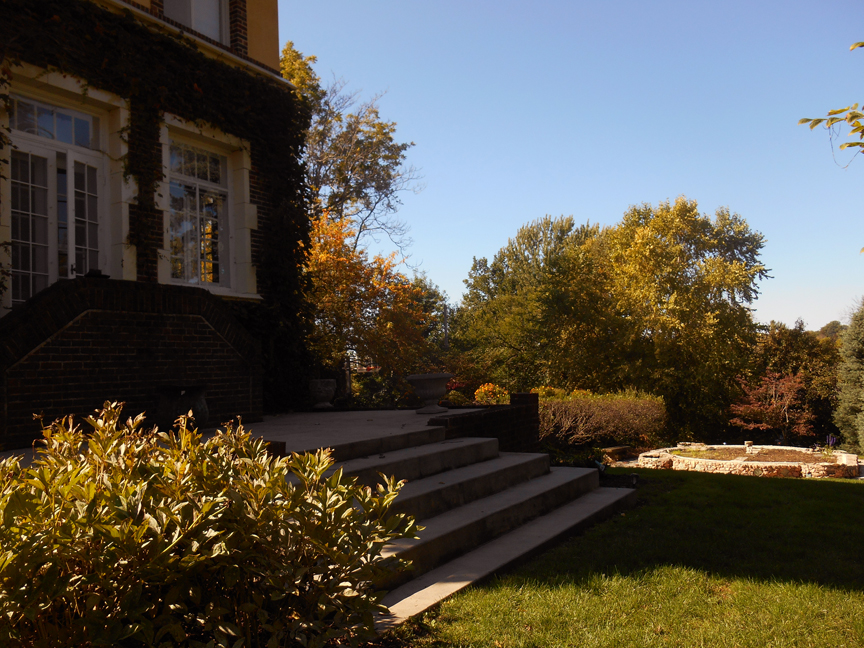
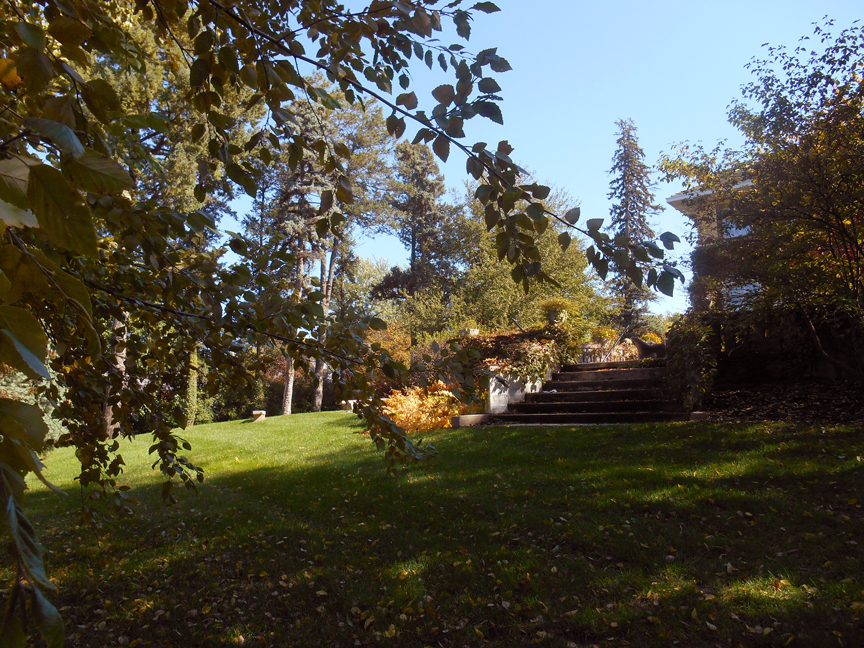


An advertisement from 1970 boasted of two large fishponds on the grounds.
The Rest of the Story
By June of 1972 the home was on the market once again, described as a “Massive Brick Offering.” Had the neighbors of Evanston reached their end rope for the Hippie House group home or had the Good Shepherd sisters decided to tighten the belt? Another private (lucky) family would purchase 5601 Farnam in August of 1972. The 1983 City Directory would show 5601 Farnam as “vacant” but when I doubled back to the 302 South 56th Street address, the family I knew owned the home was listed. The address had officially transitioned. The historic building permit lent solid confirmation the address had changed on April 20, 1982. I didn’t know why exactly.
The stately home would offer residence to four more families through the decades until the current owners acquired 302 South 56th Street in 2018. Potentially a number of you have stepped foot in this showplace of beauty, for in the 1990s, 302 South 56th Street was featured in “A Sunday in Dundee,” the Dundee-Memorial Park fifth annual historic homes tour. Eager guests could ride in horse-drawn carriages, tour a short list of Dundee’s finest homes and visit a display of antique automobiles. The home of our fixation was described as, “An elegant Spanish Colonial Revival estate with a brick and stucco exterior and classic tile roof. Interior highlights include transomed French windows and doors, and brick motor court and porte-cochere. The first floor palm room has a marble floor, hand-painted frescoes and columns, and windows on three sides. Restored antiques also are featured.”
2018 Interior Lookbook
What follows are the incredible photos from the 2018 sale. The professional images were taken from the CBS site to show both the intact historic features and the new remodeling measures. I do wonder what happened to all of those remarkable chandeliers. The new boasting of the 24 ft living room ceiling had me question if the height was taken up, hence the modern recessed lights. I am not usually a fan of recessed bulbs but this is all very well done. The glorious woodwork is so well preserved. The built-ins. The marble solarium-sunroom with breathtaking marble floor, granite wall-mounted fountain and marble plant box, reminds me of a mini Joslyn Museum fountain room. The centrally located dining room still has the original chandelier and sconces preserved. There was a large kitchen remodel, combining the original butler’s pantry and the kitchen proper to the formal dining room—off to the south is the mudroom with service entry. Extra care and I can’t imagine what expense, was taken to match the new built-in cabinets of the kitchen to the original set. It is inspired! The bedrooms and adjoining bathrooms are well-proportioned and planned with beauty and utility in mind. The master bath, in particular is a marvel. This was the original servants’ quarters where the previously mentioned balcony walks out of. This room, now an adjoining master closet to the bathroom once connected to the back servants’ stairs. To tour her rooms was so engaging. I was beside myself. I will stop rambling now and let you see for yourself.
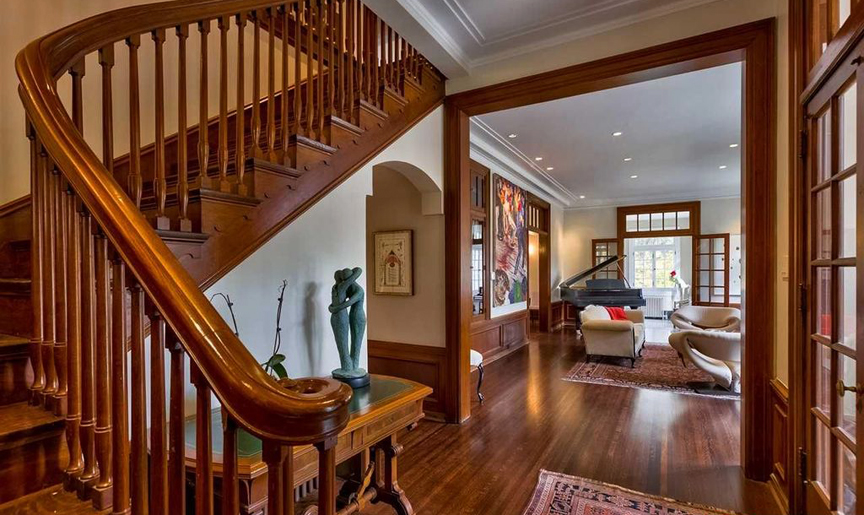

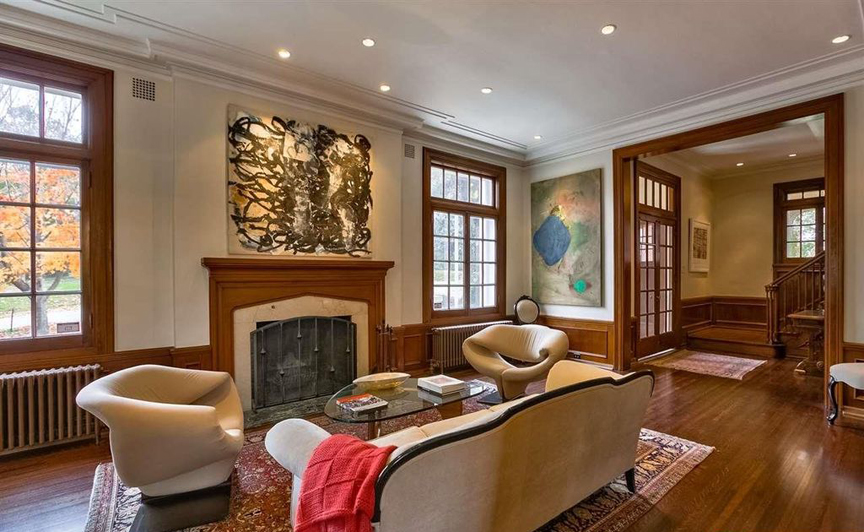
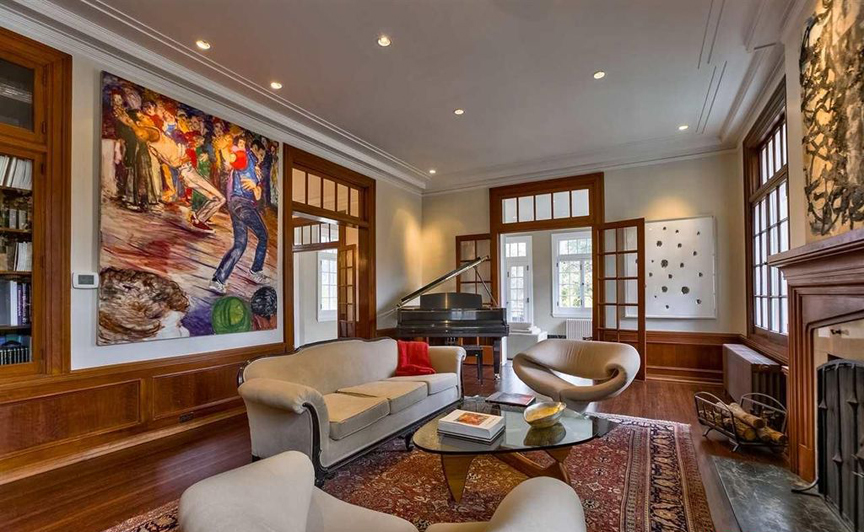



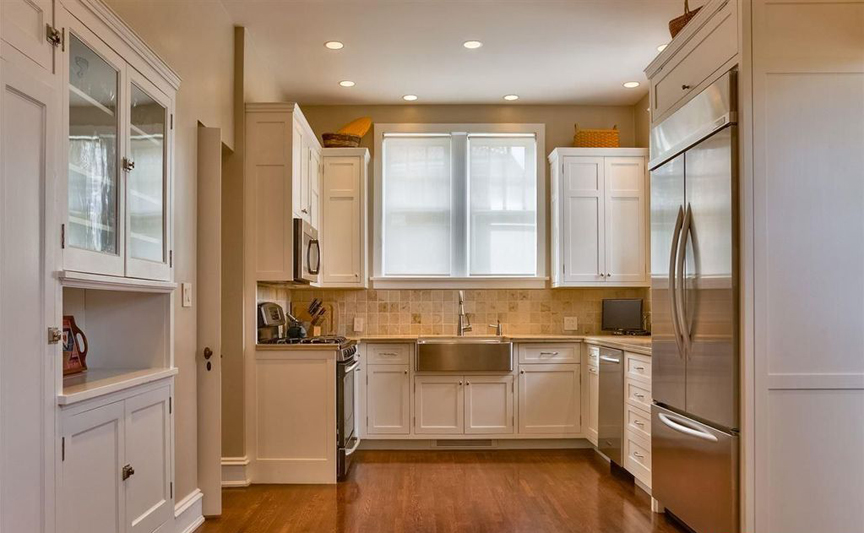
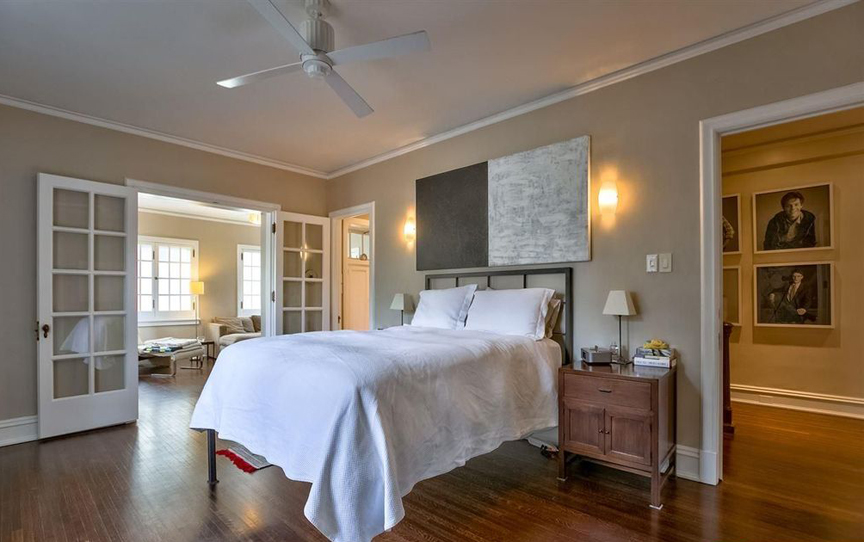


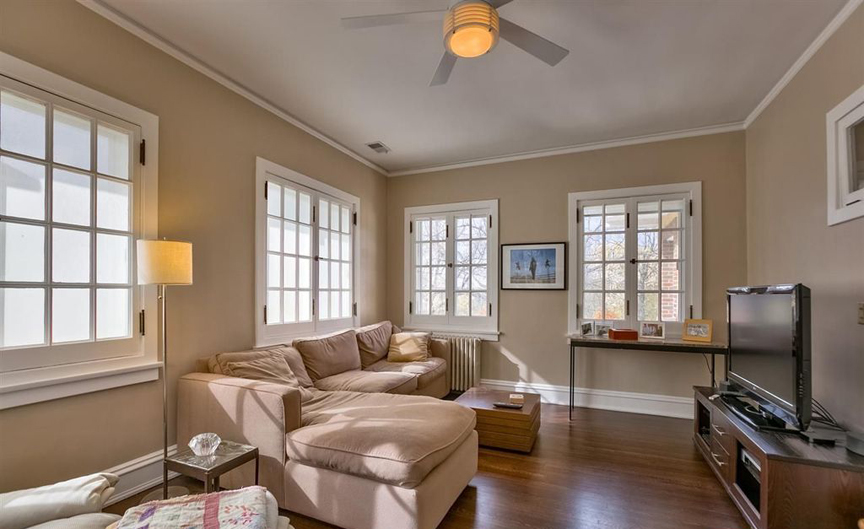
Her Epilogue
To ruminate on concepts found in The Architecture of Happiness by Alain de Botton, the beauty of 302 South 56th Street is elevated. De Botton’s vision is that architecture, specifically houses, can influence who we can be and he argues that ‘it is architecture’s task to stand as an eloquent reminder of our full potential.” I have been in plenty of beautiful homes, some larger and grander but they did not “feel” the way she feels. She is talkative and welcoming. She is ageless. I am not altogether sure how she does it. Her light and positioning to the sun links the home to the out of doors—a modern concept, not a feature or sensation often found in older homes. Her spaciousness of rooms and ceiling height offers clear-minded thinking and repose. Her layout of rooms offers an interconnectedness—ensuring that a family is never too far from one another. Although awe-inspiring, she is without pretension. McArthur’s 302 South 56th Street accomplishment is an aesthete’s dream measure. Her mystery and rumored exploits…Where Hospitality Reigned.

I felt indebted to the long list of homeowners, the stewards of 5601 Farnam-302 South 56th Street who had taken such good care of her—who knew just how to add to her beauty and not change “too much.” To Mrs. McCarthy, the neighbor lady, without whom there might not be any historic lore of the home. I especially felt a kinship with the current owners for so generously sharing their home and her folklore with me and in turn, with all of Omaha. They knew they had a mystery on their hands. What an Omaha treasure! Thank you, special friends.
I welcome your feedback and comments on this treasured Omaha home, Dundee neighborhood and the historic Evanston Addition. Please share your additional clues to the story in the “Comments,” as we know more together. Everyone would love to read what you have to say and it makes the sharing of Omaha history more fun. I want to hear from you.
You can keep up with my latest investigations by joining my email group. Click on “Contact” then look for “Sign me up for the Newsletter!” Enter your email address. You will get sent email updates every time I have written a new article. Also feel free to join My Omaha Obsession on Facebook. Thank you, Omaha friends. Miss Cassette
© Miss Cassette and myomahaobsession, 2018. Unauthorized use and/or duplication of this material without express and written permission from this site’s author and/or owner is strictly prohibited. Excerpts and links may be used, provided that full and clear credit is given to Miss Cassette and myomahaobsession with appropriate and specific direction to the original content.
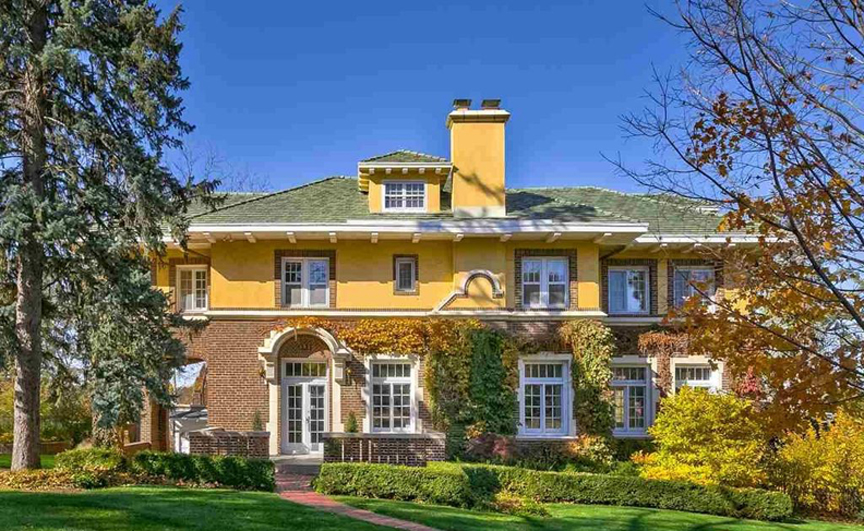
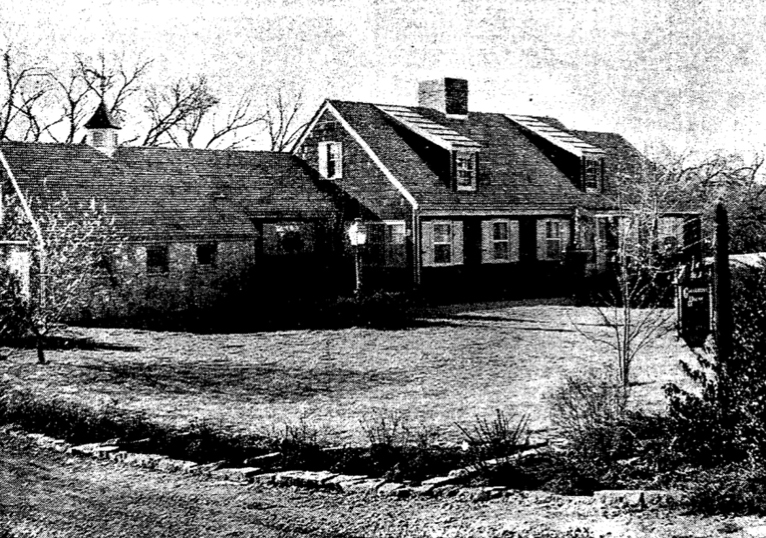
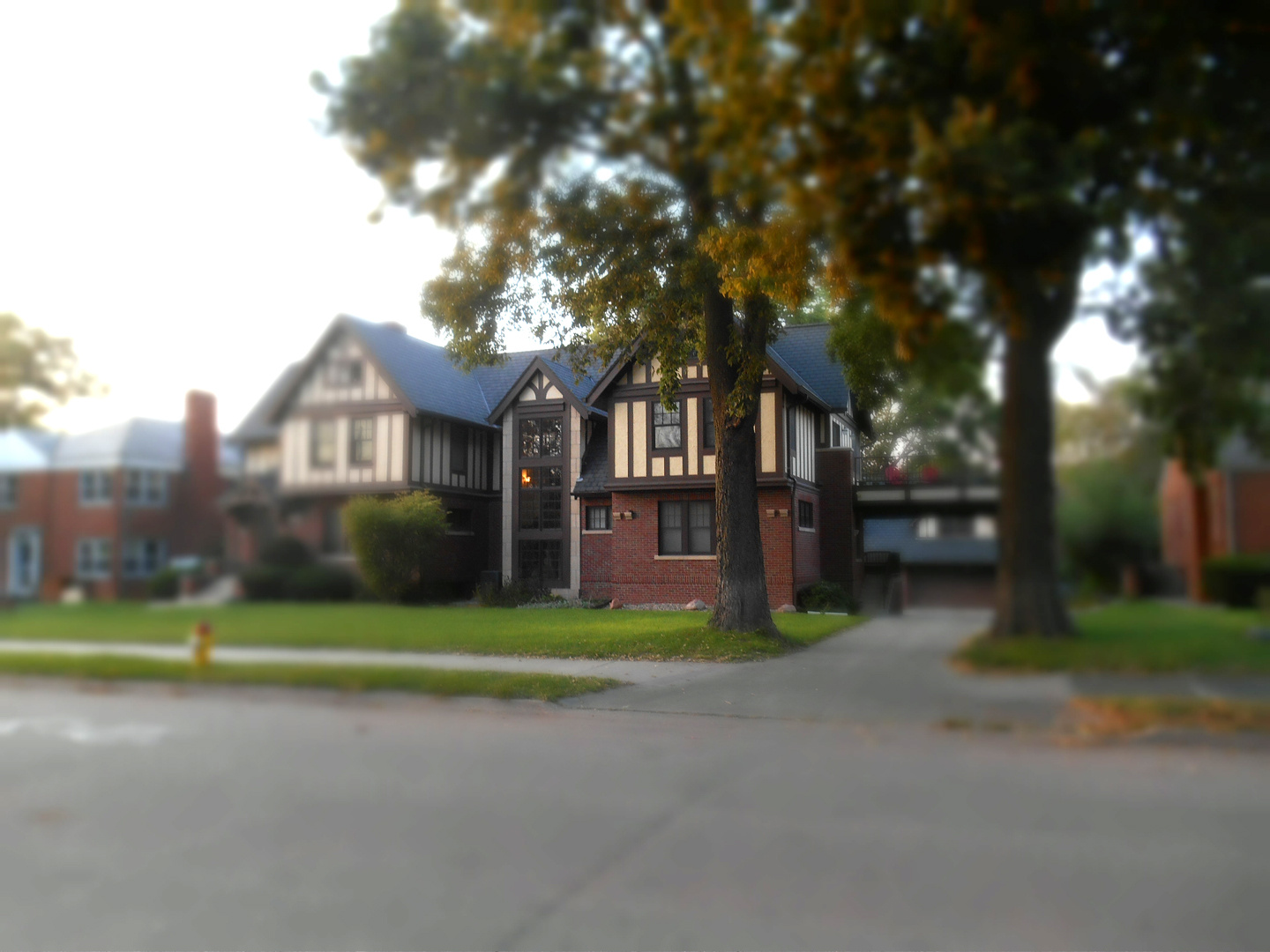
Merle Johnson? That nude intrigues me. I wonder what happened to it? My friend Bob Ammon might know. He had a friend named Merle. That was the 1980’s! Time just flies! I know a few people in the Lincoln arts community, being that I’m a half-baked artist who has tried to hide as working-class stiff all his life. The beauty of being Czech, bohemian and blessed with an artisan’s eye and hand with no interest in football makes this Omahan trapped in the Holy City of Lincoln decidedly unique. I was Navy Machinist’s Mate, play the piano, have a degree in History and absolutely hate Lincoln! My twin brother lives in Chalco. I don’t want the painting, I’m just curious. Its by a student of Eakins. Omaha is so much fun! Lincoln is so self-righteous and thieving! Dirty laundry in Lincoln is nice to uncover. Its too squeaky clean here.
I dream someone will come forward with the painting and a family story about it!
Ms. Cassette, thank you for sharing your investigations with us. I am also fascinated by old homes and the people who lived in them. In this case, I find I have a tiny connection to one of the people involved.
I lived in the Leetom apartment building (4914 Dodge) for over a decade and Mrs. Huff was my landlady. To become a tenant, one had to interview with Mrs. Huff which consisted of visiting her in her beautifully appointed, French provincial apartment and letting her determine if you were someone she wanted in her building. At this time, she was already 80+ years old. A petite lady who was sweet and kind and full of energy that belied her years. She said the buildings had belonged to her late husband and she didn’t have children. She was a lovely landlady and took great care of the property.
When I began to read this story and I realized these were the same Huffs, I started to try to place her among the family. Confusion reigned however because we tenants always called her Mrs. Huff but I believed her first name to be Lee! I know! I tried to fit her into the family but nothing made sense until the 1910 birthdate of Lena May Walford. She was the mistress! It’s hard to imagine her in that seemingly longstanding role because she was sort of “prim and proper” though still modern. She was quiet but always busy and always aware of what was going on with your apartment even when you thought she wasn’t paying attention. It was so great to learn more about her like the fact that she had been a nurse. I can’t imagine how mortified she must have been to be part of the air conditioner scandal. I found it sad that she seemed to have waited for Mr. Huff all those years but only had 4 years of marriage with him until his death in 1969 and then remained a widow until her own death. But I guess it also speaks to her being a very independent lady.
Mrs. Huff finally found living on the 2nd floor and maintenance of the property to be too much so she sold them and moved to a retirement situation around 1984. We were all sorry to see her leave. The property changed hands yet again before I left and both new owners were more interested in profit than the love of the buildings so the feeling of living in that little enclave changed quite a bit. I don’t know if you have ever been in these buildings but you would love them. There were 14 apartments and each had their own personality due to individual updates over the years but they were full of gorgeous original detail. It’s been around 15 years since I lived there so I don’t know how much of that amazing character remains.
I just wanted to share a little info about Mrs. Huff with you. I’m glad to know that even though she was apparently a mistress, she is buried in the Huff family plot so she was still considered family. Thanks again for all of your hard work and for sharing it with us.
This is sooo fabulous! Another piece of the puzzle. I saw that Tim Huff lived in those apartments all of the decades–so I wondered if Lena did after his death. You are so great to share this. I sure wish I had a photo of her. Thank you so much!
We lived at 4920 Dodge from 1986 to 1988, Mrs Huff was also our landlady. We rented right before we married, during our interview to get the apartment we agreed that I would not move in until we were actually married. She was a fascinating women who took great pride in those apartments. We hated to leave, but our 1st baby was on its way so on to home ownership!
Hello, I love seeing the old photos. I can tell you that the back fountain area has been rocked over since I lived there in the 70s!!! Definitely!!! I spent a lot of time reading and hanging our there in my teenage years. The fountain was deeper than the rock walls appear and sky blue in color. I can see the blue paint in some of the photos at the top of the interior rock ! It looks to me like the entire area was raised around the fountain, and that the rock was then added. I am positive about this.
Although they can’t be seen in the photos, the large back patio is enclosed with cinder type blocks. they are grown over with bushes now. In between each space in the cinder block stack, were fine statuettes. They were broken when we moved there, only pics remaining where they had been cemented in. They were very beautiful!!
Oops! I said Mrs. Huff left in 1984 but it was 1994. This story is confusing enough, no need to add any! Can you imagine maintaining a large, 100-year-old property at 84? She was amazing!
This is so great. Very interesting about wanting you to be married. What can you share about her being fascinating? Dying to know more!
I sent the article to my siblings and confirmed with my brother that the back fountain was not rocked over. The walls of the fountain were light blue, probably concrete. There were tiles on the ground, but no rock until after 1983. …so it was not put there by Japanese.
do you have any pictures of the old fountain?
We were told so many stories about the home that we didn’t know what to believe. Thank you for your article. It clarifies many mysteries.
About the 2005-2006 remodel, except for deletion of the maid’s room, no walls were moved or altered. The ceiling heights are original. Except for possibly the dining room chandelier, none of the chandeliers from your 1990s photos were original to the home, so we deleted the living room chandelier. We assumed that during the 1920s, the house was lit with lamps and sconces. One story told is that the driveway “planter” had a cage for birds and monkeys (hard to imagine, but Mrs. Kellogg…)
Hello, I was so hoping you would write in. What a tremendous job you did with the renovation and also the care you took to create “the file.” Just lovely. Thank you for the corrections. We would love to hear anything you would like to share. The planter cage image–Amazing.
For some strange reason, my step mother removed the original chandler, which was gorgeous, from the living room in the early 80’s . She sold it at a garage sale. She is the person who put fake brick over the fire place 🙁
My family lived in the home from 1972 until 1983. I have many memories… if you would like to talk reply back and let me know!
A fascinating story about this grand home so close to Warren Buffett’s home…And what a nice surprise to read in your early paragraphs above that my house at 38th and Jones, the Richard Evans Residence, is connected in some way!
Evans ran a very successful laundry and dry cleaning business. So when he and his family acquired those acres overlooking Memorial Park to build their new mansion, they were “movin’ on Uhh UP!” just like the Jeffersons when they moved from Queens to Manhattan, huh?
I love the 38th and Jones area! I spent much time walking the neighborhood from living in various apartments around the Gold Coast over the years. It is so fun to put it all together. Thanks for writing in….another piece of the puzzle.
How very disappointing! I grew up near 52nd & Farnam, and the Kellogg mansion was a thing of mystery and, well, magic, to us kids. The rumor circulated among us that she was a witch. And then there was that monkey, always in its cage during the warmer months. How I wanted to go and feed it and talk to it. Of course, I was forbidden, so, of course, one sunny afternoon I went down Farnam on my bicycle (that was a beautiful ride!) and started up on the lawn toward the cage. I don’t think I went more than two steps when the creature began screaming and chattering and a loud voice commanded me to “leave at once.” I never tried again!
Then, when I was in high school I went to a party there. Of course, the murals, which were in much better shape then, were the center of attention! We were thrilled to “know” that this had been a brothel! Ah, another of youth’s mysteries dispelled!
And now, I’m doing a fair amount of on-screen work. You see me fleetingly in Daddy’s Home 2 and the second segment of the 3rd series of Daredevil on Netflix; and more prominently in the third season of Difficult People on Hulu (I’m the psychiatrist in the first segment); and as Ruth in Island Zero, a great horror film for the season, available on most streaming services. The script is by Tess Gerritsen.
I remember hearing of Mrs. Kellogg and Monca Poo and the monkey when I was a child. Those who spoke of her assumed she owned the Kellogg Hotel downtown. It was said that she had a robot, which appeared human, to pace about her mansion to “keep guard”. I knew a man who was set up in an apartment overlooking the Mason family’s cafe near 29 and Farnam because they so feared that Paul Small would rob the place they wanted a “spy” on hand.
Miss Cassette,
There was a pastor named Fr. Joseph Suneg who was at St. Margaret Mary (SMM) for 46 years (1923-1969). He played a significant role in the development of the parish so I decided to make a Wikipedia page about him. I hope to eventually also write his biography: https://en.wikipedia.org/wiki/Joseph_A._Suneg
One of the interesting parts of his background was the friendship he maintained with Fr. Flanagan at Boys Town. When SMM was founded in 1919, the parish boundaries were established as 50th street in Dundee all the way out to 168th and Dodge, which included Boys Town. The two immigrant priests collaborated on a number of things over the years, including Fr. Flangan’s effort to relocate Japanese-Americans who were interned at camp Manzanar in California. Boys Town’s archivist Tom Lynch and the OWH have written about it:
https://www.boystown.org/locations/nebraska/news-and-events/Pages/during-wwII-boys-town-housed-japanese-americans-escaping-forced-internment.aspx
Through my research, I was able to discover some letters written by Flanagan to the Camp Manzanar director, asking if he’d agree to send some internees to Boys Town for employment. It was a strategy Flanagan was using as cover for what he considered a grave injustice. Once in Omaha, he settled them at Boys Town until they could get established. Fr. Suneg helped Flanagan by asking some of his parishioners to offer jobs to these Japanese-Americans. Once such person was federal Judge James Donohoe who lived in Fairacres at the time. He hired Ray Uchiyamada and Barbara Soneto, who later were married by Flanagan. Soneto was a parishioner at SMM at the time, thus the Suneg connection.
Getting back to your story, I haven’t been able to confirm whether Albert and Agnes Schantz of 302 S 56th Street were parishioners at SMM in the 1940s, but they lived a couple blocks away. I will go up to the church’s physical archive to see if I can find a parish directory from the 1940s to confirm, but it is important to note that some of the Omaha residents of Japanese descent (in the mid 20th century) have connections to the Camp Manzanar story. Perhaps giving credence to the rumor of Japanese-Americans living in the 302 basement. The Japanese font on the mural also would be an indication… have you found someone to translate?
Anyway, if I can confirm the Schantz’s were parishioners at SMM in the 1940s, it might connect the 302 Japanese-American basement residents to Flanagan visa-vi Suneg.
I’ll let you know what I find.
I really don’t have anything to add to the story of this beautiful home but I actually spent some time in the house. Back in 1987 or 88 (can’t remember exactly), my girlfriend at the time lived a few houses away and knew the owners. She was asked to house-sit while the owners were out of town a couple of times, and of course I volunteered to stay as well. I can remember exploring this fascinating home and marveling at the murals in the basement, the woodwork and the beautiful marble. If I remember correctly, most of the chandeliers were still there.
Thanks for the great story and keep up the good work!
Wonderful Story. Love happy endings.
I attended Creighton Prep. I was very ill as a Freshman and missed so many days of school that I had to attend a Summer session in order to have sufficient days of attendance to advance to Sophomore year.
I’d ride a bus to Prep from our home near 45th and Center Street. On my way home, as an attempt to gain back some strength after being so ill the previous Winter, I’d walk home.
My path took me through Memorial,Park and then Dundee. On several occasions as I made my way East on Farnam St. I’d see an older couple – I was 14 or so and every adult looked old to me – in their yard, working on flowers and stuff like that.
The man would always say hello to me and on one occasion gave me a glass of iced tea to drink. He asked me why I was walking by so often and I told him my story. He told me to get my grades up and study. Seemed like a very nice man.
Years later I realized I had been talking with Warren Buffet.
My Family owned this house from 1972 to 1982. I enjoyed living there and the house was always interesting and fascinating. It was definitely haunted…all ten of us experienced the antics of what we called “Mrs. Kellogg.” Thank you for all the information! My mother researched the house for a class project at UNO, so we knew a little about the place, but I am delighted to have stumbled across this article and to have learned so much more.
I remember loving the big elm trees, and remember being horrified when the elm disease came through in around 1973 and we had to have all of them cut down. It was fun to see photos of when they were small trees just getting started…
Yesterday I forwarded the article to my siblings. The single comment that came back from one of my sisters was “I wonder if the ghosts are still there?” She is serious! So much activity when we lived there!
Felicia- I live in the house now. What are some of y0our ghost stories?
You mention 304 56th, home of Pearl Rockfellow. Her father H.G. Rockfellow, first man to successfully bring through the mail by pony express from Sidney to Deadwood in the winter of ’76 and ’77 and worked in the post office there. He died 1917. His wife Emma Rockfellow died in her daughter Pearl’s home, 304 56th. Emma road in the orig. stage coach during the 75th Anniv. Jubilee in Omaha Nov. 5-7 of 1929. There are lots of articles about this.
I thoroughly enjoyed this article. I lived 17 years in 303 So 56th! I am one of the two Barta twins and six children of Frank R Barta. Our older brother Frank R Barta Jr passed away Oct 15 3023. How we loved this house and the neighborhood from Elmwood to Memorial. We all went to St Margaret Mary’s. And both my twin sister and I were married in St Marg’s Church. We lived in 303 So 56th from 1949 till 1968 tho I married and left in 1965. Was just walking the neighborhood on a trip to Omaha last Monday & Tuesday and found your article in pondering my memories and looking up Omaha on my cell???? I remember my parents talking about the Kellogg robbery and saw the bejeweled dogs and heard about them. We used to cut through Mrs Kellogg’s yard to visit childhood friend who lived at 304!